Para finalizar nossa jornada pelo Canadá, vamos visitar essa cidade encantadora e super charmosa, que nos faz voltar no tempo com suas muralhas e castelos!!! Me acompanha nesse tour pelos principais pontos turísticos e depois me conta se realmente não é “A Cereja do Bolo em Quebec” !!!
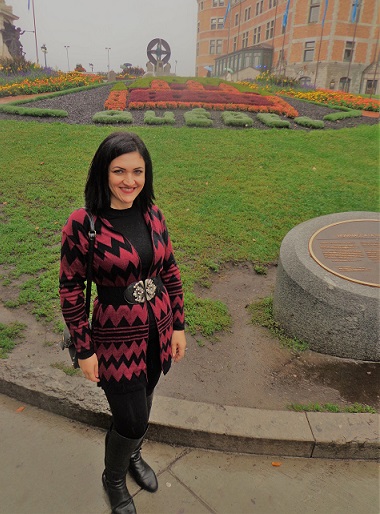
A Cidade de Quebec (que é a capital da Província de Quebec) fica a aproximadamente 800 km de Toronto, dá pra ir de carro, ônibus e trem, mas nós optamos pelo avião para ganharmos tempo (o voo até o Aeroporto Internacional Jean-Lesage de Quebec (YQB) dura cerca de 2 horas). A distância do Aeroporto até o centro da cidade fica em torno de 17km e pegamos um Uber para o Hotel Château Laurier que é muito bonito e tem uma excelente localização (fica em 1220 Place George V Ouest), bem próximo a “Grande Allée” (point do agito noturno), aos “Plains of Abraham”, e é possível ir a pé até a Velha Quebec. Para maiores informações sobre o Hotel é conferir no site: https://www.hotelchateaulaurier.com/.
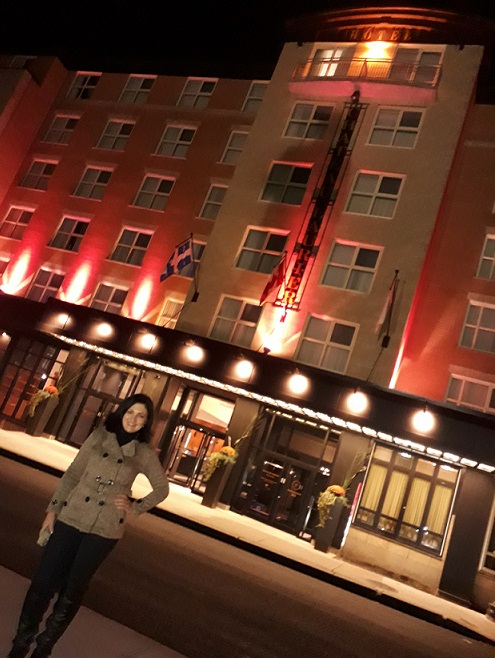
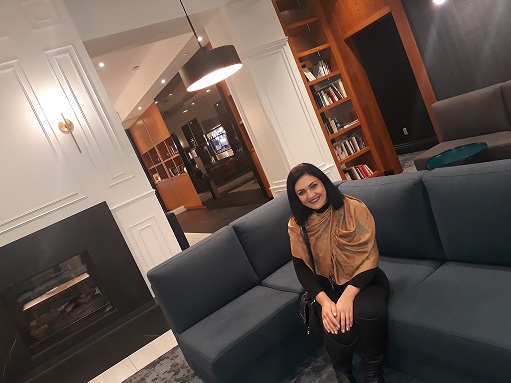
Hall do Hotel Château Laurier 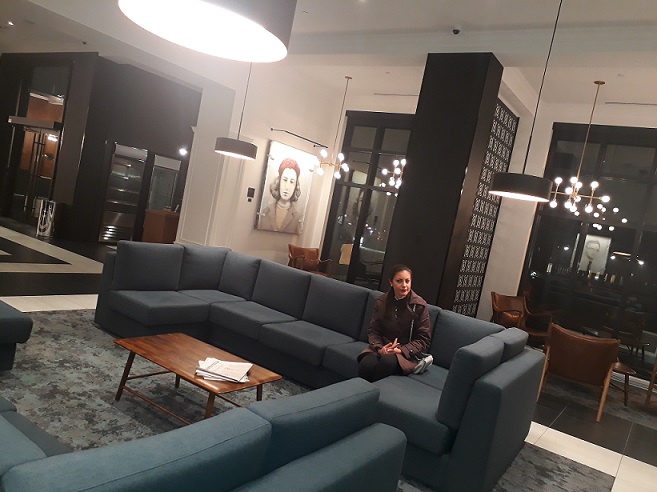

No quarto… 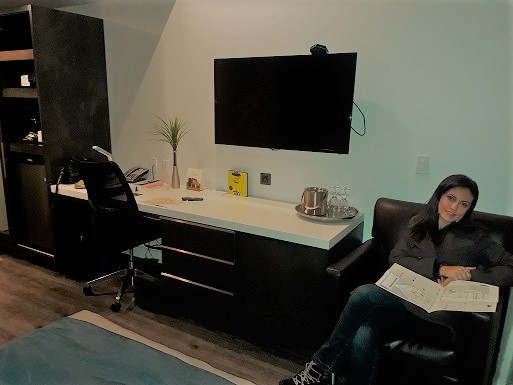
E minha irmã estudando o mapa da Cidade….
Agora sim, vamos começar nosso tour por um dos principais cartões postais de Quebec, o Château Frontenac, que é um hotel castelo belíssimo projetado pelo arquiteto Bruce Price, inspirado nos castelos medievais do Vale do Loire na França e inaugurado em 1893. A construção foi feita pela companhia ferroviária Canadian Pacific Railway para incentivar o turismo da alta sociedade que utilizaria seus trens para chegar até o hotel. Este foi sendo reformado ao longo dos anos e contando com mais de 600 quartos atualmente.
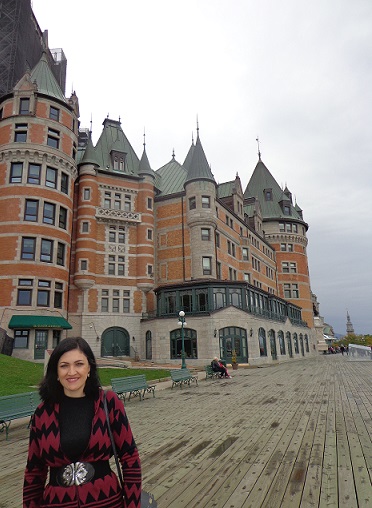

Mesmo que você não fique hospedado no hotel, é possível fazer uma visita guiada ao Château Frontenac para conhecer as histórias e todo o interior do castelo. Os ingressos estão à venda no próprio hotel e custam CAD$ 21 (para adultos), mas tem desconto para crianças e combo familiar. O tour é com hora marcada, dura cerca de uma hora e é todo temático, até o nosso Guia veio caracterizado de Jean Talon, o primeiro intendente da Nova França.
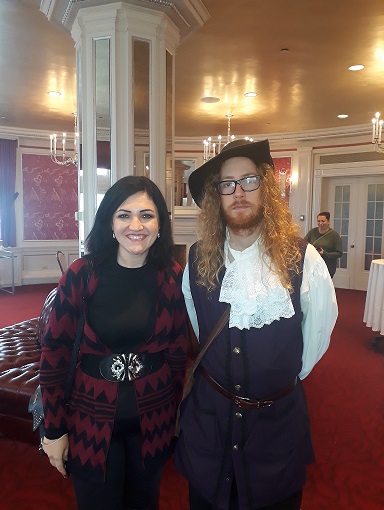
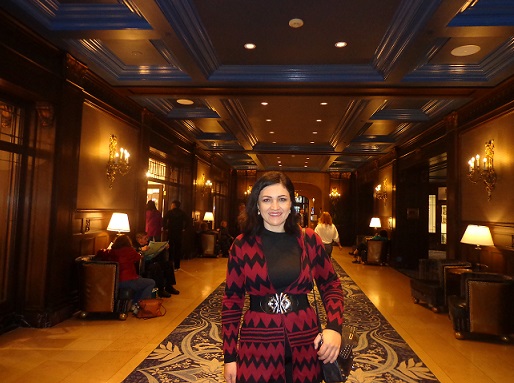
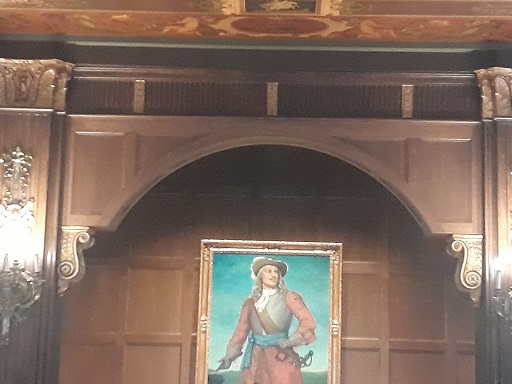
Logo no Hall de Entrada do Château Frontenac nos deparamos com um quadro com o retrato de Louis de Buade, o Conde de Frontenac, patrono e primeiro morador do Hotel, que também foi governador da Nova França.
Continuando nosso tour pelo Château Frontenac, visitamos o Bar, que tem esse lindo detalhe no teto e uma adega bem servida.

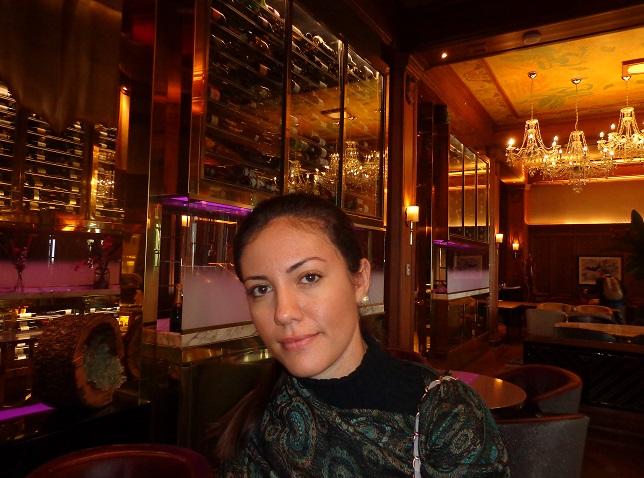
No Bar do… 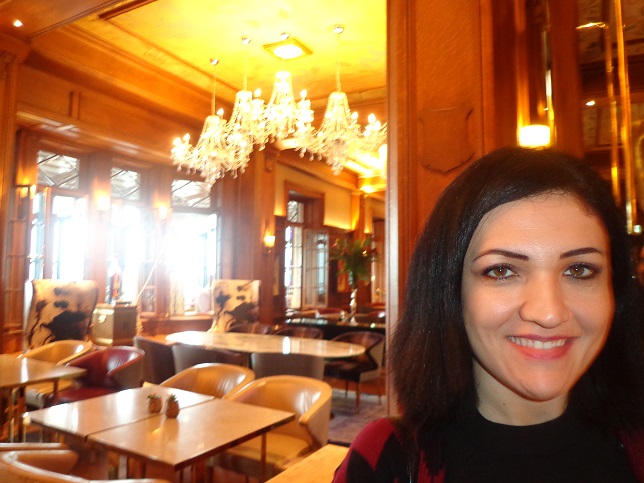
Château Frontenac
Depois seguimos para o Salon Rose (Salão Rosa), onde antigamente as mulheres costumavam se reunir, enquanto os homens discutiam negócios em outras salas. Atualmente é locado para festas, assim como o Salle de Bal (BallRoom) ou Salão de Bailes, que também é belíssimo.
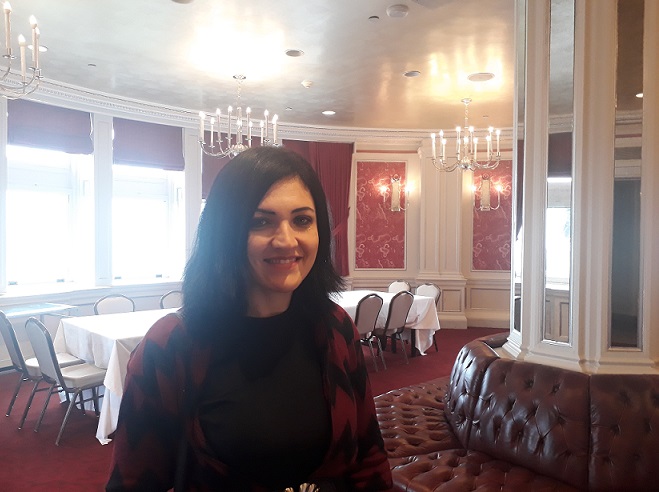
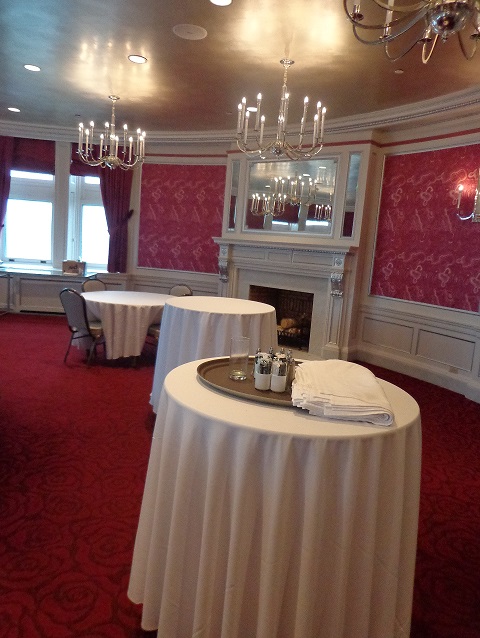
Salão Rosa
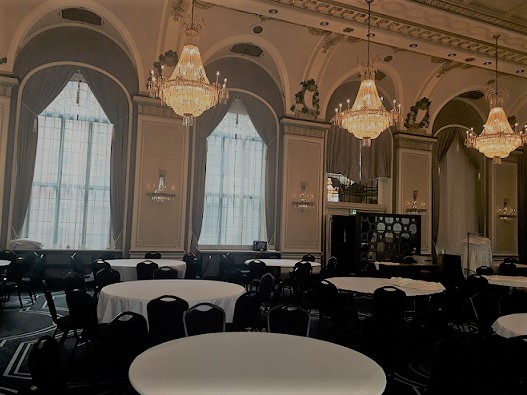
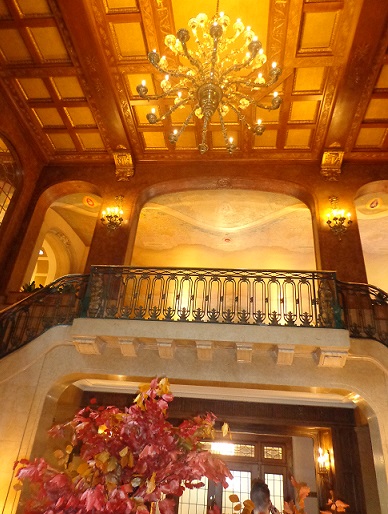
Falando em festas, muitos casais vão fotografar lá no dia do casamento, principalmente nesse balcão (já imaginou que chic uma festa de casamento no Château Frontenac?)

A arquitetura e o charme do Château Frontenac já conquistaram várias celebridades, que se hospedaram lá como a Rainha Elizabeth II, o cineasta Alfred Hitchcock, entre outros, com direito a uma reunião “secreta” entre o Presidente dos Estados Unidos Franklin Roosevelt, o Primeiro Ministro Britânico Winston Churchill e o Primeiro-Ministro Canadense William Lyon Mackenzie King.
No tour guiado ao Château Frontenac também visitamos uma Exposição com Utensílios de Época e conhecemos a história da xará da minha irmã Ane, a Anne de La Grange-Trianon, a Condessa de Frontenac, que fazia parte da aristocracia francesa e se casou com Louis de Buade (Conde de Frontenac), mesmo contra a vontade de seu pai que não aceitava o relacionamento por questões financeiras, ela continuou na França e ele veio para Quebec, passaram por um grande trauma com a morte do filho do casal. Ela não chegou a visitar Quebec, mas ajudou a cidade em questões diplomáticas na França. Quando Conde Frontenac morreu, mandou levar seu coração (o órgão mesmo) pra ela, que se recusou a receber o presente por não ter o que fazer com ele. Personalidade forte da Condessa, não é mesmo?
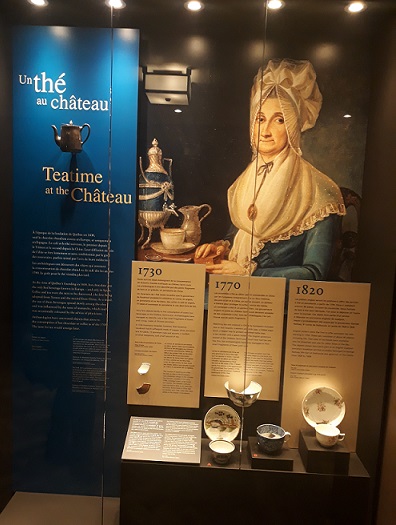
Utensílios de Época 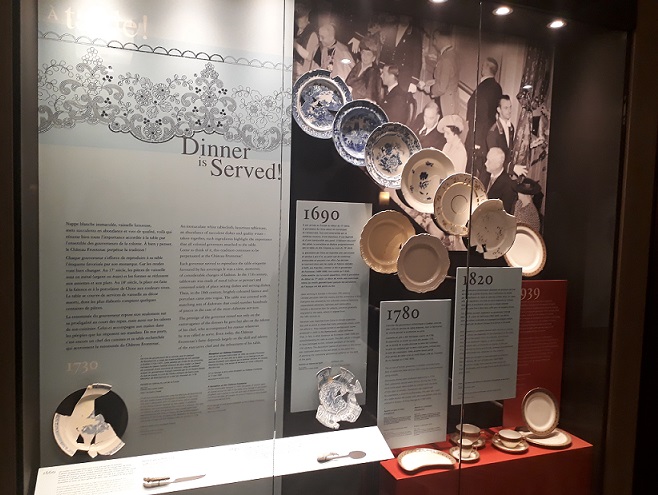
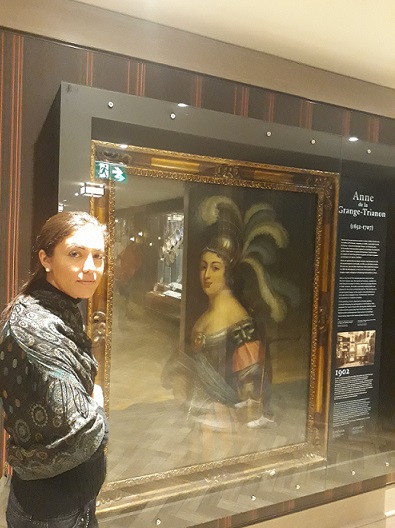
Vale muito a pena conhecer o Château Frontenac, seja com a visita guiada interna ou com o visual externo, tanto durante o dia, quanto à noite, você vai garantir lindas fotos pra guardar de recordação e postar nas redes sociais. Para saber mais informações sobre é só acessar o site: https://www.fairmont.com/frontenac-quebec/
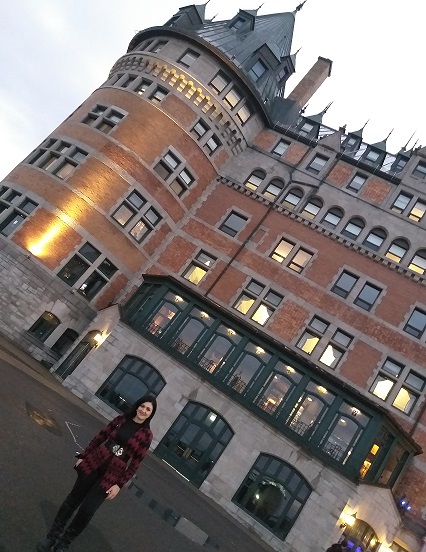
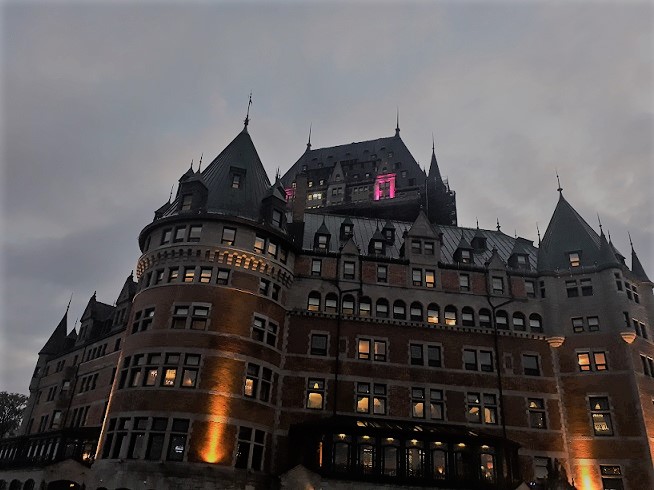
A parte mais antiga da cidade, conhecida como Old Quebec / Vieux- Quebec ou Velha Quebec é protegida por Muralhas ou Fortificações de Quebec, que foram construídas há muito tempo e permanecem até hoje, fazendo com que a cidade seja a única com essa característica na América do Norte. E entre os 4,6 km de das muralhas, ficam alguns Portais, entre eles o Port Saint–Louis, que foi construído em 1693 e passou por várias reformas até chegar à forma atual que é de 1878. Ele fica na Rue Saint-Louis e é possível caminhar por ele para ter uma vista diferenciada da cidade.

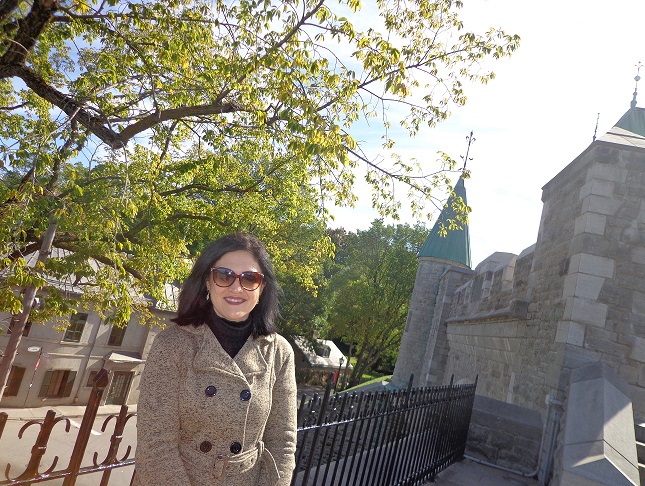
Durante o dia… 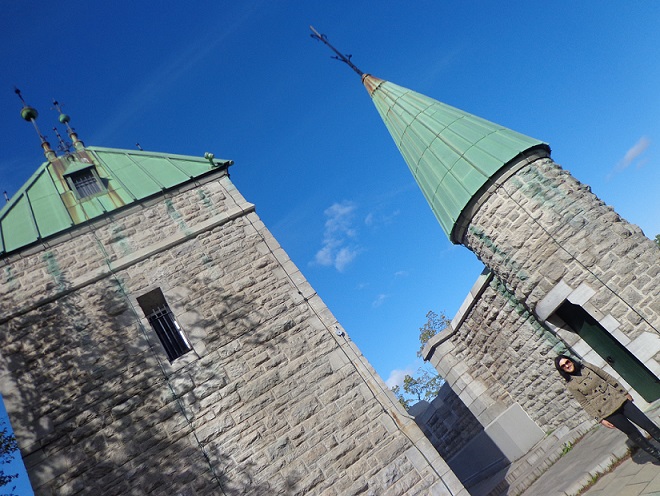
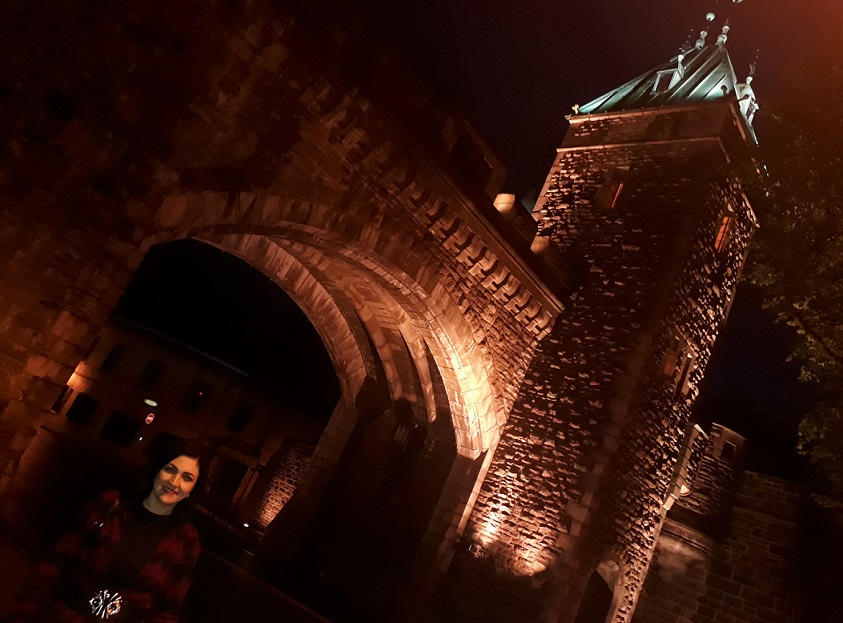
Vale lembrar que Quebec possui uma arquitetura belíssima em estilo francês (assim como seu idioma que é predominantemente francês por conta da sua colonização, mas o inglês também é considerado idioma oficial). A cidade foi fundada em 1608 (uma das mais antigas da América do Norte) e declarada pela UNESCO como Patrimônio da Humanidade em 1985. Você poderá apreciar essa riqueza arquitetônica em várias ruas da cidade, como na “Rue Saint Louis”.
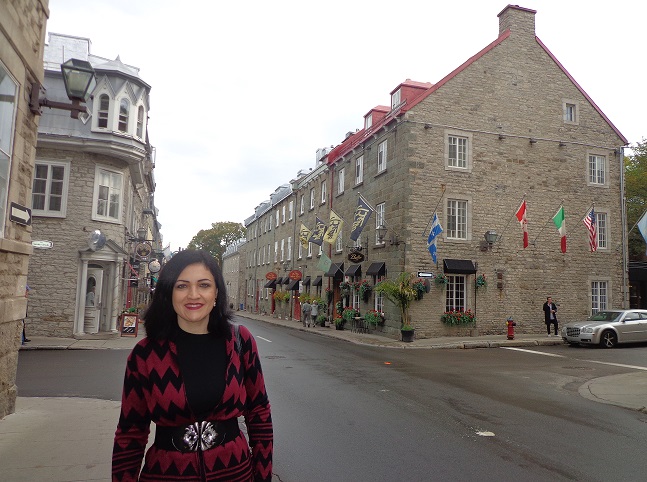
E foi apreciando a paisagem e caminhando pela Rue Saint Louis, que paramos para o “Petit Déjeuner” (que é como eles chamam o Café da Manhã) no Nili Alimentation (76, Rue St. Louis), um lugar muito charmoso e aconchegante que com suas paredes em pedra nos transporta para o período medieval e onde foi possível provar novamente o Café Van Houtte que conhecemos em Montreal e nos conquistou!!!

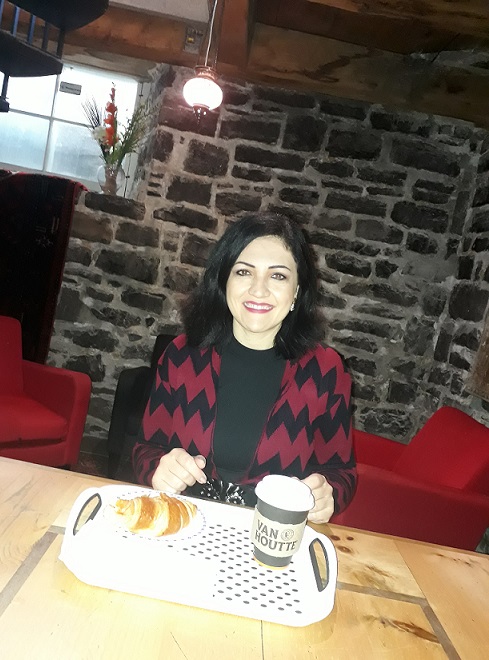
Descendo a Rue Saint-Louis, chegando próximo do Château Frontenac (do lado oposto), bem perto do Letreiro de Quebec (que é uma paradinha “obrigatória” pra foto) fica o Musée du Fort (ou Museu do Forte), que por meio de efeitos sonoros e visuais conta a história militar de Quebec. Para saber maiores informações sobre o funcionamento do museu é só acessar o site: www.museedufort.com/
Essa parte ao redor do Château Frontenac é chamada de Terrasse Dufferin, que é um calçadão de madeira construído em 1879 e que nos proporciona uma vista linda do Saint Lawrence River (ou Rio São Lourenço). O nome é em homenagem à Lord Dufferin, que dirigiu a construção do Terrasse e era governador-geral do Canadá nessa época. Abaixo do Terrasse Dufferin ficam os resquícios do Fort Saint Louis e do Château Saint-Louis, que já serviu como residência de governantes. Aproveite essa linda paisagem para tirar as tradicionais fotos com a Maple Leaf (Folha de Maple), símbolo do Canadá.

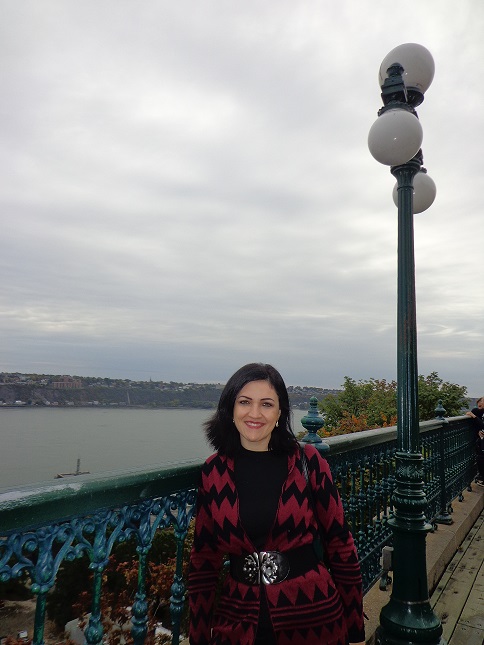
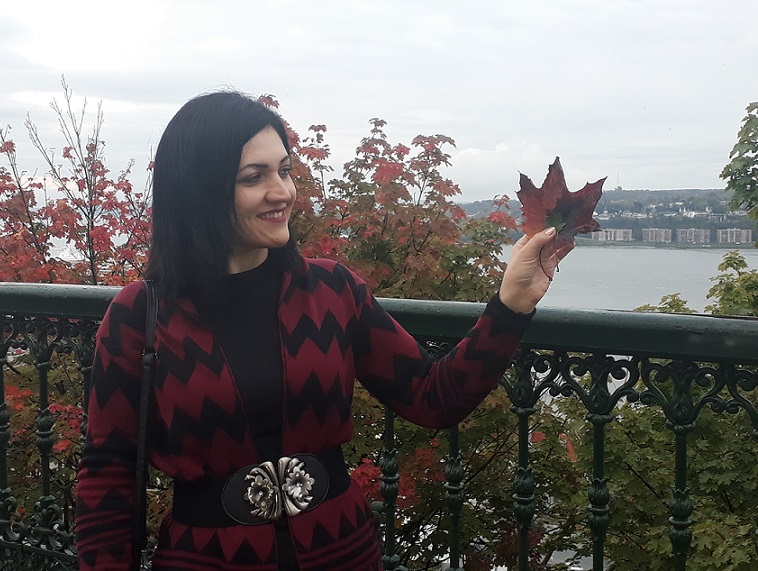
Com a Folha de Maple
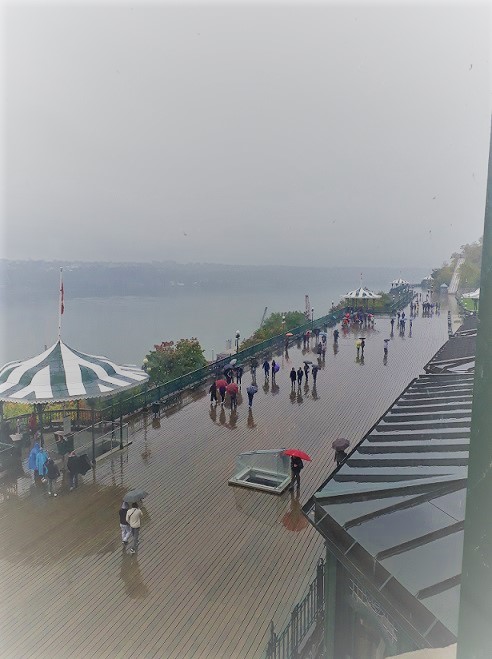
Vista geral 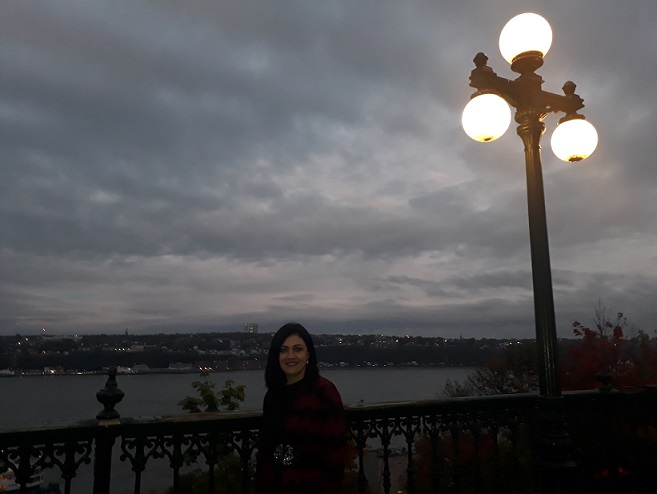
e ao entardecer….
É no Terrasse Dufferin que fica o Monumento a Samuel de Champlain, o fundador da cidade de Quebec, que era geógrafo e explorador Francês, entre outras habilidades. A obra é de autoria de Paul Chevré e foi inaugurada em 1898 para homenagear esse importante nome da história canadense. O monumento feito de mármore e bronze tem 16m de altura, sendo que só a Estátua de Samuel de Champlain mede 4,25m.
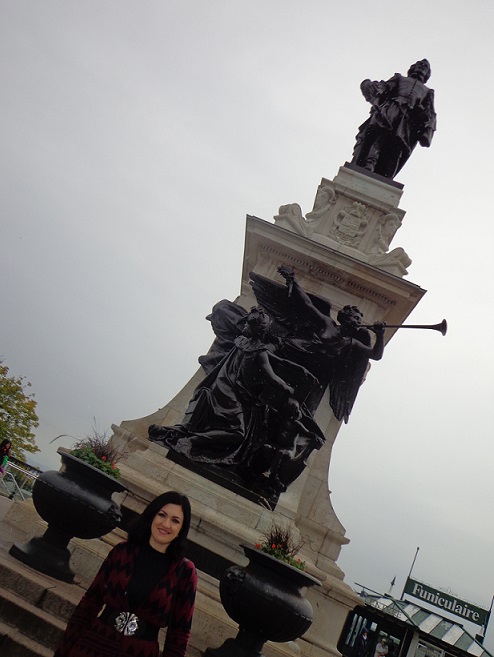

Toda essa parte que visitamos até agora é conhecida como Haute-Ville (ou Cidade Alta) que juntamente com a Basse-Ville(ou Cidade Baixa) compõem a Velha Quebec. Para chegar até a Cidade Baixa existem outras formas de acesso, mas optamos pelo Funicular por ser mais rápido e também para poder apreciar a vista. O primeiro funicular começou a funcionar em 1879, depois foi passando por reformas até chegar no modelo atual. A tarifa custa CAD $3,75 por viagem as entradas ficam no Terrasse Dufferin e no 16, Rue Petit Champlain. Para mais informações e detalhes do funcionamento, basta acessar o site: https://www.funiculaire.ca.
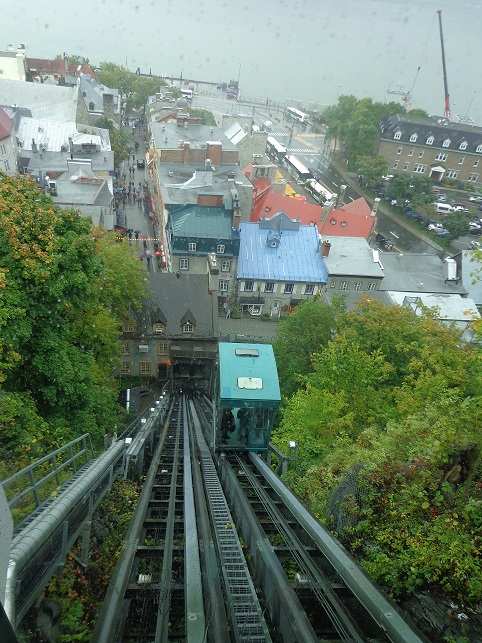
Funicular… 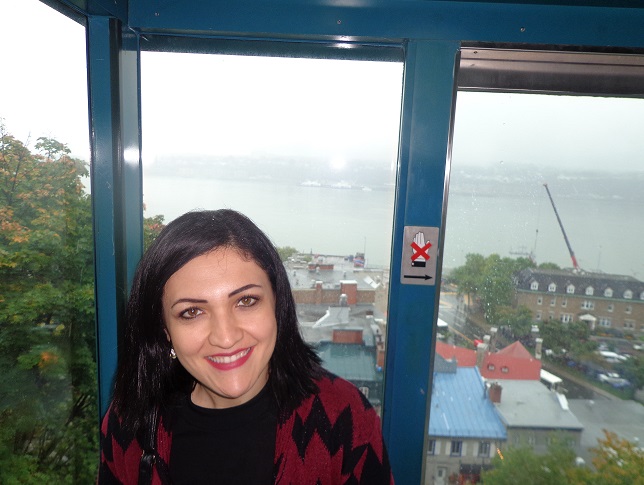
e seu Interior
Agora que já descemos pelo funicular, vamos começar a explorar a Basse Ville (ou Cidade Baixa), que nos encanta com os detalhes e charme de suas ruas e sua belíssima arquitetura. E foi aqui que encontramos a Instalação “Eternal Snow” dos artistas franceses (e moradores de Toronto) Lucie Bulot e Dylan Collins, que envolve o busto do Rei Luís XIV (já existente na Praça) em um globo transparente onde ocorre uma tempestade de neve eterna, representando o encontro entre o Rei Sol e o Inverno Rigoroso de Quebec. Essa obra faz parte da 6ª Edição do “Passages Insolites” (ou Passagens Inusitadas), que reúne 14 obras de 40 artistas espalhadas em diversas vias públicas da cidade para inspirar as pessoas a olharem o mundo ao redor (e o trajeto do cotidiano) de uma maneira diferente. A mostra foi produzida pela “ExMuro” (https://exmuro.com/en/), com curadoria de Vincent Roy. Realmente uma ideia muito interessante e os artistas estão de parabéns pela obra!!!
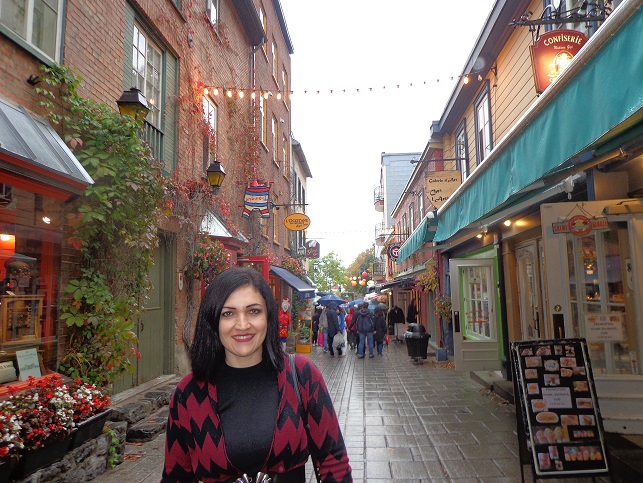
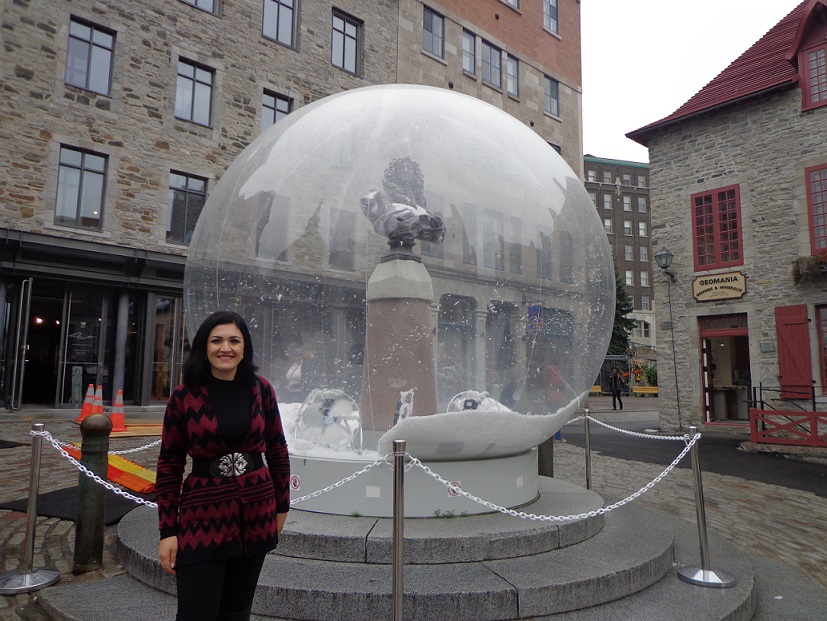
Na mesma praça onde estava essa obra de arte, a Place Royale (ou Praça Real), uma das principais e mais famosas praças da cidade, fica a Igreja de Notre-Dame des Victoires (ou Nossa Senhora das Vitórias), uma linda igreja de fachada em pedra, que foi construída entre 1687 e 1723, sofreu um bombardeio em 1759, mas foi totalmente restaurada em 1816.
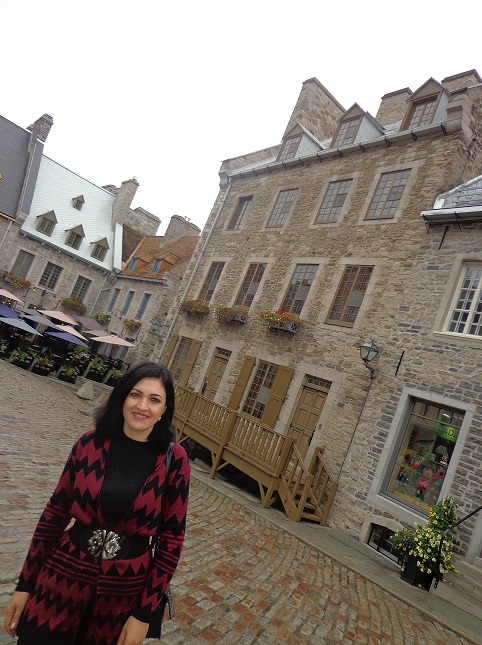

O nome da Igreja (Notre-Dame des Victoires) é uma homenagem às vitórias dos franceses sobre os ingleses em 1690 e 1711. Tanto que pendurado no teto da Igreja tem uma maquete do navio “Brézé”, que em 1664 trouxe uma tropa francesa para ajudar a expulsar os invasores britânicos. Para saber mais detalhes e horários de missas é só dar uma olhadinha no site: https://www.notre-dame-de-quebec.org/notre-dame-des-victoires . Outra curiosidade é que tanto a Igreja quanto a Praça foram locações do filme “Prenda-me se for Capaz” (de 2002) com Leonardo di Caprio e Tom Hanks.

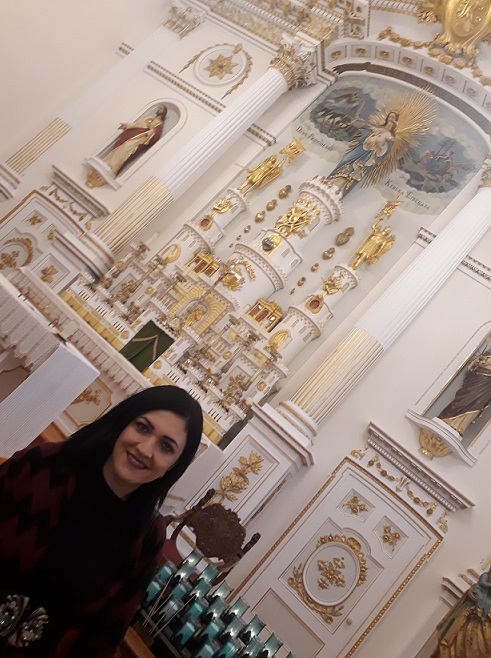
Detalhes do Altar 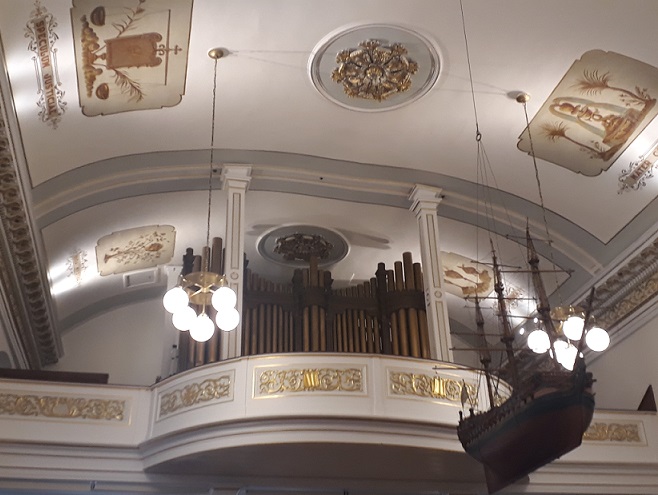
e do Órgão
Continuando nossa caminhada pela Cidade Baixa, na Rue Notre-Dame nos deparamos com um belíssimo Mural “La Fresque des Québécois” (O Afresco dos Quebequenses), que nos seus 420 m² conta a história de Quebec, por meio de seus personagens ilustres, arquitetura, fortificações, escadarias, entre outros elementos, inclusive tem o desafio de encontrar Dois Gatos na pintura. Não vou dizer aqui onde estão para não estragar a surpresa, mas depois me conte nos comentários se os encontrou. O mural foi inaugurado em 17 de outubro de 1999, com desenho e produção de “Cité Création (https://citecreation.fr/), contando com a participação de Hélène Fleury, Marie-Chantal Lachance e Pierre Laforest. Para saber mais informações sobre esse mural é só acessar: https://www.capitale.gouv.qc.ca/nos-projets/fresques/fresque-des-quebecois.


Falando em murais, existem vários espalhados por Quebec. Nós visitamos mais dois o “Fresque du Petit-Champlain” (que fica em 102, Rue du Petit-Champlain, foi desenhado por Murale Création, retratando etapas marcantes da história do bairro operário portuário de Cap-Blanc e de seus trabalhadores, bem como os bombardeios e deslizamentos de terra sofridos na área, sendo inaugurado em 14 de outubro de 2001 e restaurado em 2016) e o “Fresque BMO de La Capitale Nationale du Québec” (ou Afresco BMO da Capital Nacional de Quebec) (que fica na Cidade Alta, em 1037, Rue de La Chevrotière, numa parede do Edifício Marie-Guyart, foi inaugurado em 30 de outubro de 2008 e retrata a fachada do Edifício do Parlamento com vários personagens importantes em homenagem os 400 anos da história política da cidade). Para saber mais detalhes sobre estes e os outros murais espalhados por Quebec, é só olhar o site: https://www.capitale.gouv.qc.ca/nos-projets/grille/fresques
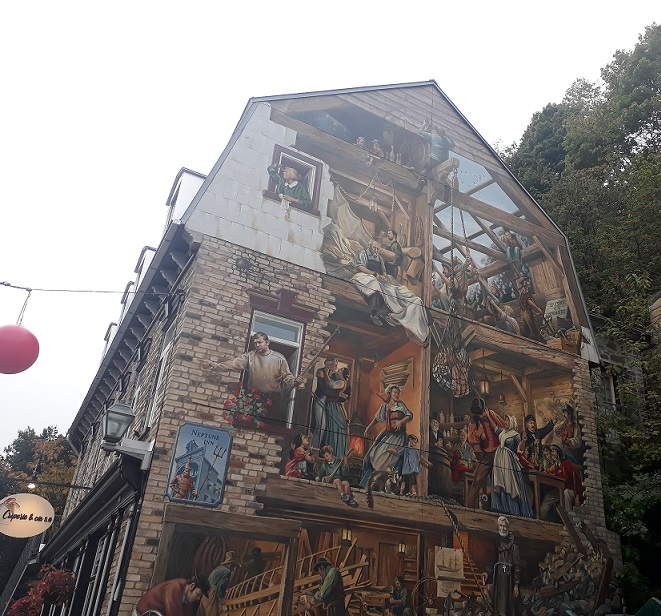
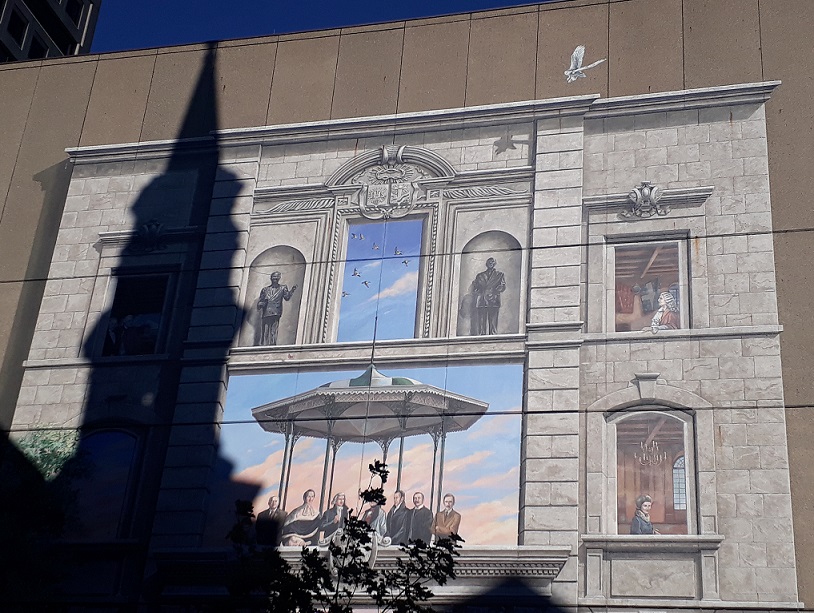
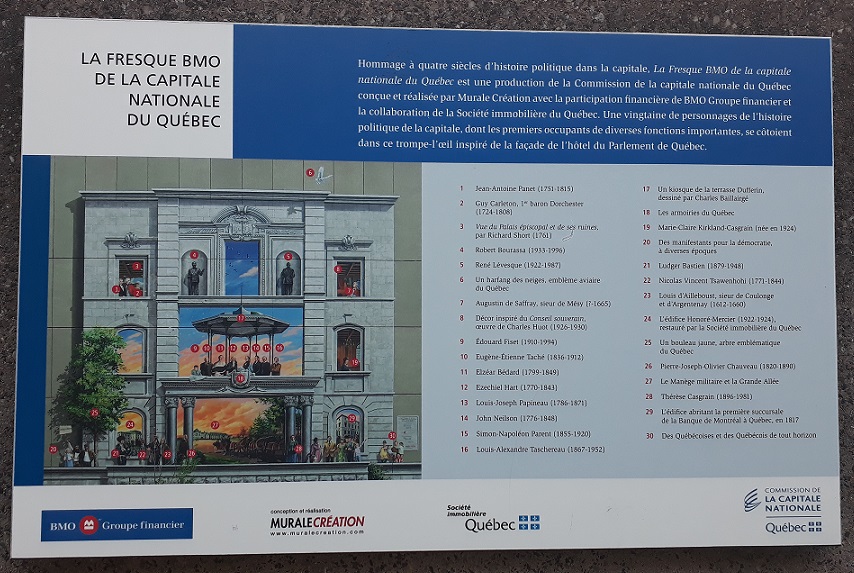
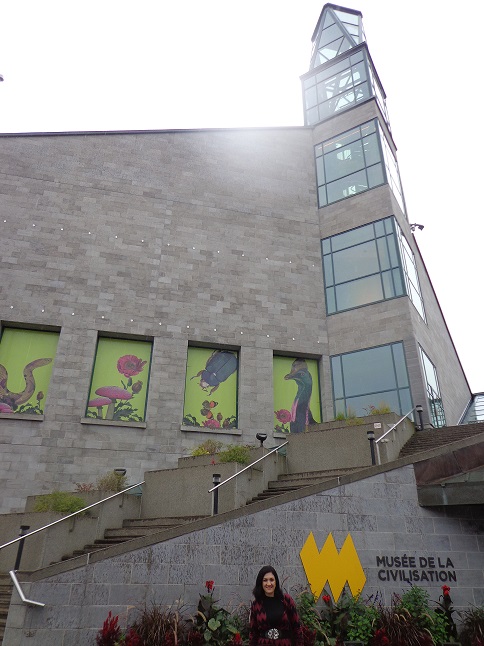
Outro lugar que você vai gostar de conhecer na Cidade Baixa é o Musée de la Civilisation (ou Museu da Civilização), que através de suas exposições permanentes e temporárias retrata de uma maneira muito interativa a história de várias civilizações.
O Museu da Civilização foi fundado em 1984 e tem um acervo bem completo, desde Múmias Egípcias de Gatos, passando por Estátuas de Leão (Terracota Lion), objetos e vestimentas Indígenas, Telefones Antigos, mudanças climáticas até uma exposição dedicada às Histórias sobre Venenos, entre diversos outros assuntos. O museu fica em 85, Rue Dalhousie e mais informações estão no site: www.mcq.org
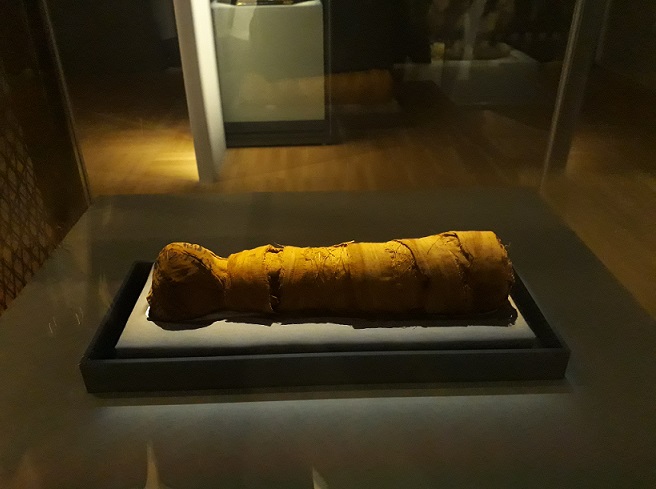
Múmia de Gato 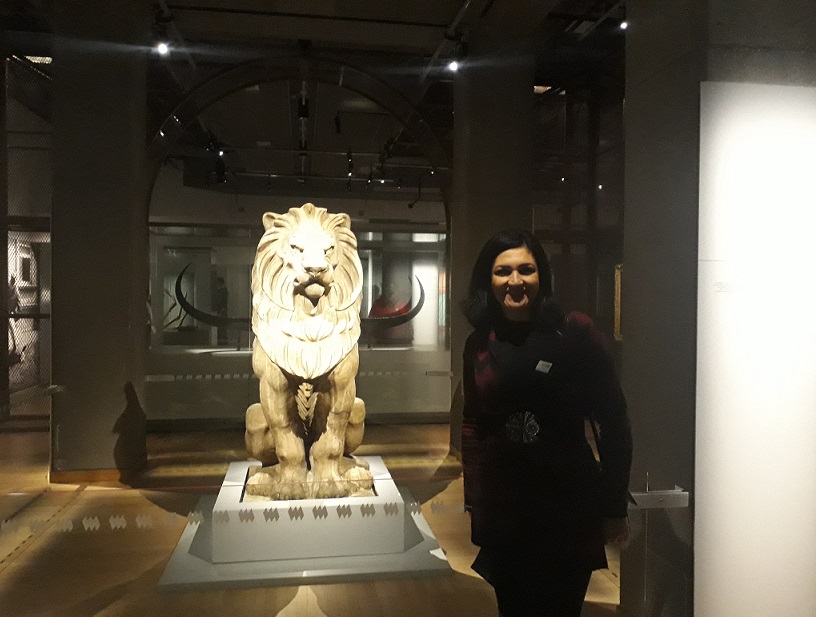
Terracota Lion
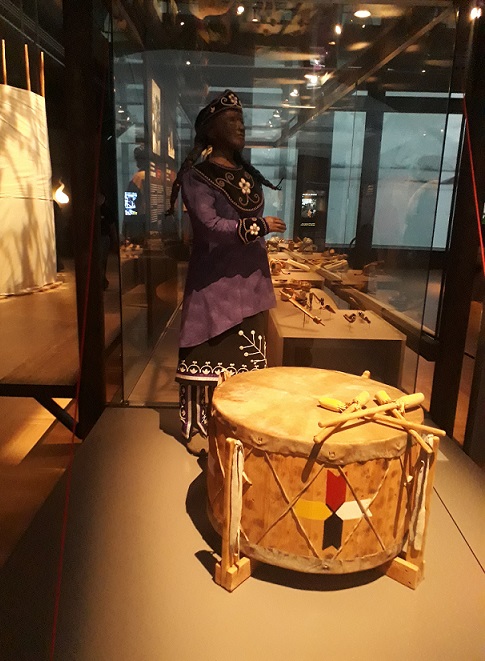
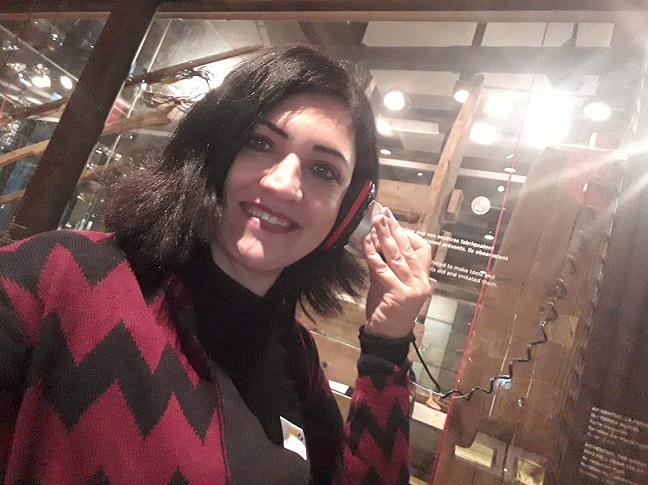
Telefone e 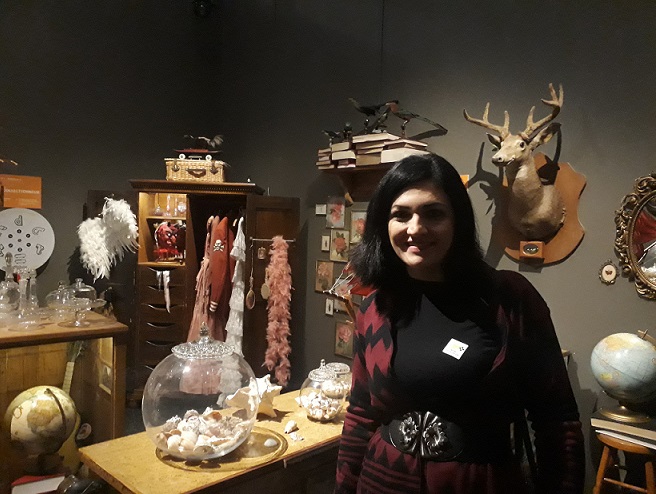
Objetos Antigos

História dos Venenos 
Aproveitando que estávamos perto, ao sair do Museu de Civilização, atravessamos a rua e fomos conhecer o Vieux Port (ou Velho Porto), que durante o século XVII recebia as embarcações com suprimentos e tripulações europeias e agora é também ponto de parada para navios de cruzeiro! O Velho Porto se estende pelo Rio Saint-Laurent (ou Rio São Lourenço) e possui marina, terminal de navios, grandes silos de grãos da Bunge….
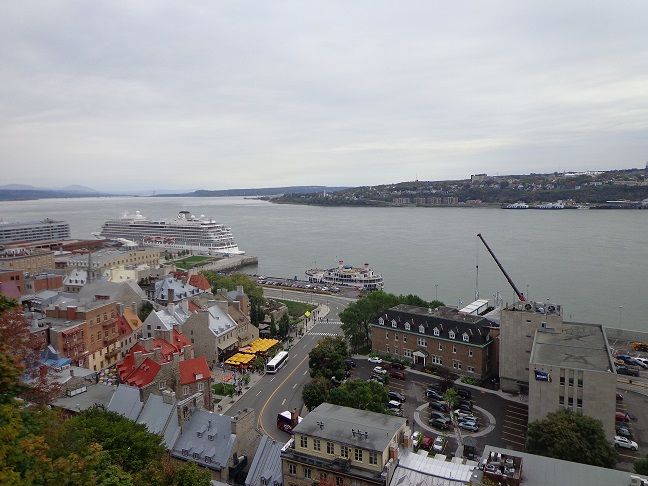

Os Navios no Velho Porto 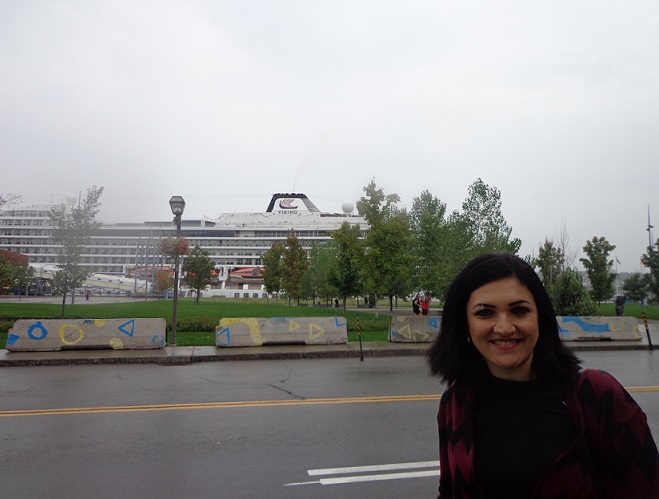
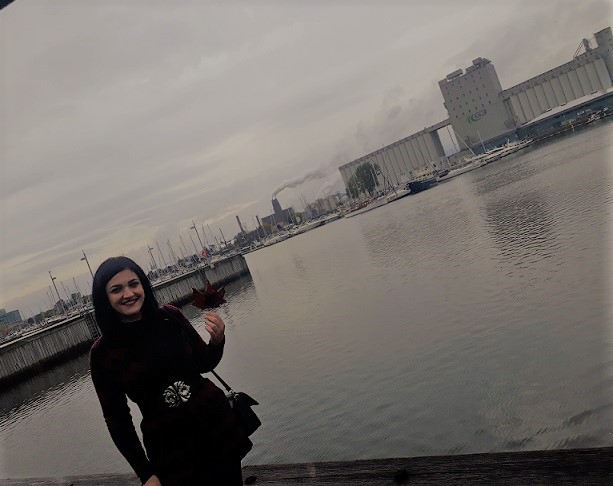
Além de contar que, no seu entorno, o Velho Porto possui lindas ruas, edifícios históricos (como o da Aduana), galerias de arte e restaurantes. Mesmo estando chovendo conseguimos aproveitar o passeio e ainda garantir uma fotinho com esse lindo guarda-chuva que compramos lá (J’aime Quebec)!
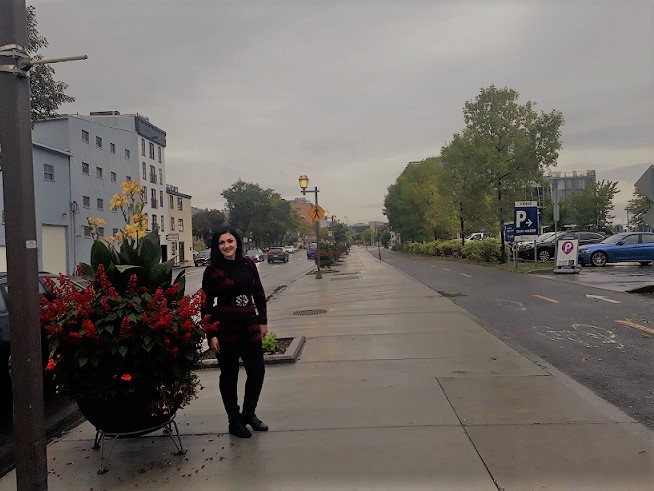
Ruas do 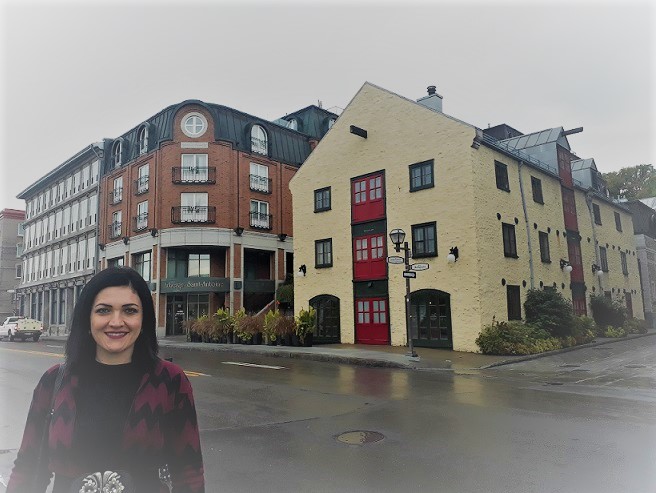
Velho Porto
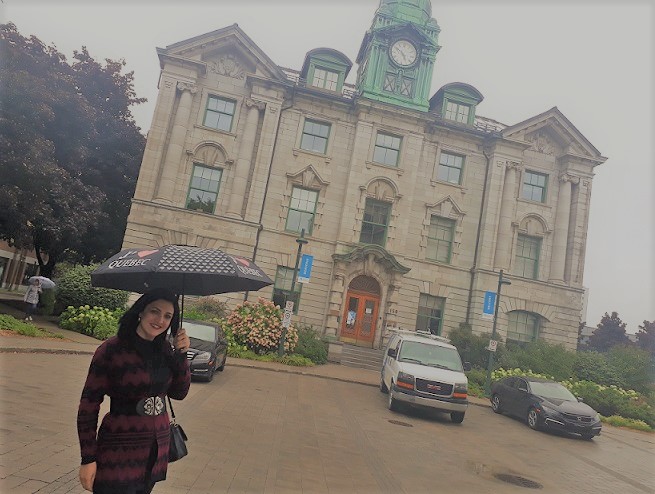
Como já mencionei anteriormente, a região do Velho Porto conta com vários restaurantes, mas tem um deles que é muito especial e foi indicação do nosso amigo Tim, o Café du Monde (ou Café do Mundo), um bistrô em estilo parisiense que faz sucesso há mais de 30 anos na cidade e nos proporciona uma vista privilegiada do Rio Saint–Laurent e do Porto.
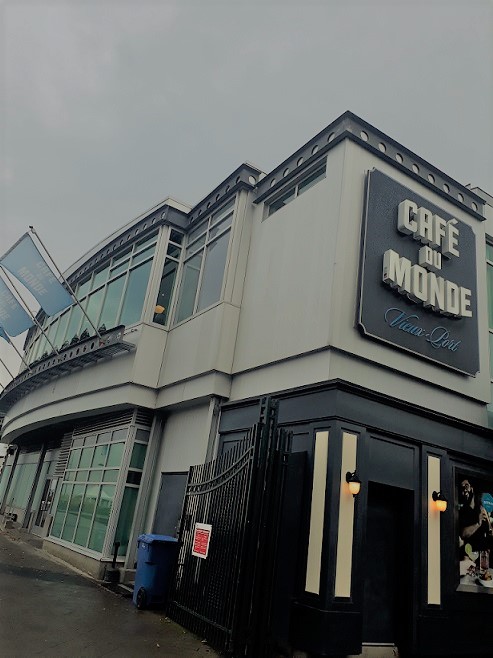
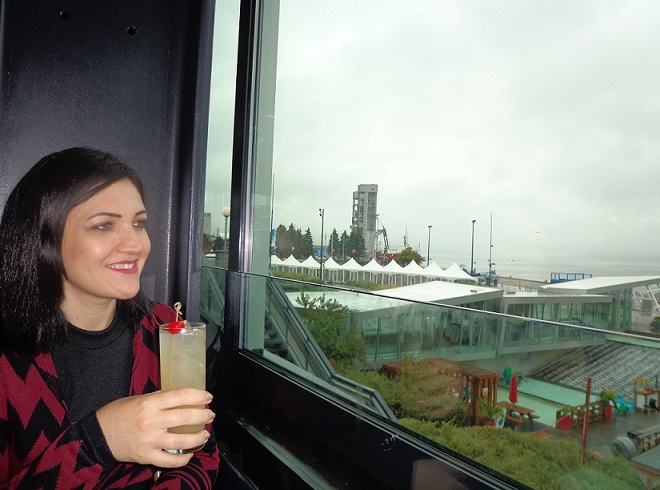
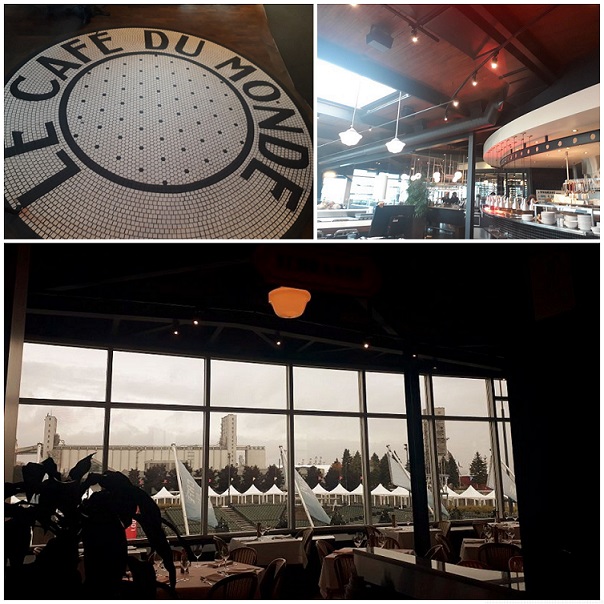

O Café du Monde, além de um ambiente muito agradável, nos oferece um excelente atendimento e uma culinária maravilhosa (com opção vegetariana como a que escolhi), incluindo as sobremesas como essa Torta de Frutas Vermelhas e o Crème Brûllée que estavam deliciosos. Para conhecer o menu completo e mais informações sobre o restaurante, basta acessar o site: https://www.lecafedumonde.com/#/


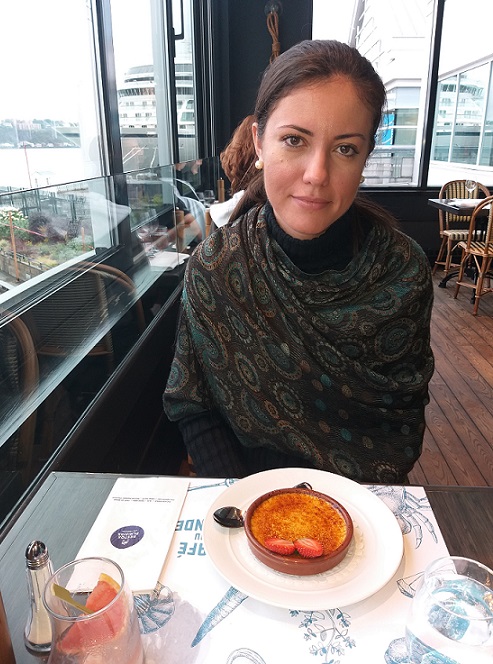
Crème Brûllée 
Torta de Frutas Vermelhas (pra combinar com meu look…)
Ainda passeando pela Cidade Baixa, fomos caminhar pelo Quartier Petit Champlain, que é considerado um dos bairros comerciais mais antigos da América do Norte, repleto de lojinhas com uma arquitetura antiga charmosa, ruas com paralelepípedos e bem estreitas, onde só os pedestres podem andar apreciando a paisagem e entre essas ruazinhas está a Rue du Petit-Champlain que é uma das principais do bairro, foi construída em 1635 e no final dela tem uma linda Moldura de Quadro para que os visitantes possam tirar fotos de recordação desse passeio encantador. Vale lembrar que a região passou por uma fase de abandono no final do século XIX, só voltando a ser restaurada na década de 70 e que vem sendo mantida em ordem graças aos esforços dos comerciantes e artesãos locais. Mais informações estão no site: https://www.quartierpetitchamplain.com/en/
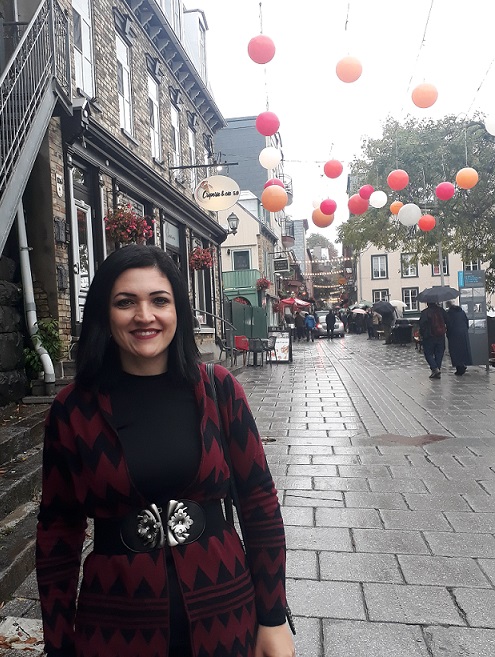
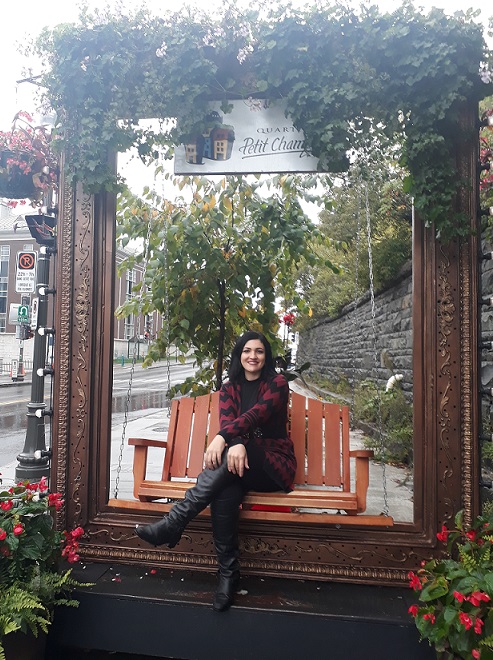

Outra rua que é super charmosa e muito procurada pelos turistas nessa região é a Rue Cul-de-Sac, que possui lindos guarda-chuvas pendurados e garantem lindas fotos, além de vários restaurantes e lojinhas também. A expressão “cul-de-sac” significa beco sem saída e a rua recebeu esse nome por ter ligação direta com o Porto e servir como passagem de mercadorias entre este e a cidade. Mas em 1854 essa parte do porto foi aterrada e a rua deixou de ser sem saída, porém o nome foi mantido em razão de sua importância histórica.
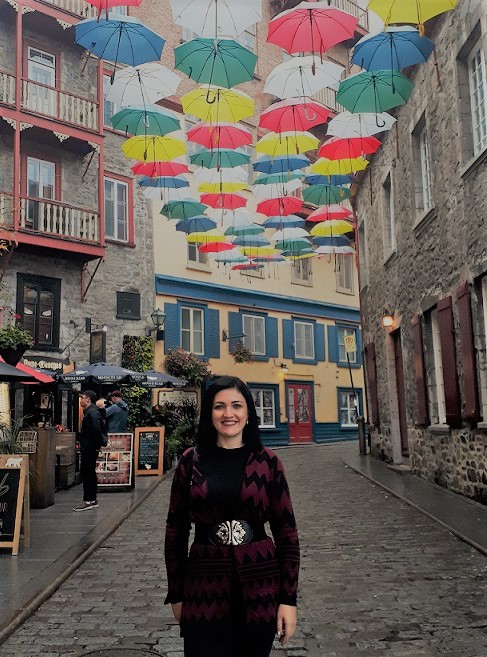

Mais um lugar que também é muito visitado pelos turistas e fica ali perto (16, Rue De Buade) é a Catedral-Basílica de Notre Dame de Quebec, que foi construída em 1647, sofreu dois incêndios (1759 e 1922) mas foi reconstruída e declarada pela Unesco como Sítio Histórico Nacional do Canadá em 1989. Quando visitamos a parte externa estava em reforma, por isso não tirei foto, mas seu interior é belíssimo, desde os detalhes nas colunas, passando pela pintura no teto, as imagens dos santos, os vitrais, até chegar no Altar, que tem uma espécie de Cúpula de Arcos Dourados com Anjos e Jesus Ressuscitado. Uma verdadeira obra de arte!!! Além de transmitir muita paz!
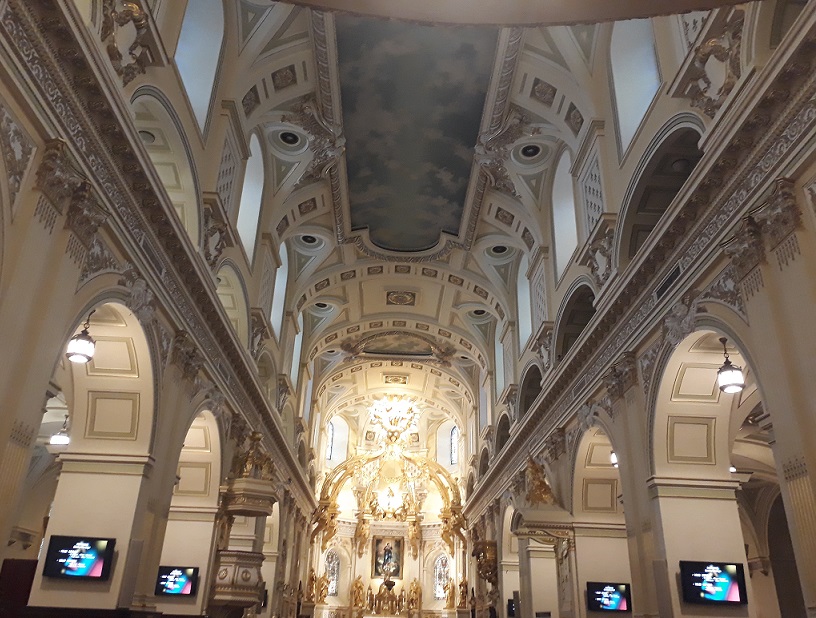

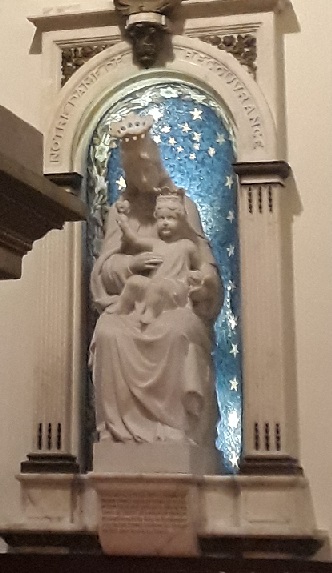
A Catedral-Basílica de Notre Dame de Quebec foi construída onde anteriormente era uma Capela dedicada à Notre Dame de la Recouvrance, fundada em 1633 por Samuel de Champlain (o mesmo do Monumento que comentei acima, lembra?). Com a transformação em catedral, passou a chamar-se Notre-Dame de La Paix (ou Nossa Senhora da Paz), mas ainda tem essa imagem de Notre–Dame de Recouvrance. Que Ela abençoe a todos nós!!! E para saber mais detalhes sobre basílica é só acessar o site: https://www.notre-dame-de-quebec.org/basilique-cathedrale
Já foram tantos passeios maravilhosos durante o dia que você deve estar se perguntando o que a noite de Quebec nos reserva? Já posso te adiantar que tem muito agito! Na parte murada tem várias opções de bares e restaurantes, mas o exterior da muralha também garante muita diversão, como a Rue Grande Allée que concentra vários pontos turísticos da cidade (que vou te mostrar mais adiante) e diversos barzinhos, restaurantes, danceterias e pubs, como o Taverne, que fica em 585 Grande Allée Est e é um animadíssimo Resto-Bar onde é possível provar o Poutine de Quebec (que dizem ser o melhor do Canadá e estava delicioso) ao som de muita música boa!!! Para saber mais detalhes sobre o Taverne é só dar uma olhadinha no site: http://www.tavernegrandeallee.com/
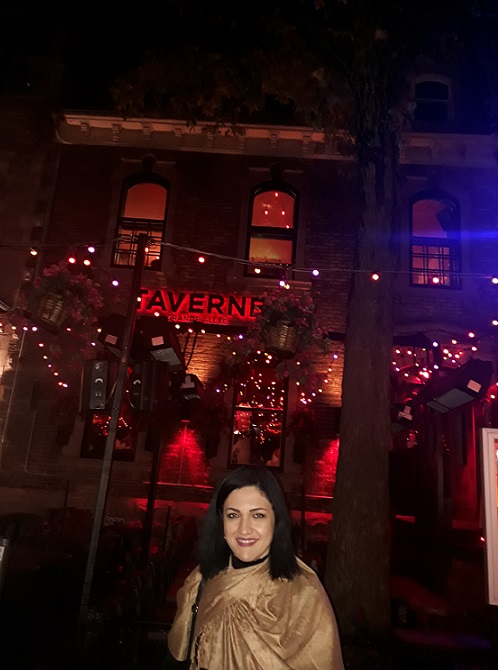

Brindando e… 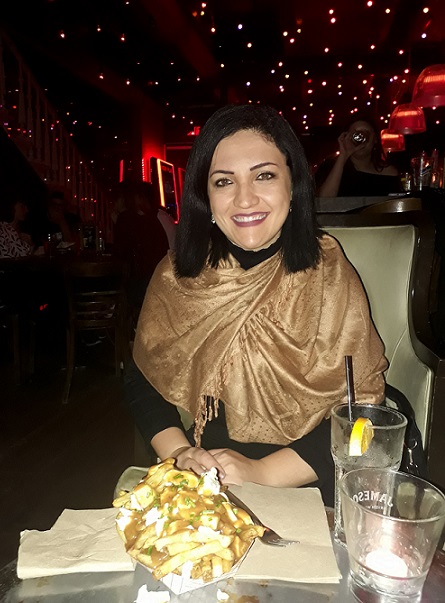
Provando o Poutine

Em frente ao Taverne, no 600 Grande Allée Est fica a Balada Dagobert, que é um dos points mais agitados da cidade pra quem gosta de dançar!!! A casa lota, então se puder chegar logo que abre vale a pena para aproveitar ao máximo!!! Para mais informações e horário de funcionamento é só acessar o site: https://dagobert.ca/


No agito da… 
Dagobert
Depois de curtir a noite de Quebec, vamos voltar aos passeios diurnos porque ainda temos muito o que explorar na cidade, começando pela Citadelle ou La Citadelle que é uma fortaleza em formato de estrela que foi construída entre 1820 e 1850 para proteger de a cidade de uma invasão americana e também para servir de refúgio para os britânicos. A Citadelle fica na VelhaQuebec, ao lado do Port Saint-Louis.

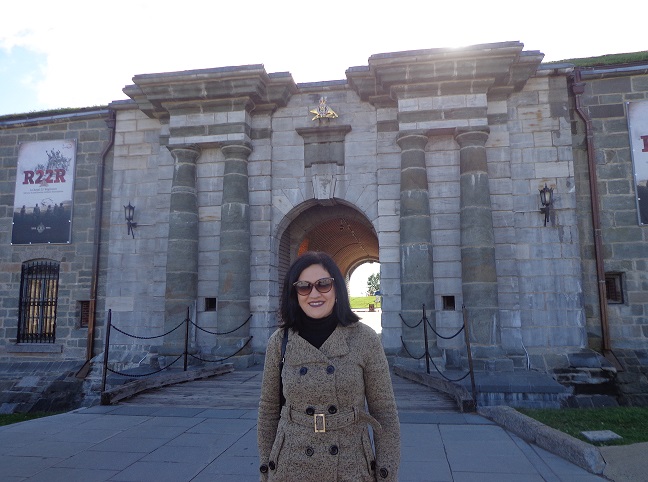
A Citadelle é considerada a fortaleza britânica mais importante da América do Norte e faz parte das fortificações de Quebec. Ela foi declarada como Sítio Histórico Nacional do Canadá em 1980 e Patrimônio Mundial da Unesco em 1985. Nós fizemos a visita guiada e foi muito interessante para conhecer um pouco sobre os 300 anos de história militar canadense. Os ingressos adultos para esse tour custam CAD$ 18, mas tem desconto para combo família, idosos e crianças. A visita dura cerca de uma hora e quem nos conduziu foi o Guia Mathieu, que nos explicou, entre outras coisas, o significado do letreiro “Je me Souviens” (ou “Eu me lembro”) como sendo uma homenagem aos membros do Regimento que foram feridos ou morto em batalhas!!
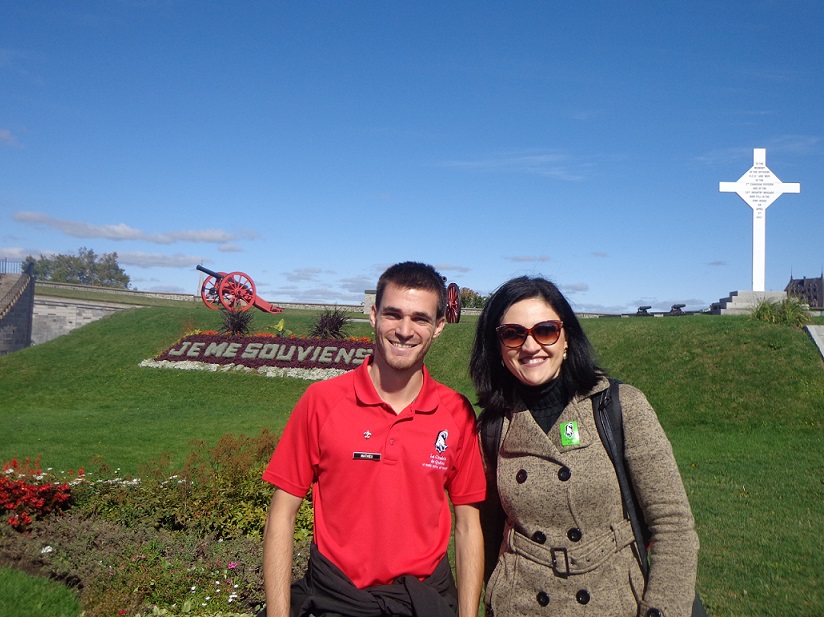

Enquanto esperávamos pra começar o tour guiado, aproveitamos pra conhecer o Musée Royal 22E Régiment (ou Museu do 22° Regimento Real) que possui artefatos militares, como armas, uniformes, medalhas entre outros objetos, não é permitido fotografar no museu, mas vale a pena passar por ele. Durante a Visita Guiada pela Citadelle, tivemos a oportunidade de conhecer vários Edifícios, entre eles o do Antigo Hospital, descobrimos que a Citadelle funciona atualmente como instalação militar e Residência Oficial secundária da monarquia canadense e do Governador Geral do Canadá, chegamos a passar por essa residências.
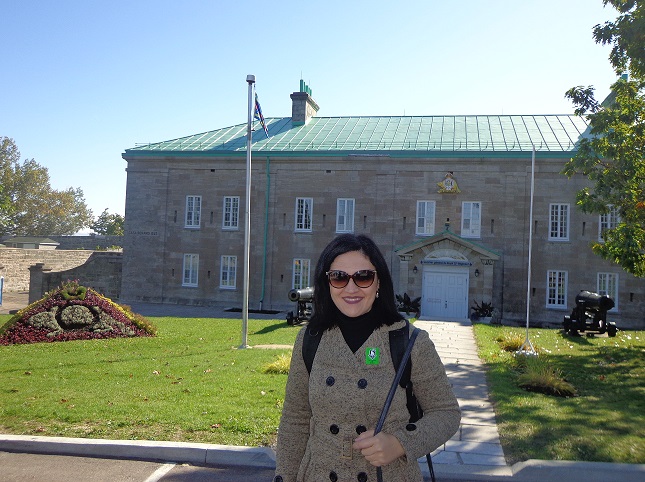
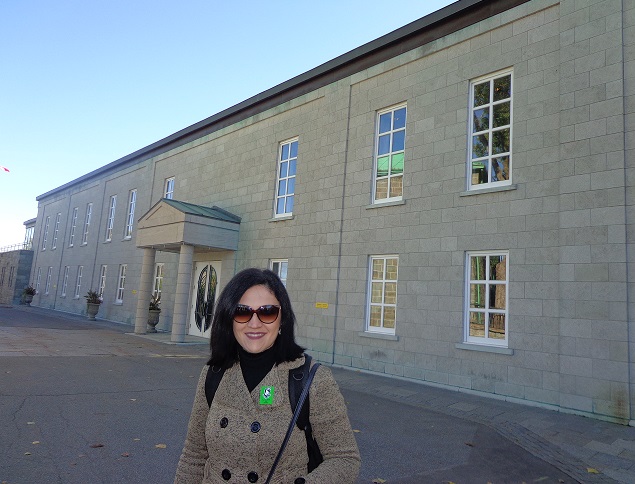
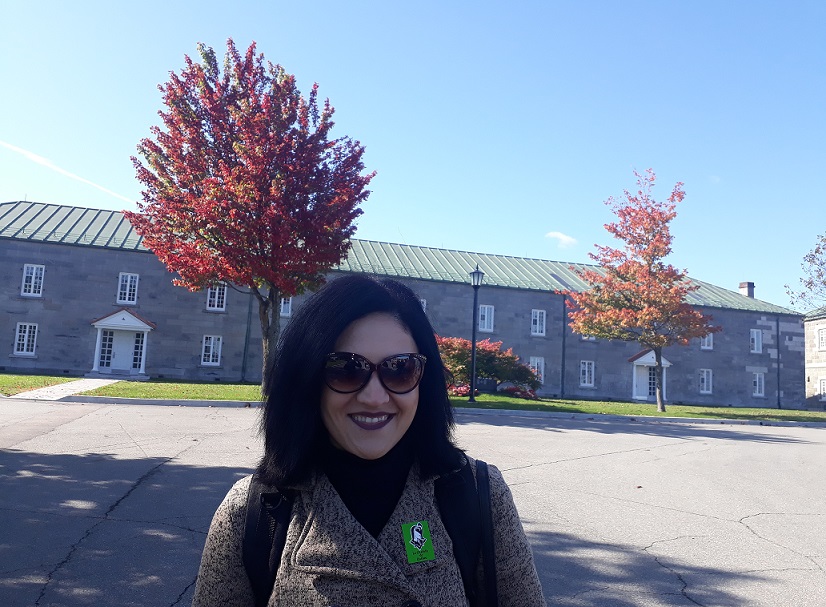
No tour guiado pela Citadelle também passamos por uma antiga Prisão Militar, e por um outro Museu, onde tem a foto da Cabra Batisse, que foi presente da Rainha Elizabeth II e é o mascote do Regimento.

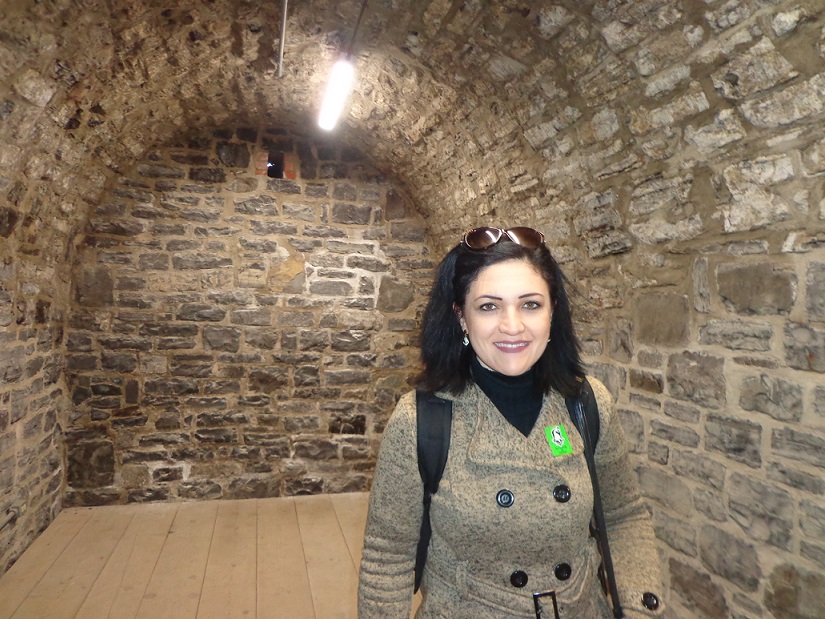
Na antiga Prisão Militar 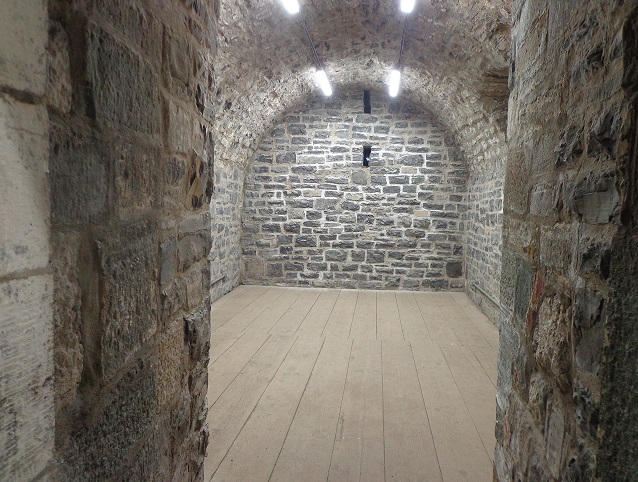

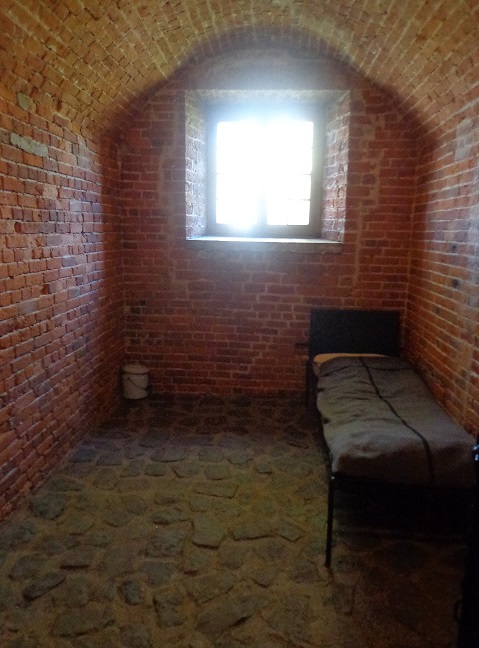
Museu da Citadelle 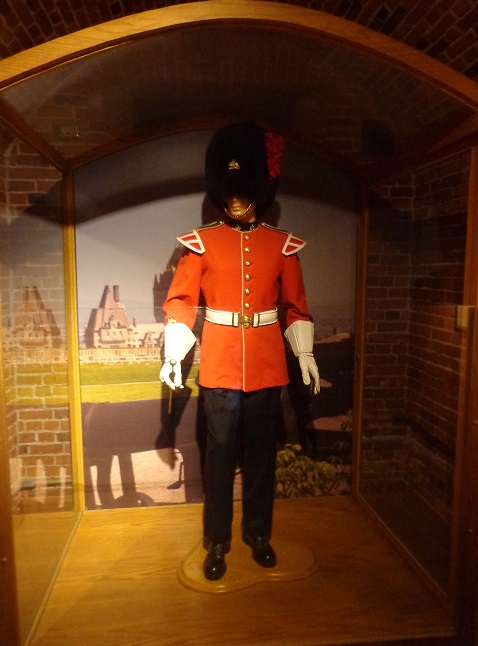
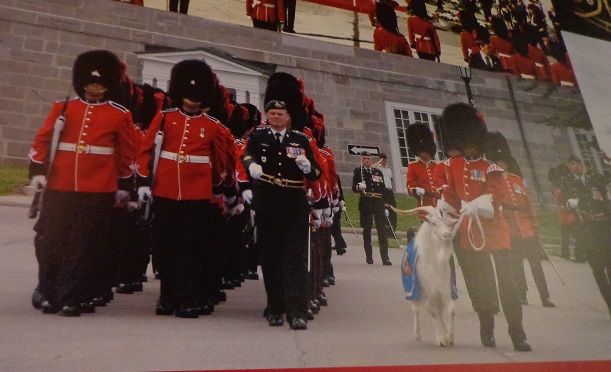
Também fomos até uma das extremidades da estrela que compõem a Citadelle, chamada de Bastião do Rei, e tivemos uma visão maravilhosa do Château Frontenac e do Rio Saint Laurent. Até postei um vídeo no nosso Canal do Youtube, dá uma olhadinha lá pra sentir como é essa vista: link https://youtu.be/ejwm9wE6aoA
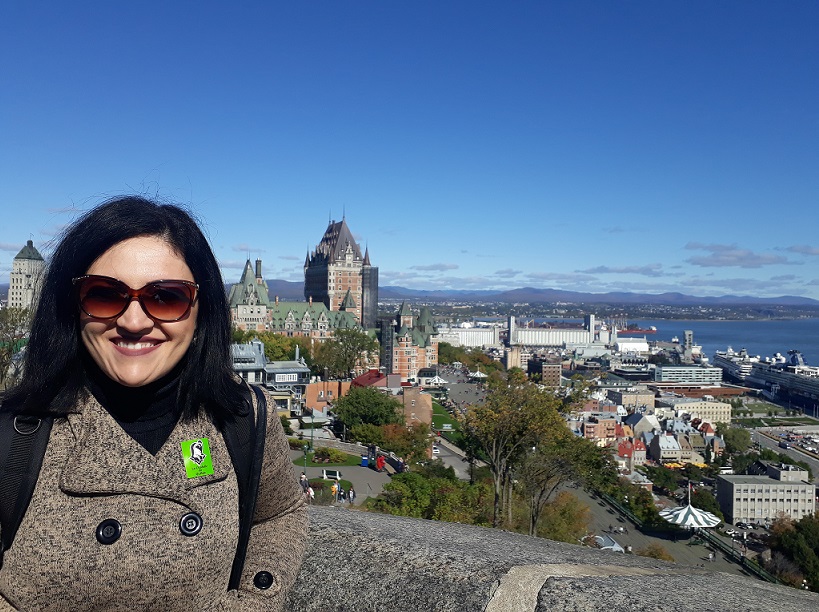

A visita à Citadelle é realmente um passeio que vale a pena incluir no seu roteiro. Além de todo o conhecimento adquirido, é possível ver de perto canhões e tanques de guerra! E contemplar os detalhes das pedras utilizadas para a construção da fortaleza! Mais informações estão no site: www.lacitadelle.qc.ca/en/
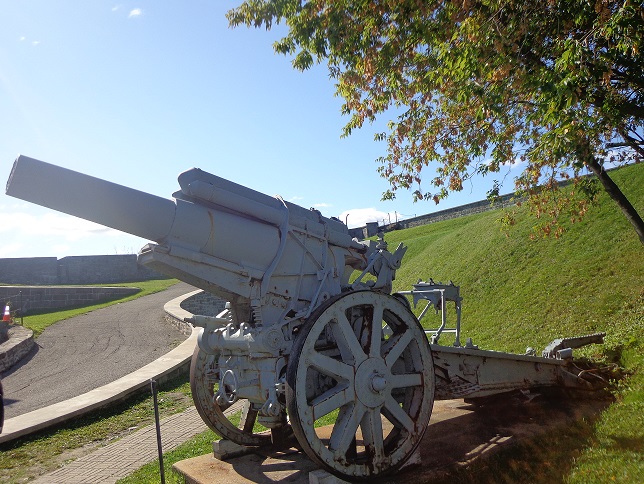
Canhão 
Tanque de Guerra
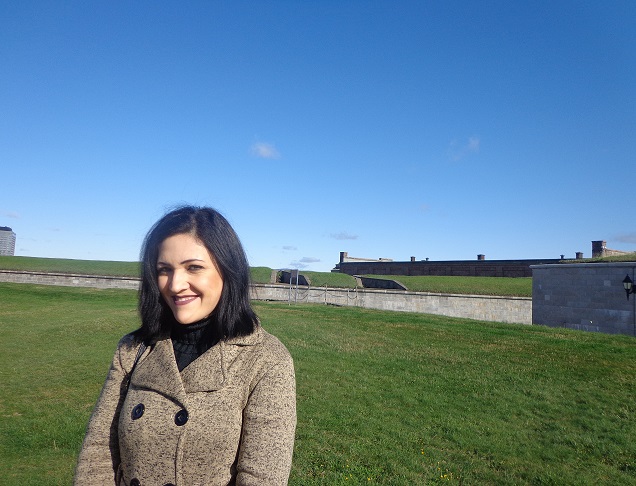
Ao lado da Citadelle fica um dos acessos aos Plaines d’Abraham (ou Planícies de Abraão) também chamado de Battlesfield Park(ou Parque do Campo de Batalha) porque foi o local do confronto entre os franceses e ingleses, culminando com a vitória britânica em 1759, fazendo com que o Canadá se tornasse colônia inglesa. Mais detalhes desse conflito e outras histórias estão no Plains of Abraham Museum (que fica em 835 AvenueWilfrid-Laurier, mas também tem acesso por dentro do parque).

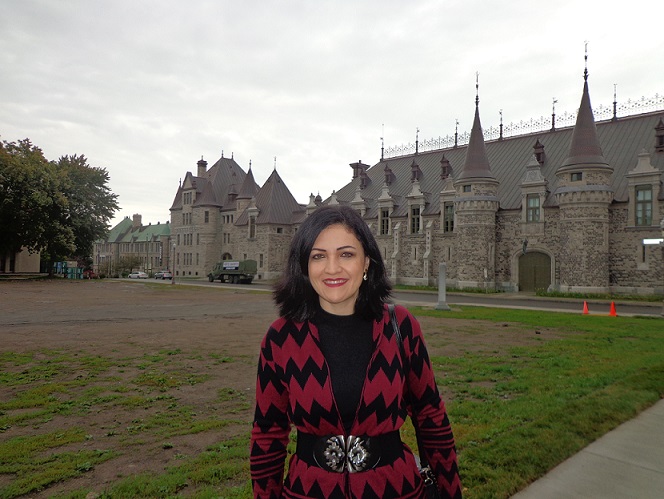

Exposição do 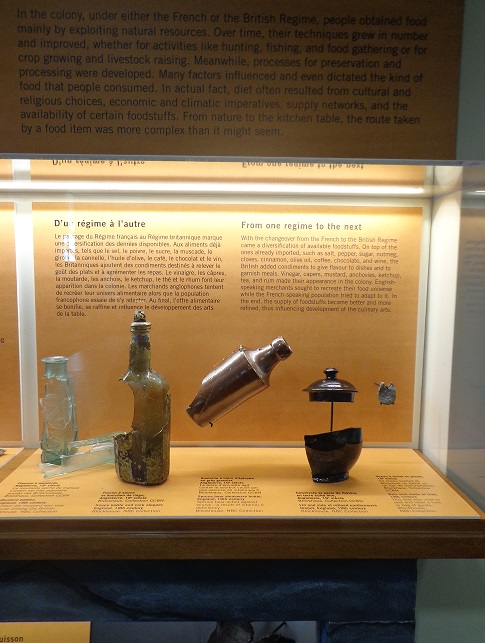
Plains of Abraham Museum
Além da importância histórica, os Plaines d’Abraham são um enorme parque urbano com cerca de 103 hectares de planícies, bosques e vales. É um verdadeiro refúgio verde na cidade, muito utilizado para o lazer, prática de exercícios, também para relaxar e apreciar a natureza. É conhecido como o Central Park de Quebec. Mais informações sobre o parque belíssimo estão no site: http://www.lesplainesdabraham.ca
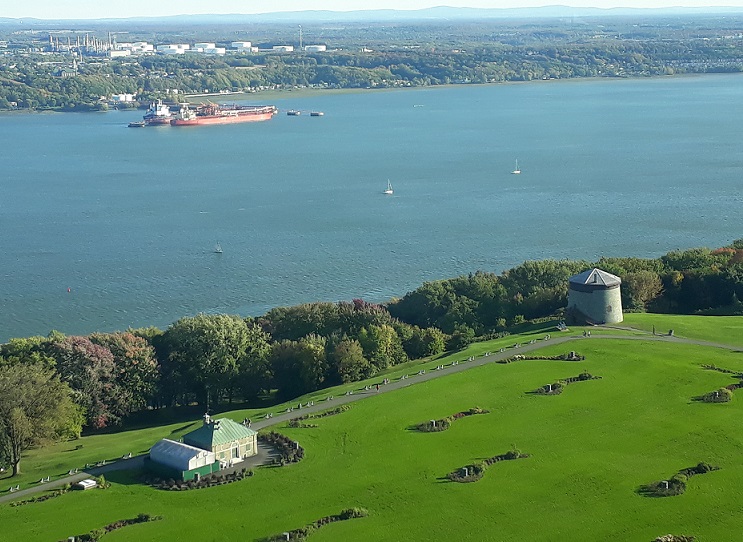
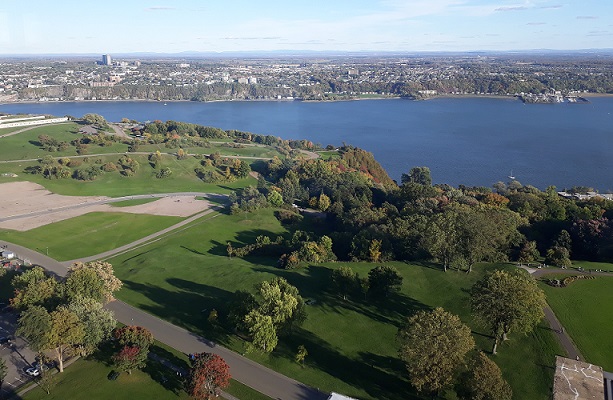
Outro museu que está localizado dentro dos Plaines d’Abraham é o Musée National des Beaux-Arts du Québec (ou Museu Nacional de Belas Artes de Quebec), que também tem acesso pelo 179, Grande Allée Ouest (aquela rua do agito noturno que comentei que tem vários pontos turísticos, lembra?). Além das obras dentro do Museu, ainda tem Exposição no seu lindo Jardim.
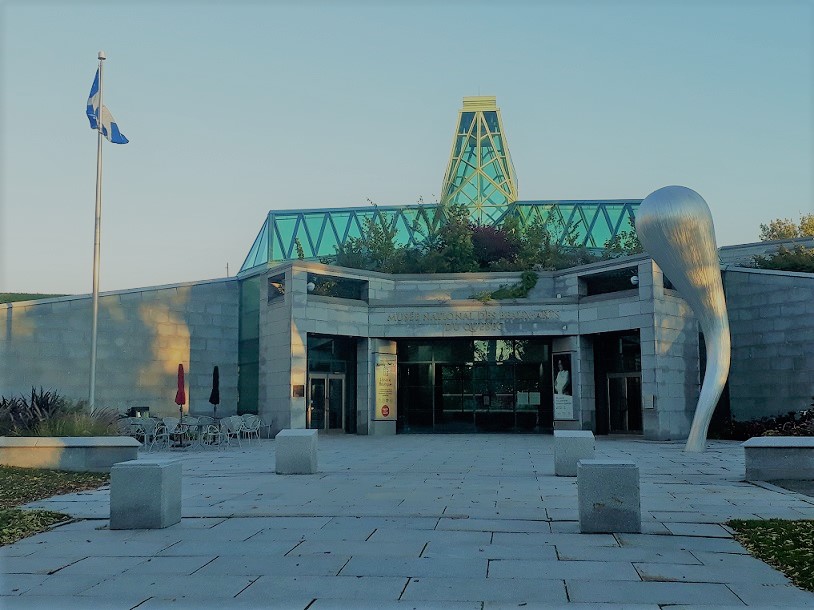

E seu lindo Jardim 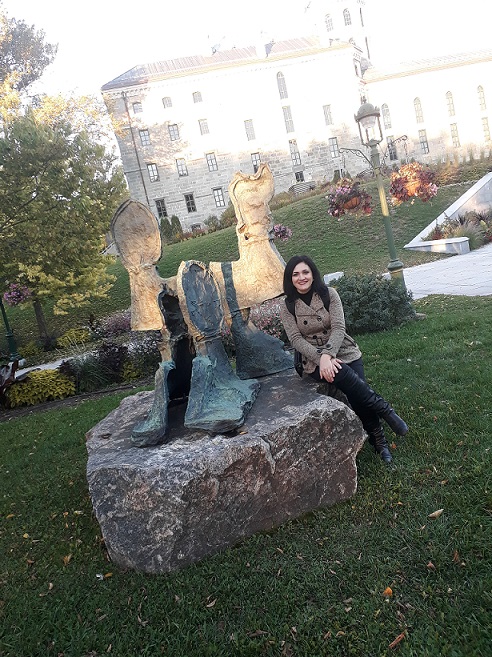
Com obras em Exposição
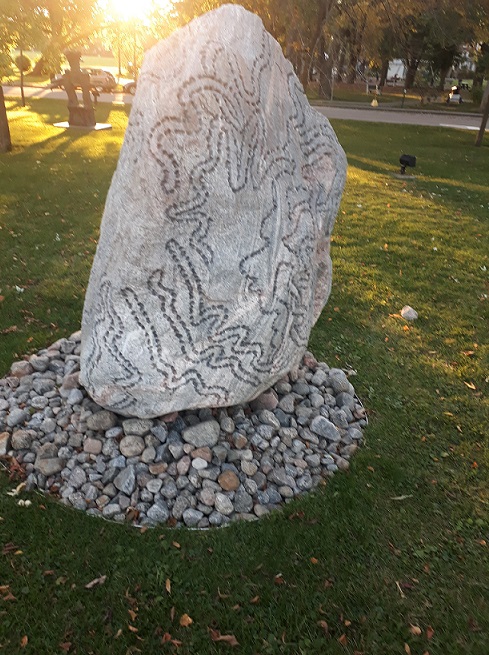
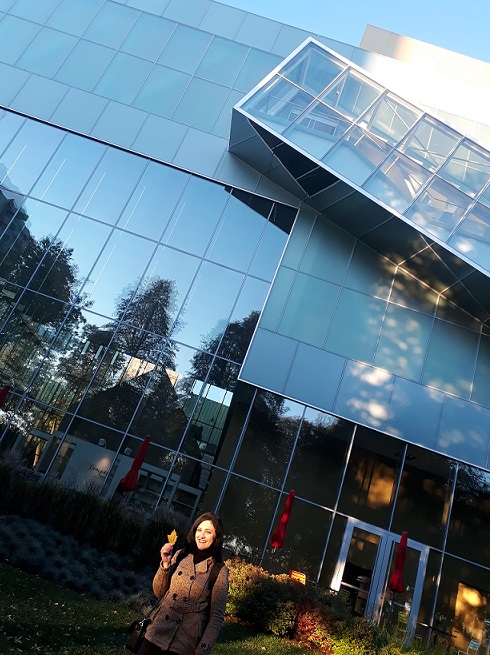
O Museu Nacional de Belas Artes de Quebec é um dos principais museus da cidade, com um acervo de mais de 40 mil obras, que mantém viva a memória artística de Quebec, com trabalhos desde o século XIV até a atualidade, sempre valorizando os artistas locais. O Museu foi inaugurado em 1933, com o nome de Musée de La Province de Québec, depois teve seu nome alterado em 1963 para Musée du Québec, recendo a nomenclatura atual em 2002 e é um complexo formado por quatro edifícios: o Central Pavilion (ou Pavilhão Central), que é a central de visitantes; o Charles Baillairgé Pavilion, que era uma antiga prisão antes de virar museu e agora abriga o acervo de arte moderna; o Gérard Morisset Pavilion, que foi o primeiro prédio do museu e abriga exposições de arte histórica e o Pierre Lassonde Pavilion, que é o edifício mais recente, sendo inaugurado em 2016 e que abriga arte contemporânea. Se você tiver tempo, vale a pena incluir no seu roteiro. Para saber mais detalhes do funcionamento e exposições em cartaz é só acessar: www.mnbaq.org
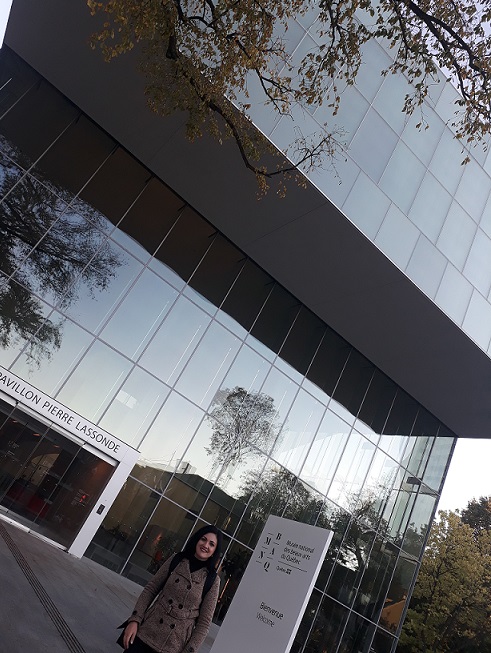
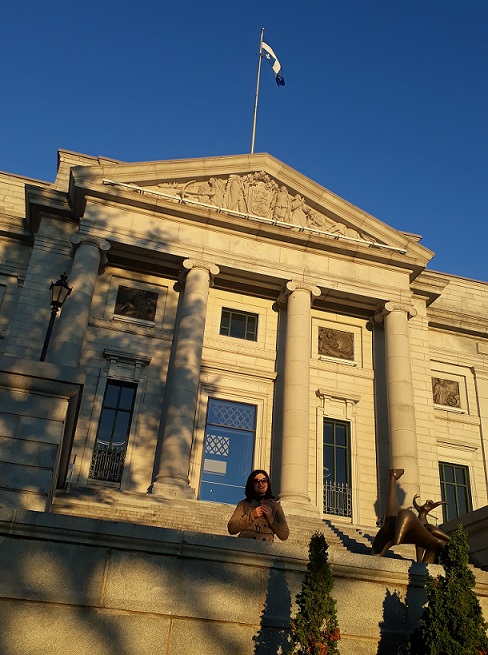
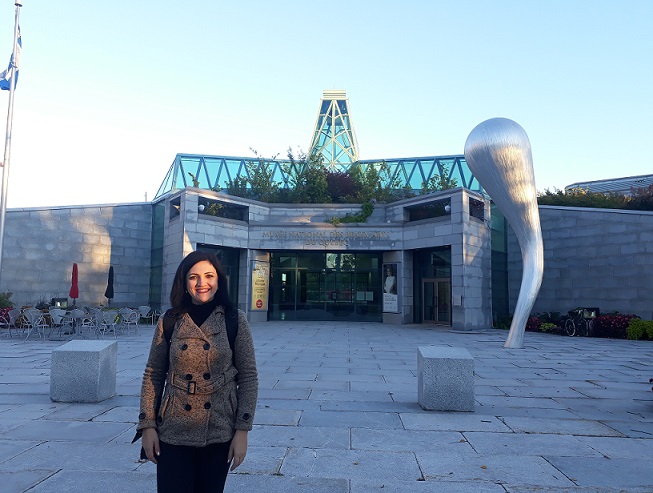
Mais um ponto turístico da cidade que chama a atenção é o Hôtel du Parlement (ou Edifício do Parlamento) que abriga a Assemblée Nationale du Québec (ou Assembleia Nacional de Quebec) e foi construído entre 1877 a 1886, com projeto do arquiteto Eugène-Étienne Taché, no estilo arquitetônico chamado de Segundo Império ou Napoleão III (que mistura vários estilos, desde o renascentista, passando pelo barraco, até a inclusão de elementos modernos). Além do edifício, seu jardim também é um encanto.
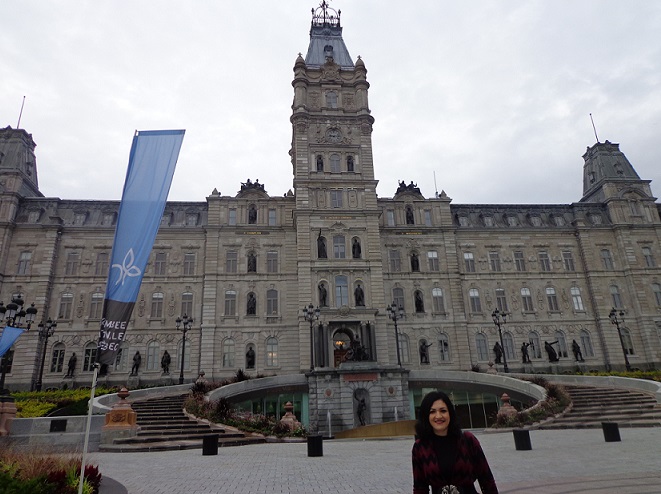
O Edifício do Parlamento é composto de oito andares, chegando à altura de 52m na sua torre frontal, além de ter recebido o acréscimo de mais quatro prédios ao seu redor, formando um enorme complexo. Vale lembrar que foi declarado como Sítio Histórico Nacional em 1985 e possui cerca de 22 Estátuas de Personagens Históricas espalhadas tanto pela fachada do edíficio, quanto pelo jardim, como as esculturas que estão bem na entrada do prédio: “A parada na Floresta” e “O Pescador Nigogo”, ambas obras do artista Louis-Philippe Hébert.
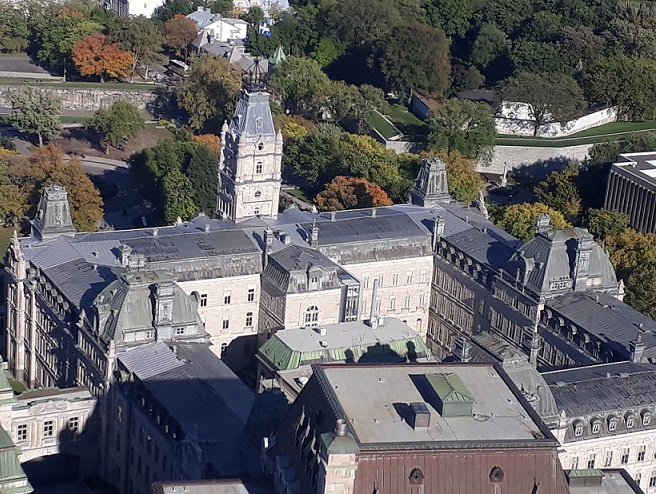
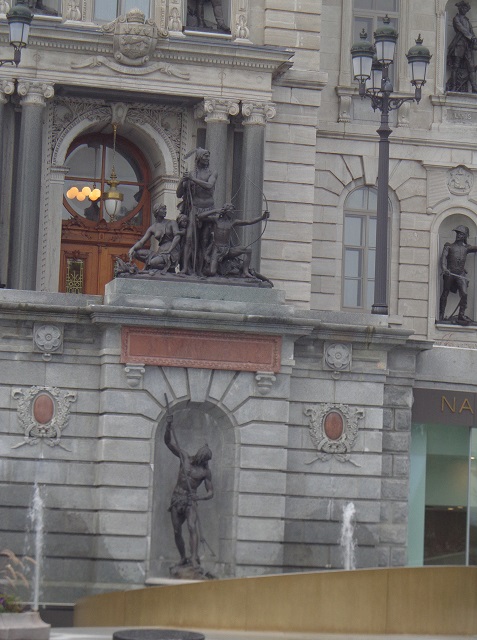

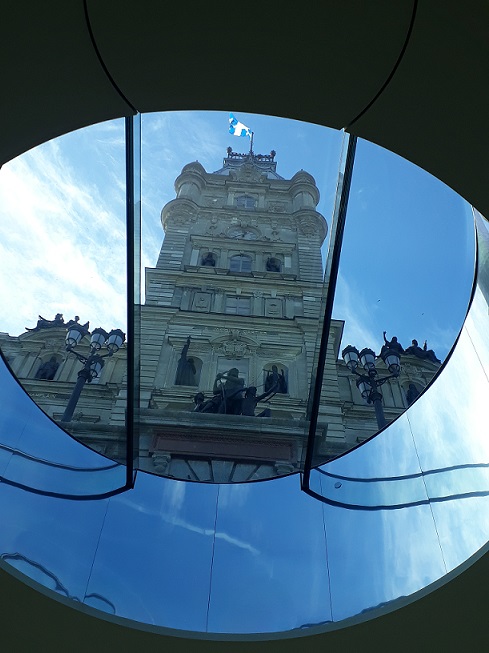
Nós fizemos a Visita Guiada ao Edifício do Parlamento e foi muito interessante para conhecer mais detalhes de sua história, além de todos os detalhes de sua arquitetura interna. O tour é gratuito, dura cerca de 75 minutos e precisa ser reservado pelo site: www.assnat.qc.ca/fr/visiteurs/visites-guidees.html . A visita se inicia no subsolo com essa vista linda da torre.
Continuando nossa Visita Guiada pela Assembleia Nacional de Quebec, passamos pelo Hall de Entrada, que tem essa linda Maquete Transparente que nos permite ter uma ideia do tamanho do complexo do Parlamento. Os detalhes nas paredes também chamou nossa atenção e nesse andar estão as salas de conferência e de imprensa, além da Escadaria que dá acesso às Salas Azul e Vermelha que visitamos na sequência.

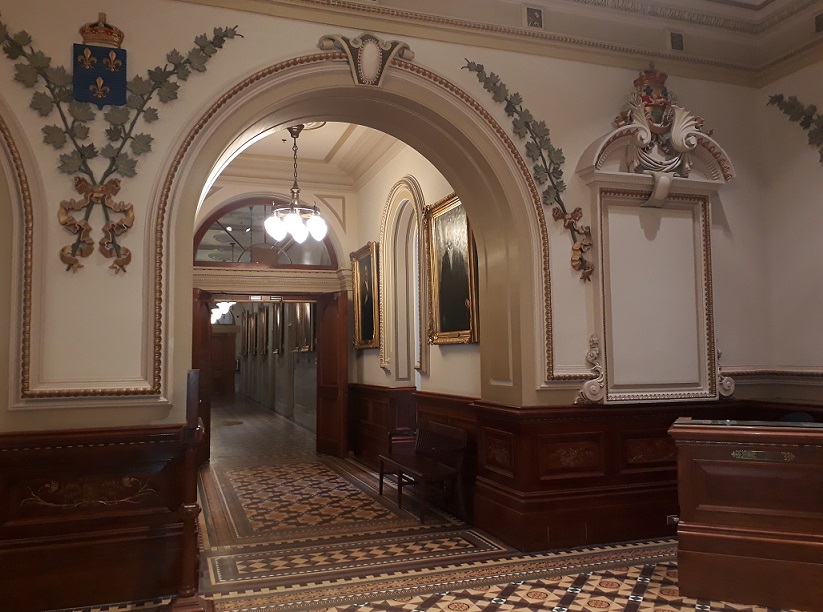
Detalhes da Decoração 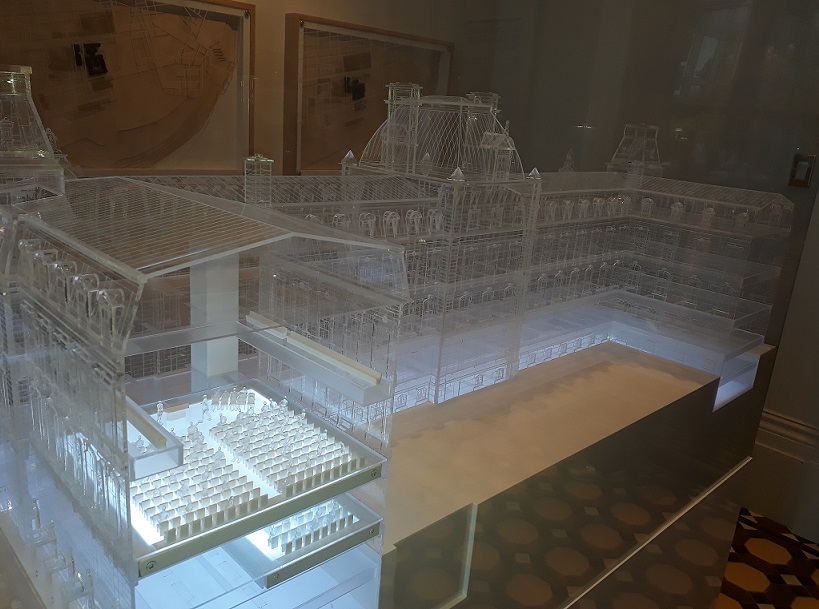
Maquete em vidro do Edifício
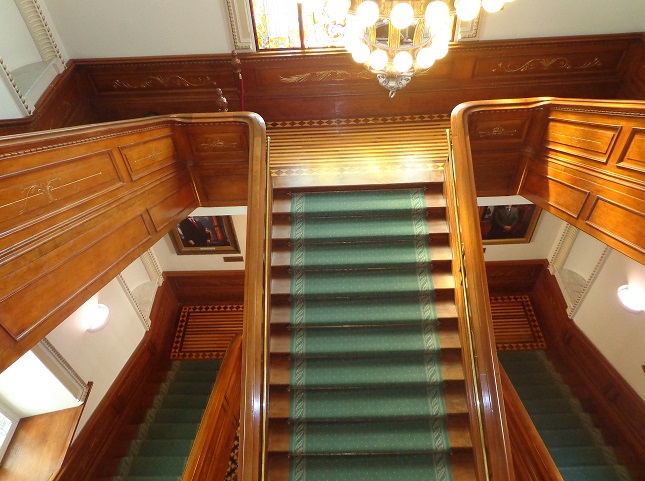
A Sala Vermelha é a sala da Câmara do Conselho Legislativo ou da Assembleia Legislativa, e de 1886 a 1968 sediava os trabalhos da Assembleia Legislativa (que agora está na Sala Azul) e atualmente serve para reuniões de comissões parlamentares e cerimônias de juramento, entre outros eventos parlamentares. Sua decoração é belíssima, realmente enche os olhos!!!
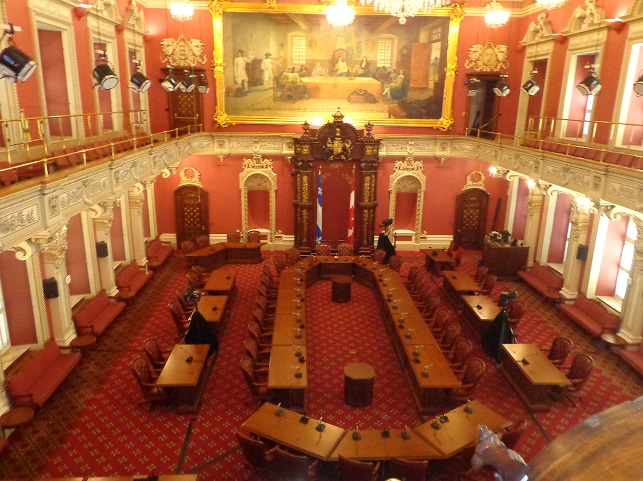
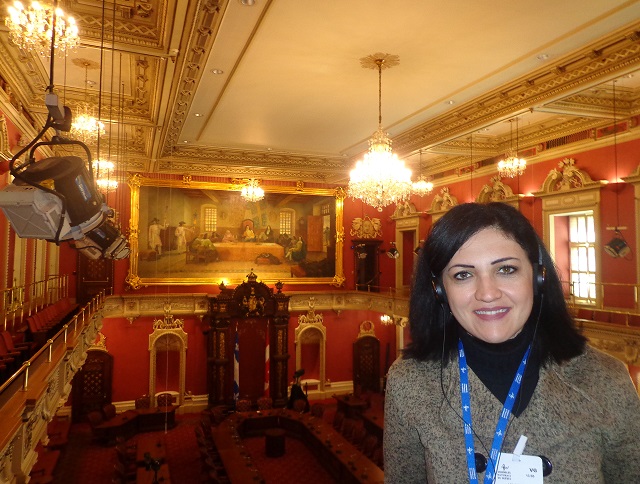
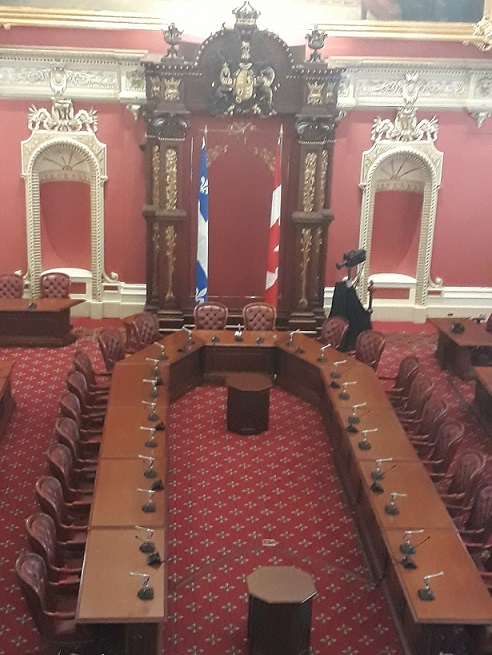
A Sala Azul é a Sala da Assembleia Nacional, o local de reunião dos deputados para votarem e discutirem seus projetos legislativos. Inicialmente era de cor branca, depois passou a ser verde e desde 1978 é azul para facilitar a transmissão televisiva. Também tem uma decoração muito bonita.
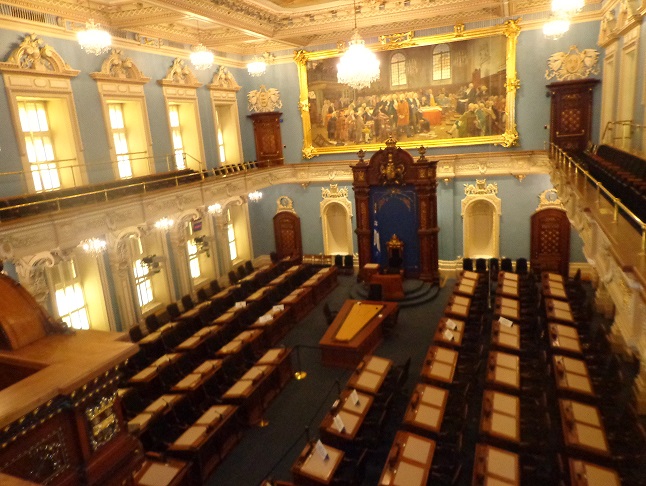
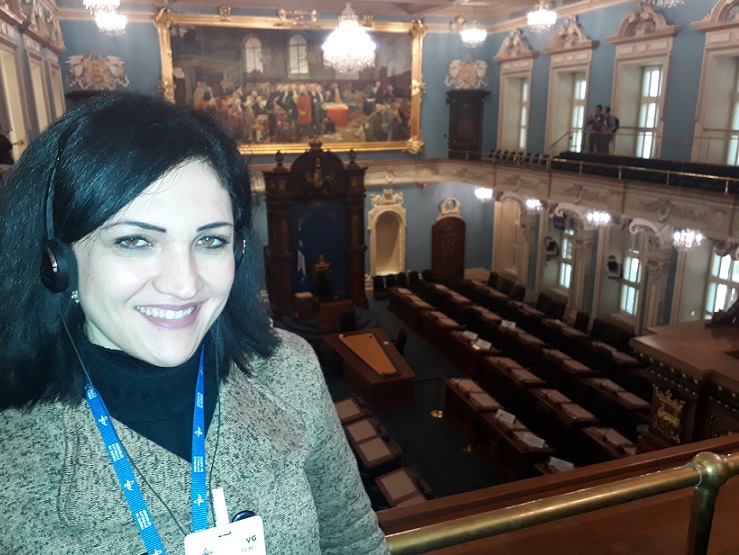
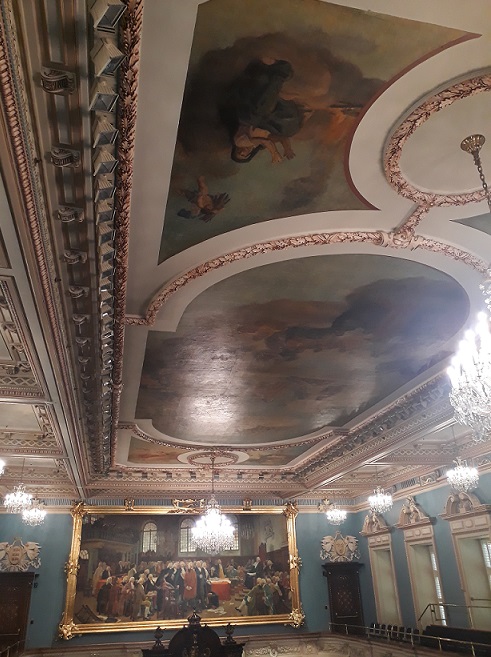
Também visitamos a Biblioteca, que tem uma excelente estrutura e é aberta ao público de segunda à sexta das 8h30 às 16h30. Suas colunas e vitrais são lindos.
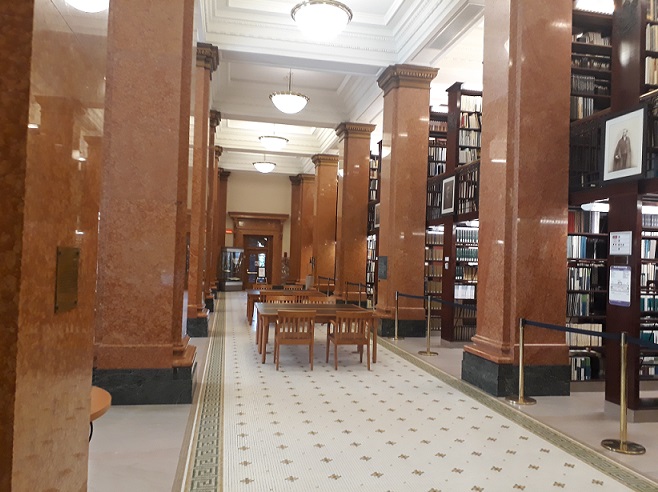
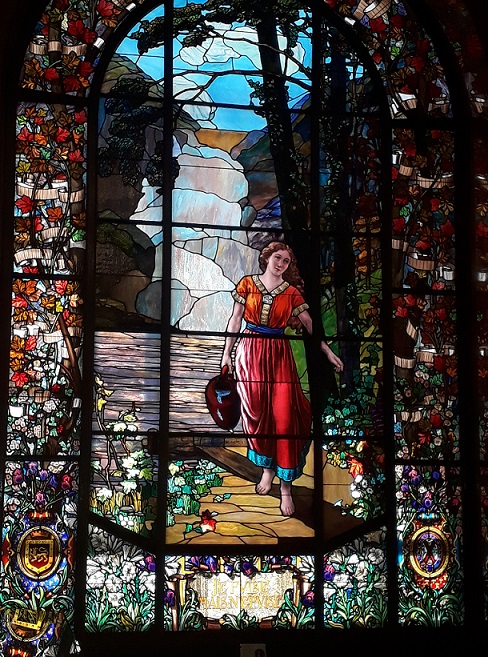
Terminando a visita guiada, vale a pena dar uma paradinha para contemplar os Jardins da Assembleia Nacional, ondeé possível encontrar várias espécies de árvores e plantas que representam a diversidade da flora de Quebec, com plantas anuais e perenes. Além disso, a Assembleia tem vários convênios para desenvolvimento de horticultura e também apicultura no local. Para saber mais detalhes é só conferir o site: www.assnat.qc.ca/fr/visiteurs/jardins.html
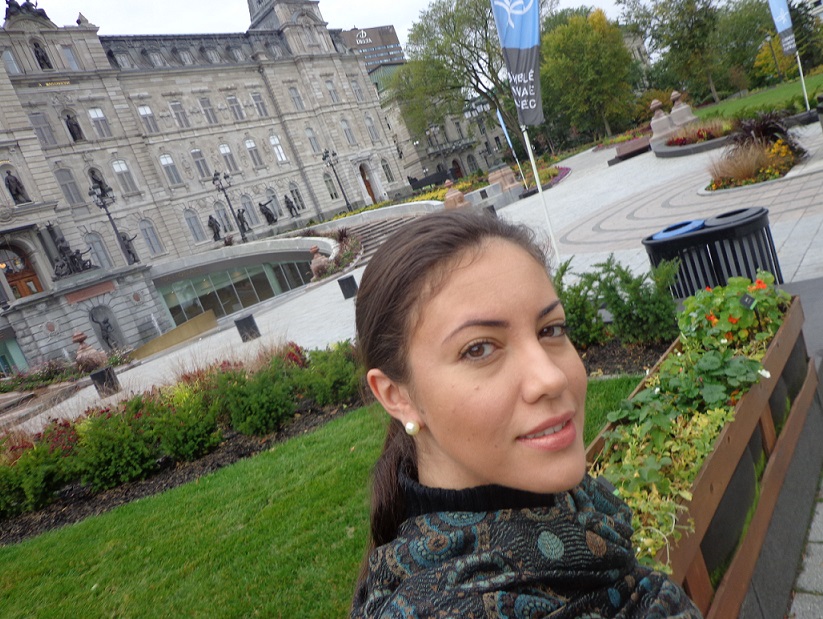
Para embelezar ainda mais a parte externa do Edifício do Parlamento, encontra-se a Fonte Tourny, que foi inaugurada em 2007 em comemoração ao 400° aniversário da cidade. Ela foi um presente da empresa La Maison Simons. A Fonte tem cerca de 7 metros de altura e 43 jatos d’água. Ela foi construída em 1854 e em 1855 foi premiada na Exposição Universal de Paris. Sua primeira instalação foi em Allées de Tourny (uma avenida de Bourdeaux na França), daí a origem do nome, porém, devido ao alto custo de manutenção, foi removida e vendida, passando por vários donos até ser encontrada em um antiquário por Peter Simons (presidente da La Maison Simons), que mandou restaurá-la para presentear a cidade de Quebec. A Fonte Tourny tem vários personagens e símbolos que remetem ao mundo marinho. Se tiver a oportunidade vá visitá-la também durante a noite, porque a iluminação noturna a deixa ainda mais bela.
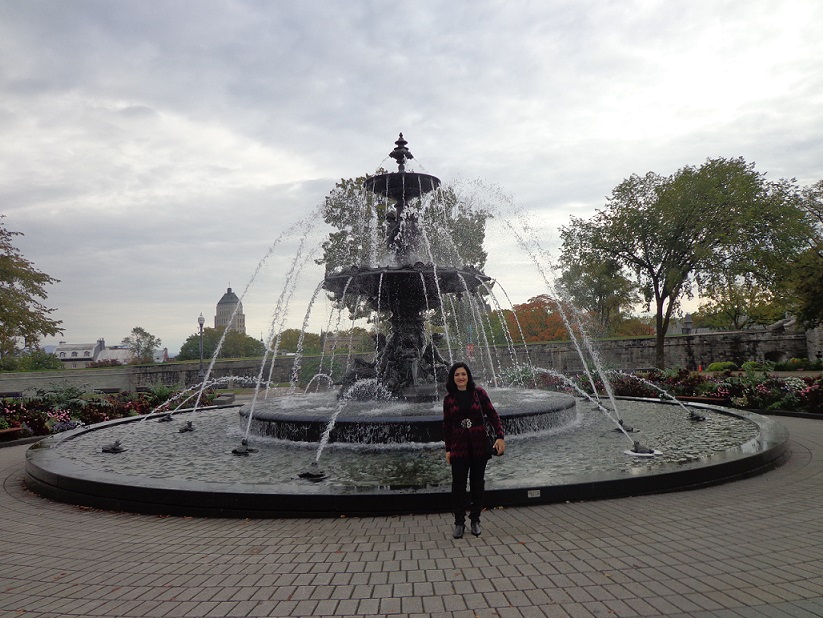


Falando em iluminação noturna que deixa ainda mais bonito, olha só que charme o Edifício do Parlamento à noite.
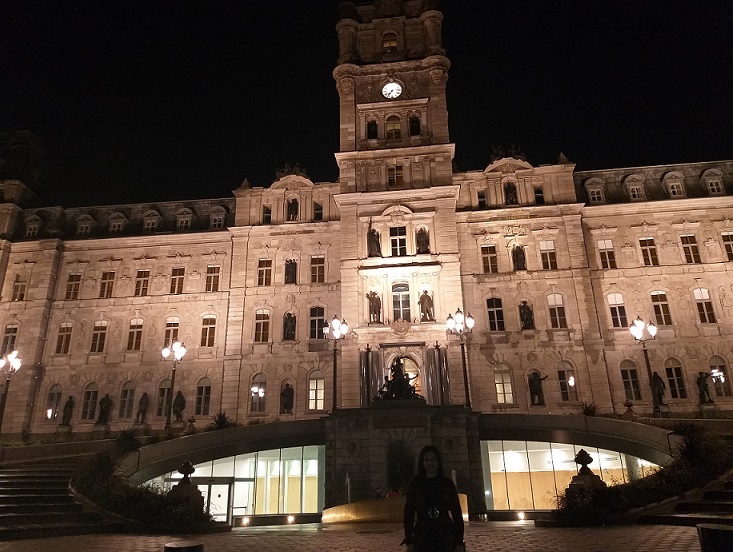
Outro lugar bem interessante em Quebec é a Place D’Youville , uma Praça muito bonitana Rue Saint-Jean, que é famosa por virar uma pista de esqui no inverno, garantindo muita diversão para os moradores e turistas. E nessa Praça também fica o Palais Montcalm, que é uma tradicional casa de espetáculos e concertos da cidade. Para saber detalhes da programação é só acessar: www.palaismontcalm.ca
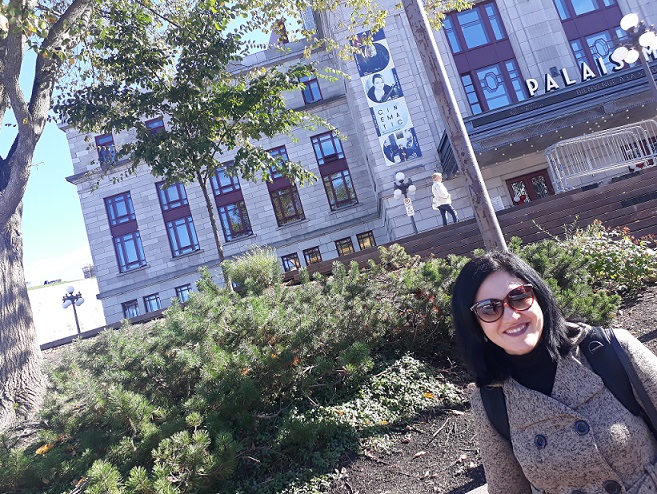
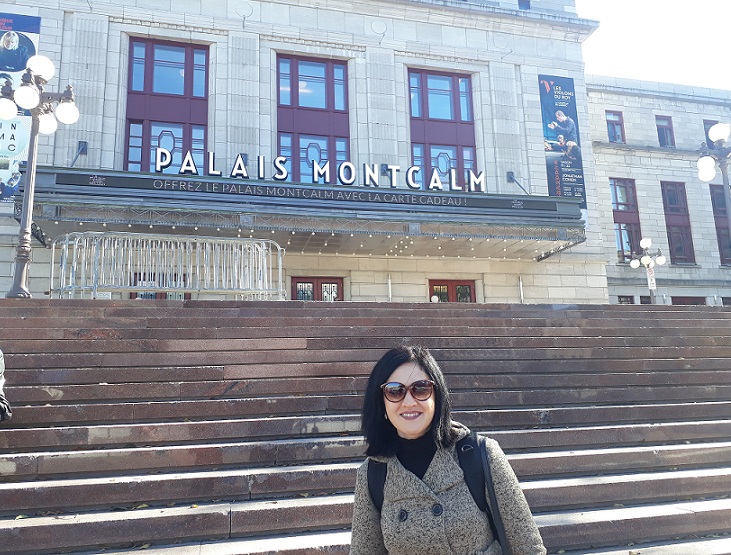
Além da Place D’Youville, a Rue Saint-Jean tem muitos outros atrativos, ela é uma das ruas mais antigas e animadas da cidade, tem uma parte que fica dentro das Muralhas, fazendo parte da Velha Quebec e outra parte que fica fora. A Rue Saint-Jean tem muitos edifícios antigos e históricos, tem comércio variado, bares, restaurantes e até o Portal Saint-Jean, que foi construído em 1693, passou por várias reformas, sendo o atual de 1940. Vale lembrar que a parte da Rue Saint-Jean localizada na Velha Quebec torna-se rua só para pedestres no verão a partir das 18h durante a semana e o dia todo nos finais de semana.

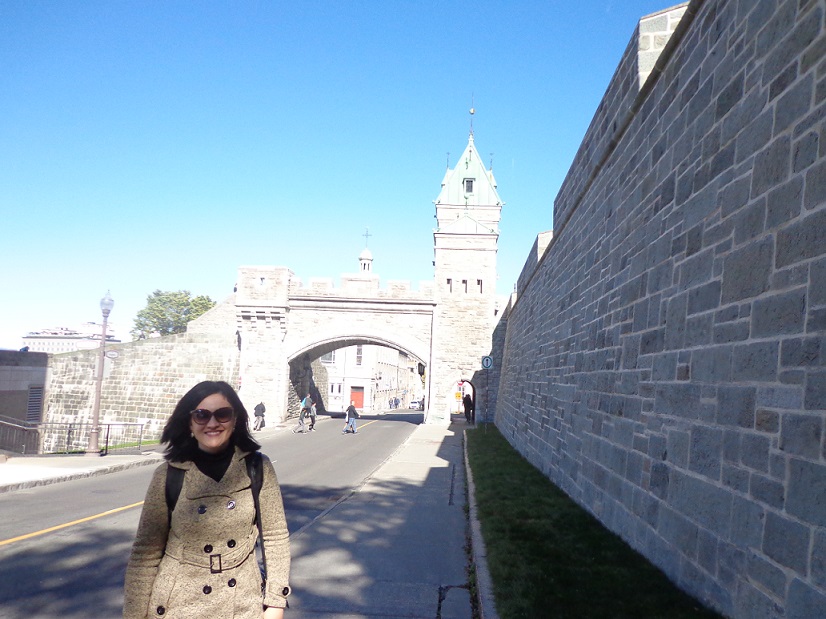
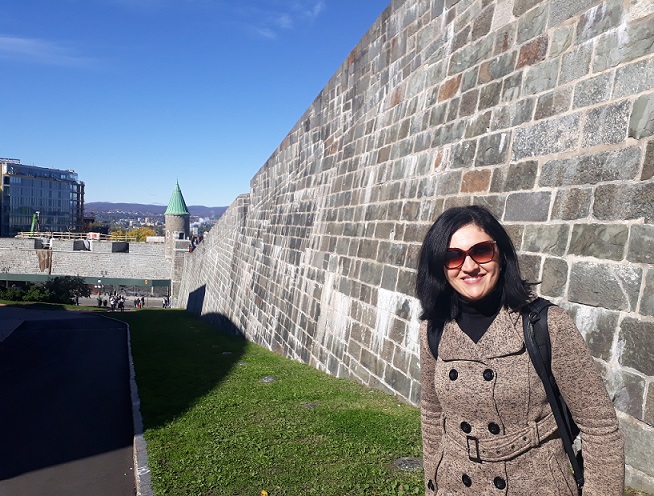
Ainda na Rue Saint-Jean no número 634, visitamos o Erico – Chocolaterie Créative – Musée du Chocolat (ou Erico – Fábrica de Chocolate Criativa – Museu do Chocolate), que é um espaço pequeno, porém muito aconchegante, que conta a história do chocolate desde o seu surgimento com os maias, passando por toda sua evolução e como foi conquistando os paladares até chegar a atualidade. Além disso, você pode aproveitar para se deliciar com os chocolates gourmet desenvolvidos na fábrica. Para saber mais informações é só acessar o site: https://www.ericochocolatier.com/
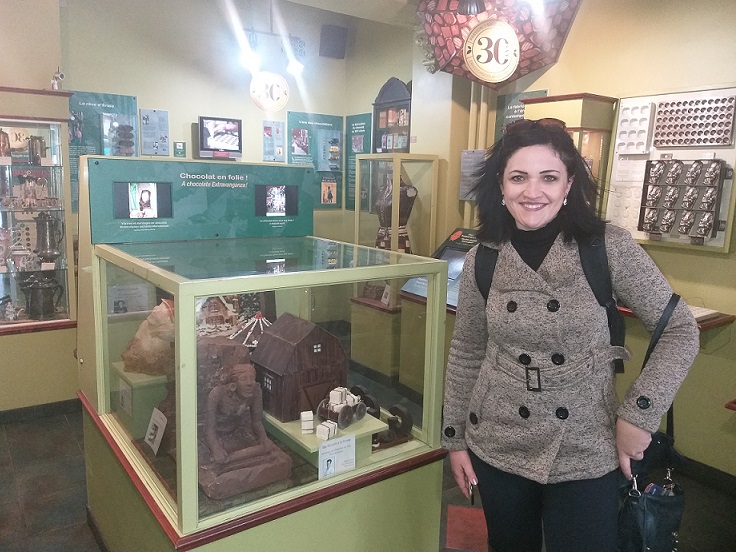
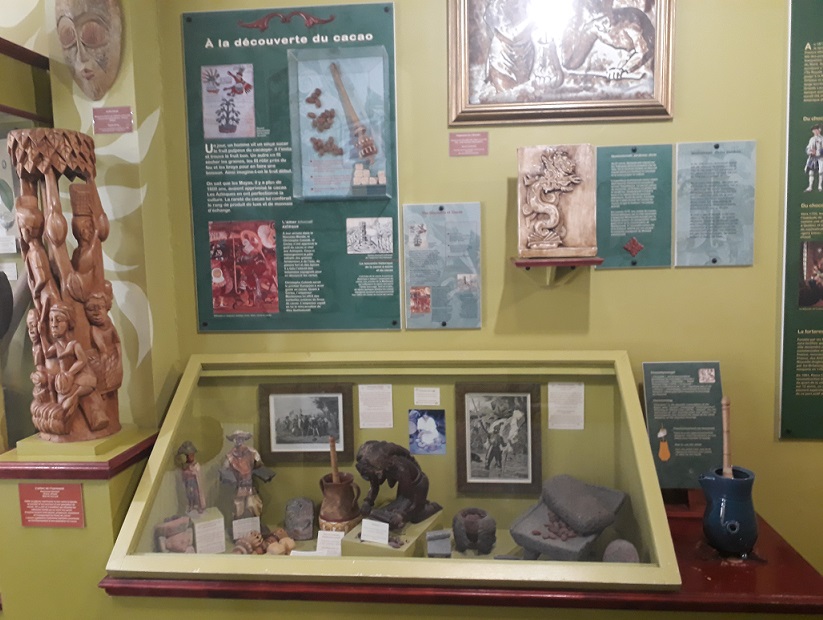
Continuando nossa caminhada pela Rue Saint-Jean, na altura do número 400 nos deparamos com a Église Saint-Jean-Baptiste de Québec (ou Igreja de São João Batista de Quebec)¸ que foi construída entre 1881 e 1884, com projeto do arquiteto Joseph Ferdinand Peachy no estilo do Segundo Império, após um incêndio ter destruído a igreja anterior.
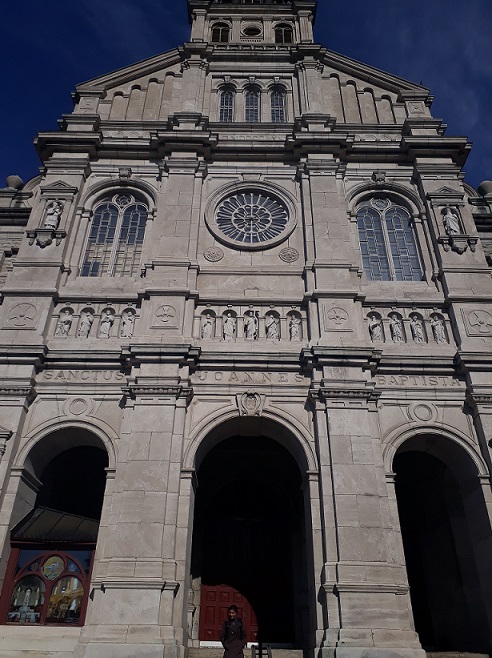
A Igreja de São João Batista foi declarada como Monumento Histórico de Quebec em 1990, e é realmente muito bonita, a decoração do Altar chama bastante a atenção e a Igreja homenageia São João Batista, que é o padroeiro dos canadenses franceses. Mais detalhes e informações estão no site: https://www.saintjeanbaptiste.org/
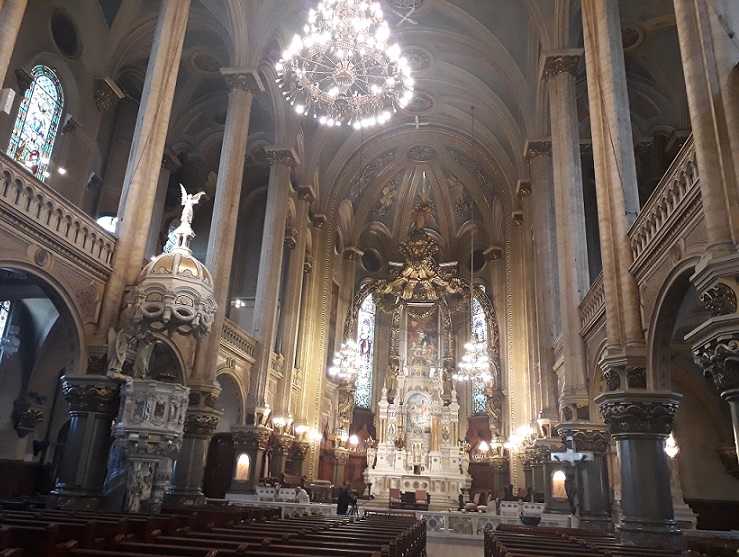
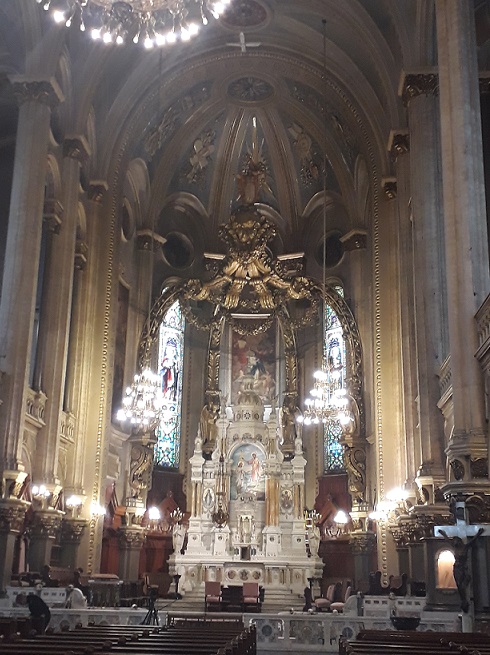
Altar 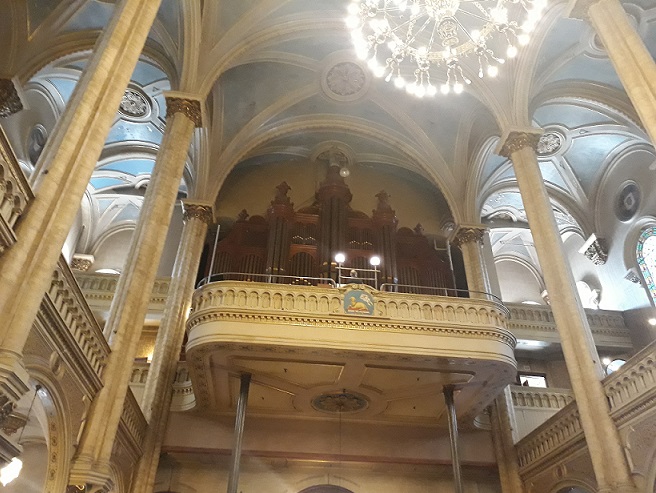
E Órgão em Detalhe

Além da Rue Saint-Jean, outra que é bem famosa na cidade é a Avenue Cartier que é frequentada tanto por turistas quanto por moradores locais, que vão até ela tanto em busca das boutiques de luxo, quanto de diversão e entretenimento, já que essa avenida concentra cinema, bares, restaurantes e tem uma vida noturna bem agitada!!! Se tiver um tempinho, vale a pena dar uma passadinha por lá!!!
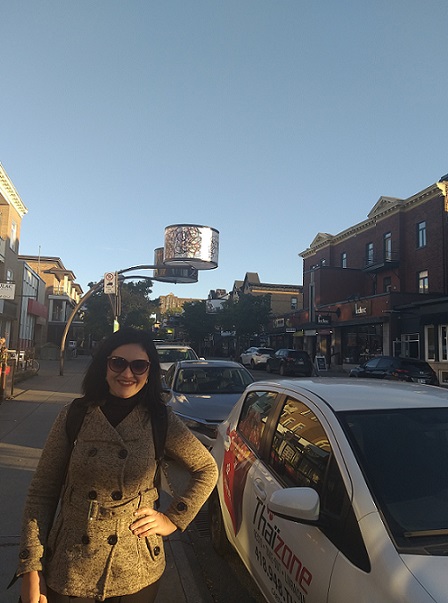
Passeando pela Avenue Cartier 
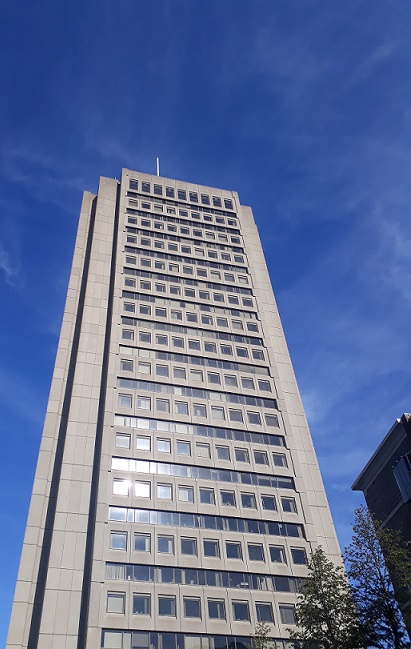
Esse passeio de agora é pra você que, assim como eu, ama altura e gosta de ter uma vista privilegiada lá de cima. Vamos visitar o Observatoire de la Capitale (ou Observatório da Capital), que nos proporciona uma vista maravilhosa de 360º da cidade de Quebec e fica no 31º andar do Edifício Marie-Guyart(1037, Rue de la Chevrotière).
A visão do Observatorie de la Capitaleé realmente encantadora e tem painéis interativos explicativos, que além de nos mostrar os locais de destaque daquele ponto de observação, também nos conta sobre sua história. Foi possível avistar o Edifício do Parlamento, o Château Frontenac, a Citadelle, entre muitos outros. Dá só uma olhadinha nesse vídeo que postei no nosso canal no youtube para ver que beleza de vista: https://youtu.be/sFfjAknMno0


Do Château Frontenac 
Do Edifício do Parlamento…
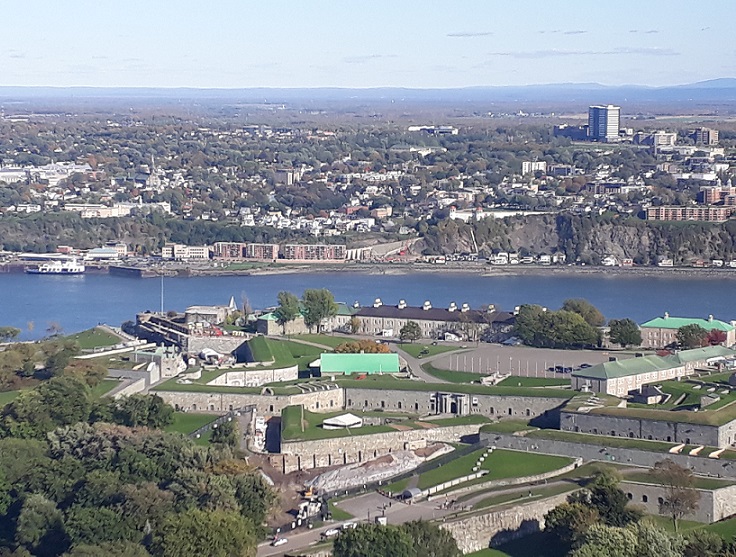
Os ingressos para o Observatoire de la Capitale custaram CAD$ 14,75 para adultos, mas tem desconto para estudantes, idosos e crianças. Para maiores informações e horários de funcionamento é só acessar o site: https://www.observatoire-capitale.com/
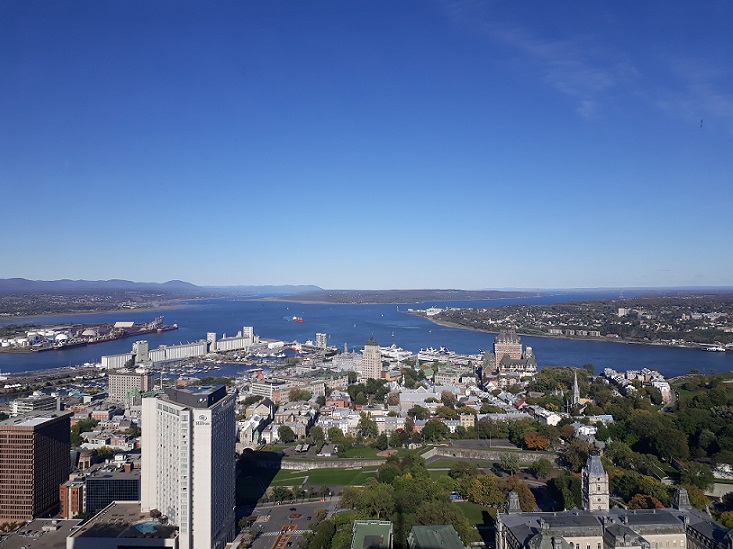
E para encerrar nosso tour por Quebec, escolhemos um lugar belíssimo: o Restaurante Giratório Ciel! Bistro Bar Tournant, que fica no Hotel Le Concorde (1225, Place MontCalm, na esquina com a Grande Allée Est). Desde que chegamos na cidade e já avistamos o prédio desse hotel, minha irmã e eu ficamos encantadas com sua beleza e curiosas para saber o que era, então nos informamos e descobrimos que nessa parte redonda ficava um restaurante giratório, então já entramos em contato para saber como funcionava e nos programamos para passar por lá antes de irmos para o aeroporto para retornar para Toronto.
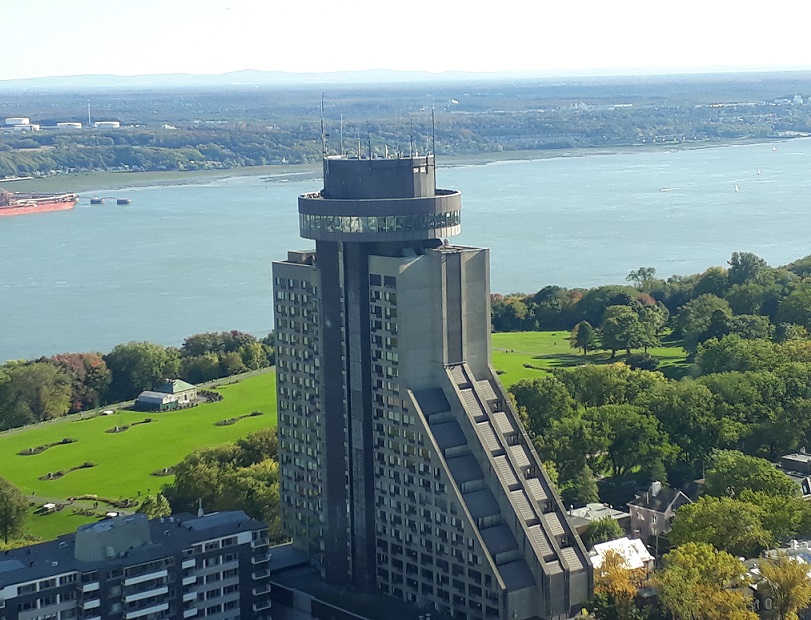
O Restaurante Ciel! Bistro Bar fica no 28º andar do Hotel Le Concorde e foi inaugurado para as comemorações do Natal de 2014. O ambiente é muito agradável e o giro completo dura cerca de uma hora e meia, tempo suficiente para tomar um drink, apreciando essa vista incrível. Vale muito a visita!!!
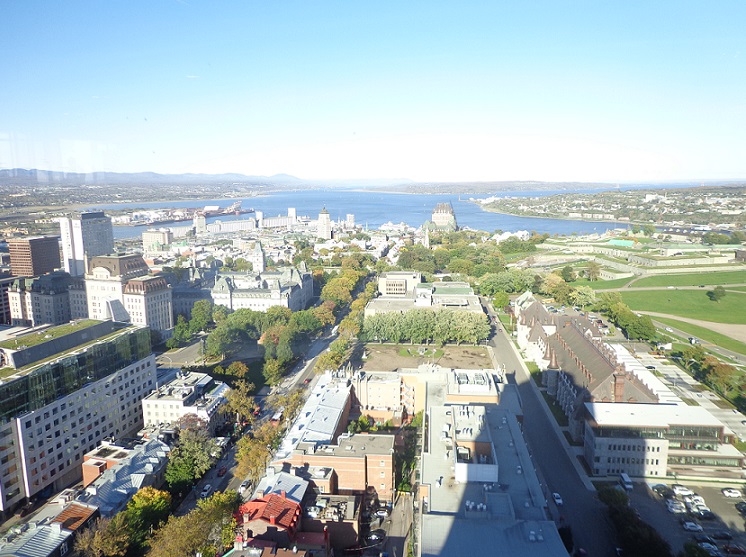

Para saber mais informações sobre o cardápio e também o horário de funcionamento do Ciel! Bistro Baré só dar uma olhada no site: https://www.cielbistrobar.com/#/ . E com esse brinde nessa vista encantadora nos despedimos de Quebec e também do Canadá com um Até Breve!!!
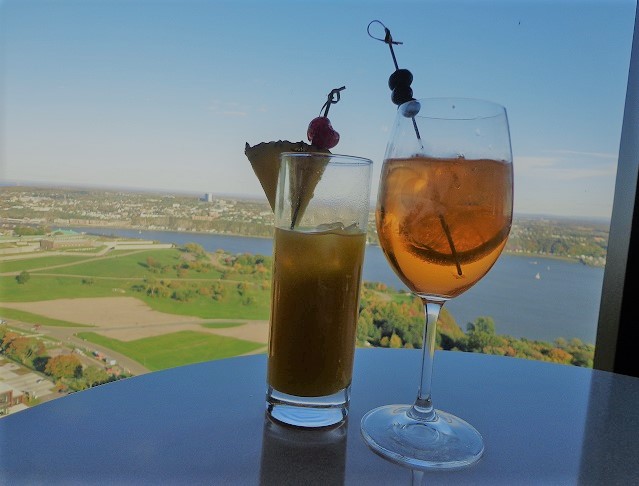
Vou encerrando aqui essa postagem e nossa jornada pelo Canadá, agradecendo de coração sua companhia!!! Se você não viu ainda ou quer recordar como foi essa viagem do começo ao fim é só clicar ao lado, na experiência que quer conhecer, desde Toronto, passando por Niagara Falls, Ottawa e Montreal.
E lembrando que se você gostou desse post, compartilhe com seus amigos para que possam se divertir também, e siga nossas redes sociais para saber em primeira mão as novidades: Instagram (@cadaviagemumabagagem) e Facebook (https://www.facebook.com/cadaviagemumabagagem/ ) e se inscreva no nosso canal do Youtube (Cada Viagem uma Bagagem): https://www.youtube.com/channel/UC5Q29-MYuWjvPH__wWhF42A
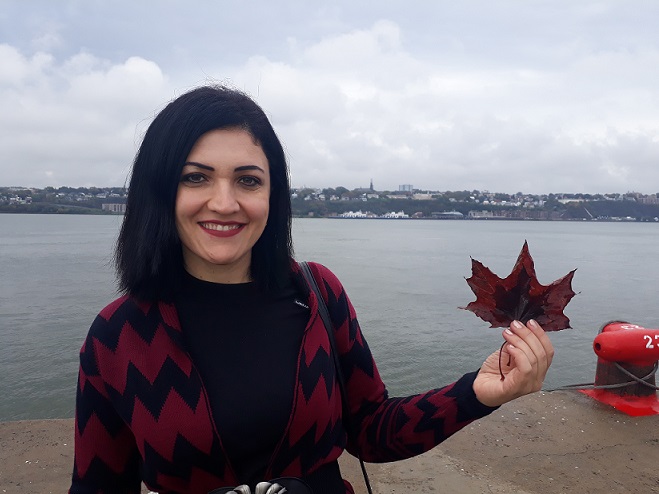
The Icing on the Cake in Quebec
To end our journey through Canada, we will visit this charming city, which takes us back in time with its walls and castles !!! Follow me on this tour of the main tourist sights and then tell me if it really isn’t “The Icing on the Cake in Quebec”!!!

Quebec City (which is the capital of the Province of Quebec) is approximately 500 miles from Toronto, you can go by car, bus and train, but we opted for the plane to save time (the flight to Jean-Lesage International Airport Quebec (YQB) takes about 2 hours). The distance from the Airport to the city center is around 11 miles and we took an Uber to the Hotel Château Laurier which is very beautiful and has an excellent location (located at 1220 Place George V Ouest), very close to “Grande Allée” (point of the nightlife), to the “Plains of Abraham”, and it is possible to walk to Old Quebec. For more information about the Hotel, check the website: https://www.hotelchateaulaurier.com/.

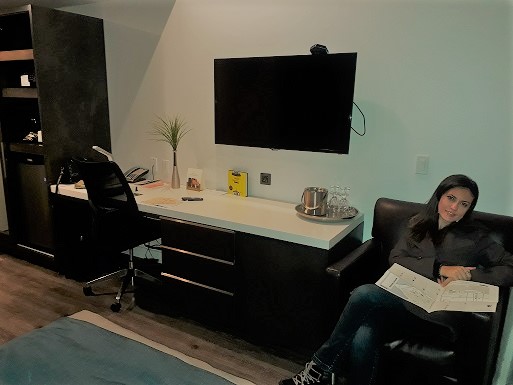
Room 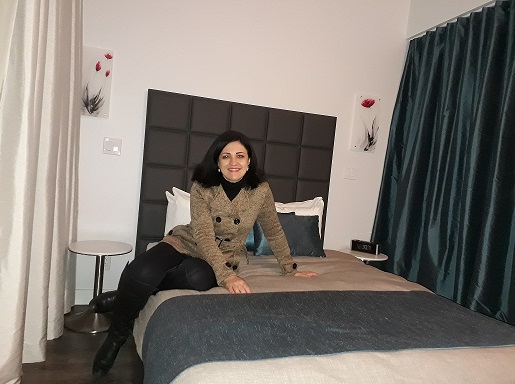
Now, let’s start our tour with one of Quebec’s main postcards, the Château Frontenac, which is a beautiful castle hotel designed by architect Bruce Price, inspired by the medieval castles of the Loire Valley in France and opened in 1893. The construction was made by the Canadian Pacific Railway to encourage high society tourism that would use their trains to reach the hotel. This has been renovated over the years and now has more than 600 rooms.


Even if you are not staying at the hotel, it is possible to take a guided tour of Château Frontenac to learn about the stories and the entire interior of the castle. Tickets are for sale at the hotel and cost CAD$ 21 (for adults), but have discounts for children and family combo. The tour is by appointment, lasts about an hour and is all thematic, even our Guide was characterized by Jean Talon, the first governor of New France.

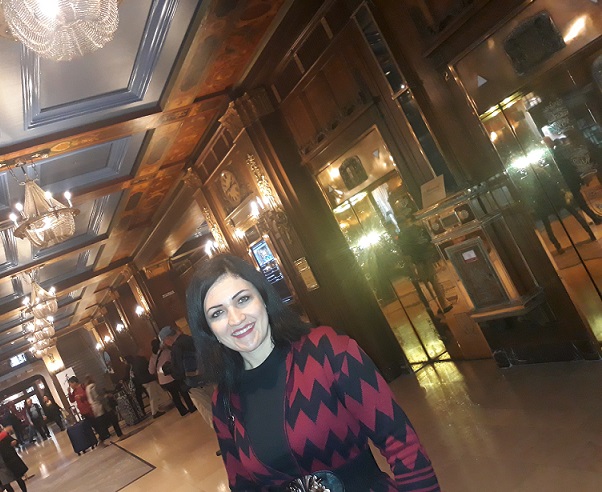

Right in the Entrance Hall of the Château Frontenac we came across a painting with the portrait of Louis de Buade, Count of Frontenac, patron and first resident of the Hotel, who was also governor of New France.
Continuing our Château Frontenac Tour, we visited the Bar, that has this beautiful detail on the ceiling and a well-served wine cellar.


At Château Frontenac Bar 
Then we went to the Salon Rose, where women used to get together, while men discussed business in other rooms. Currently it is rented for parties, as well as the BallRoom, which is also beautiful.

Salon Rose 


Speaking of parties, many couples will photograph there on their wedding day, especially on this balcony (have you ever imagined that a chic wedding party at Château Frontenac?)

The architecture and charm of the Château Frontenac have already won over several celebrities, who stayed there as Queen Elizabeth II, filmmaker Alfred Hitchcock, among others, including a “secret” meeting between the President of the United States Franklin Roosevelt, the First British Minister Winston Churchill and Canadian Prime Minister William Lyon Mackenzie King.
On the guided tour of Château Frontenac we also visited an Exhibition with Utensils from Ancient Times and got to know the story of my sister Ane’s namesake, Anne de La Grange-Trianon, Countess of Frontenac, who was part of the French aristocracy and married Louis de Buade (Count of Frontenac), even against the will of her father who did not accept the relationship for financial reasons, she continued in France and he came to Quebec, went through a great trauma with the death of the couple’s son. She never visited Quebec, but helped the city with diplomatic issues in France. When Count Frontenac died, he ordered his heart (the human organ) to be taken to her, who refused to receive the gift because she had nothing to do with it. The Countess’s strong personality, isn’t she?
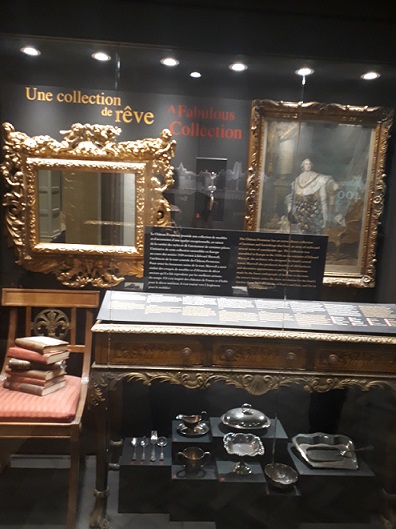
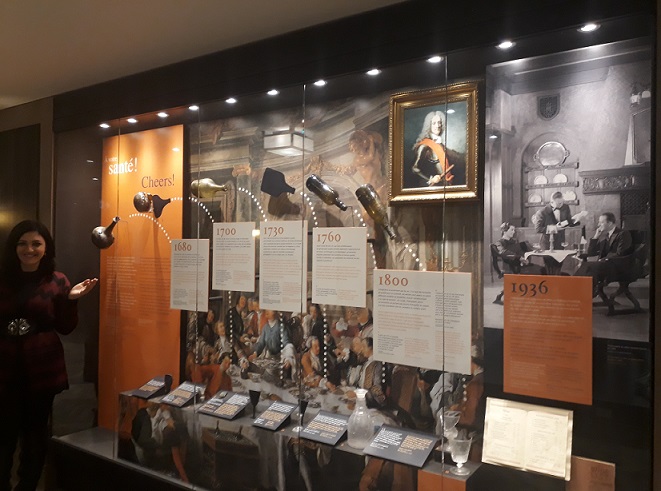

It is very worthwhile to visit the Château Frontenac, either with the internal guided tour or with the external look, both during the day and at night, you will guarantee beautiful photos to keep as a souvenir and post on social medias. To find out more information just visit the website: https://www.fairmont.com/frontenac-quebec/

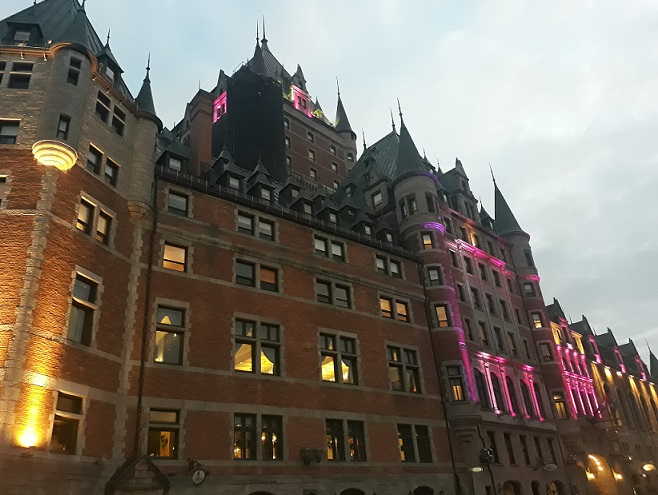
The oldest part of the city, known as Old Quebec / Vieux– Quebec is protected by Quebec City Walls or Fortifications, which were built a long time ago and remain today, making the city the only one with this characteristic in the city. North America. And among the 2,85 miles of the walls, there are some Portals, among them Port Saint-Louis, which was built in 1693 and underwent several renovations until reaching the current form that is from 1878. It is located on Rue Saint–Louis and it is possible to walk through it to have a different view of the city.
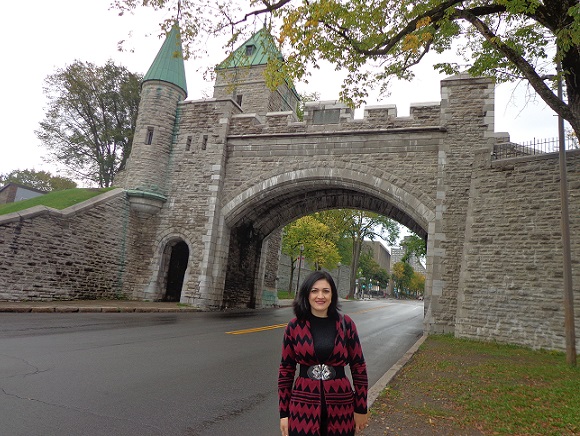

During the day 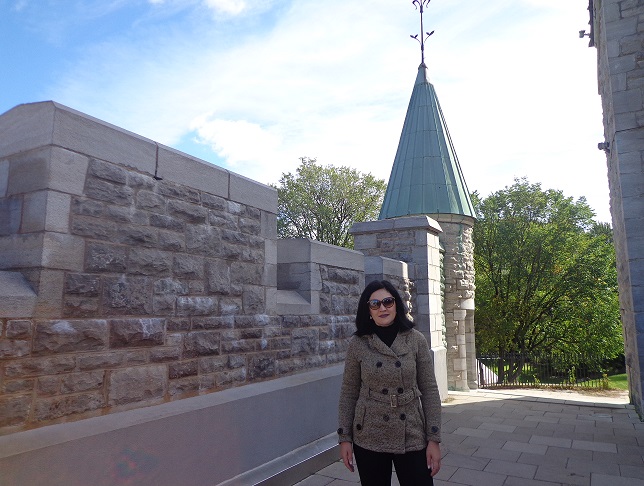
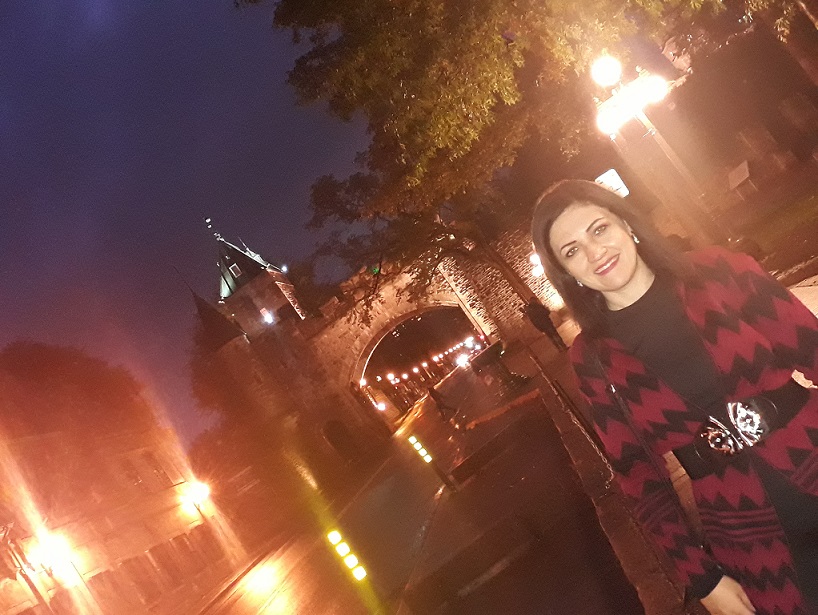
It is worth remembering that Quebec has a beautiful architecture in French style (as well as its language which is predominantly French due to its colonization, but English is also considered an official language). The city was founded in 1608 (one of the oldest in North America) and declared by UNESCO as a World Heritage Site in 1985. You will be able to appreciate this architectural richness in several streets of the city, such as on “Rue Saint Louis”.
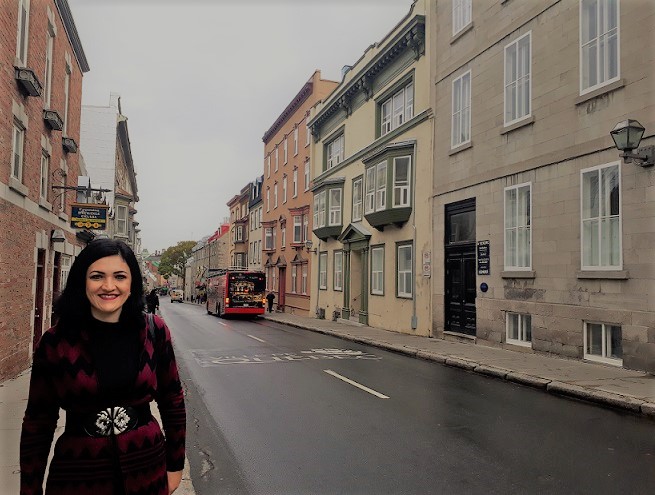
And it was enjoying the scenery and walking along Rue Saint Louis, that we stopped for the “Petit Déjeuner” (which is what they call Breakfast) at Nili Alimentation (76, Rue St. Louis), a very charming and cozy place that with its stone walls transports us to the medieval period and where it was possible to taste again the Café Van Houtte that we know in Montreal and won us over!!

Nili Alimentation 
Tasting Café Van Houtte Again…
Going down Rue Saint-Louis, arriving near the Château Frontenac (on the opposite side), very close to the Quebec Sign (which is a must-see stop for the photo) is the Musée du Fort (or Museum of the Fort), which through of sound and visual effects tells the military history of Quebec. To find out more about the museum’s operation, just access the website: www.museedufort.com/
This part around the Château Frontenac is called Terrasse Dufferin, which is a wooden boardwalk built in 1879 and which gives us a beautiful view of the Saint Lawrence River. The name is in honor of Lord Dufferin, who directed the construction of the Terrasse and was governor-general of Canada at that time. Below Terrasse Dufferin are the remnants of Fort Saint Louis and Château Saint-Louis, which once served as the residence of rulers. Take advantage of this beautiful landscape to take the traditional photos with the Maple Leaf, a symbol of Canada.
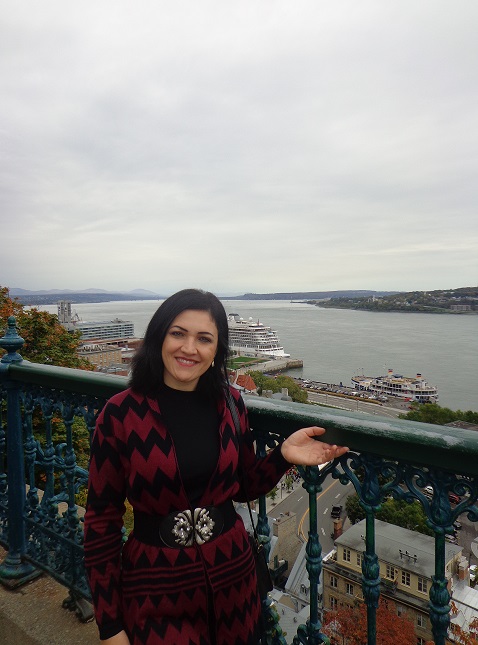

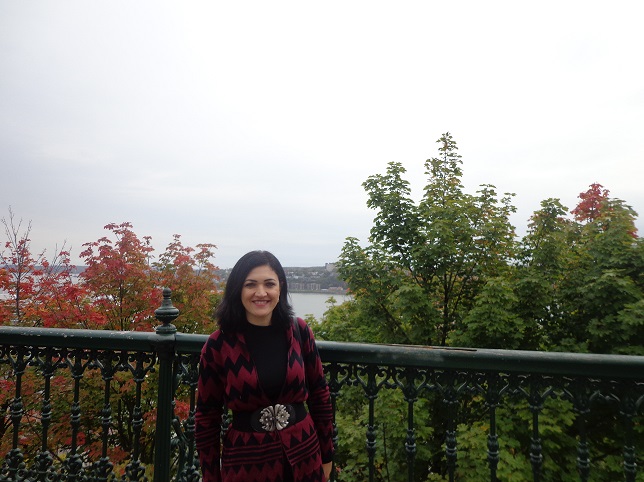
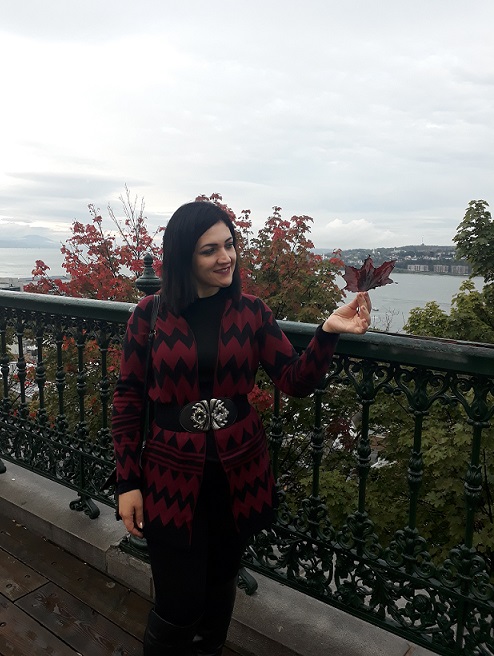
With a Maple Leaf
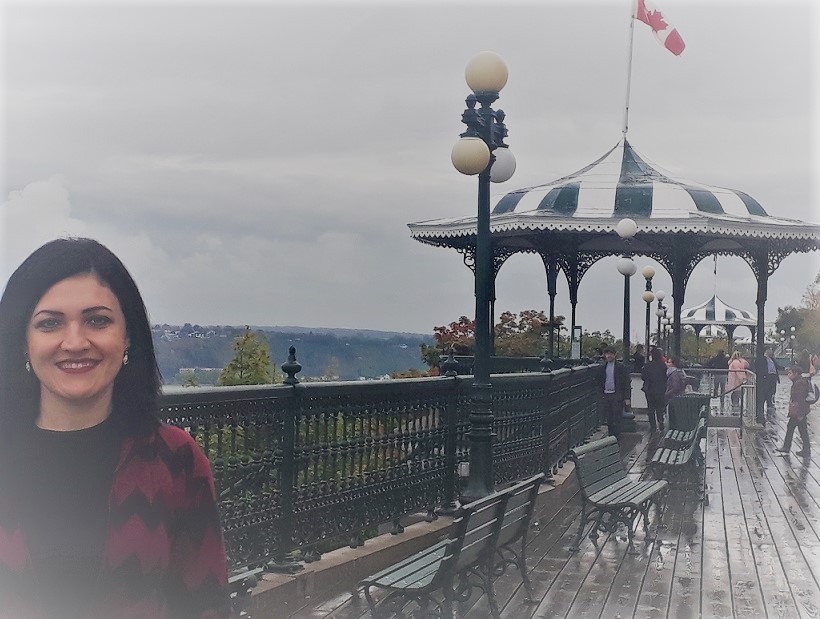
Terrasse Dufferin is home to the Monument to Samuel de Champlain, the founder of Quebec City, who was a French geographer and explorer, among other skills. The work is by Paul Chevré and was inaugurated in 1898 to honor this important name in Canadian history. The monument made of marble and bronze is 52,49 ft. high, with only the Statue of Samuel de Champlain measuring 13,94ft.
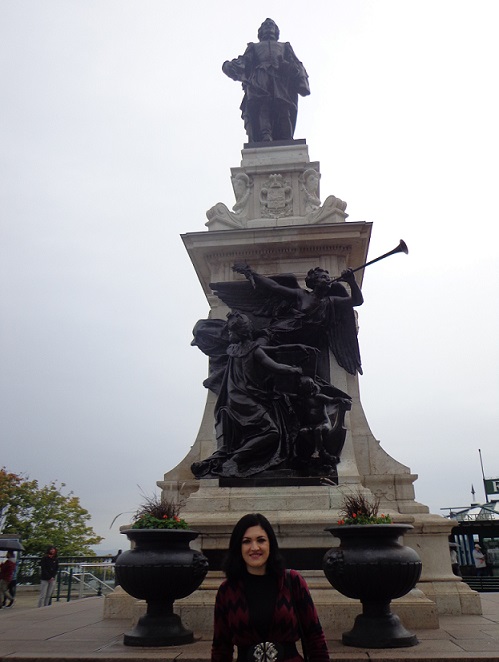

All this part we have visited so far is known as Haute–Ville (or High City) that together with Basse-Ville (or Lower Town) composing Old Quebec. To get to Basse-Ville there are other ways of access, but we chose the Funicular because it is faster and also to be able to enjoy the view. The first funicular started to operate in 1879, and then it underwent renovations until it reached the current model. The fare costs CAD $ 3.75 per trip. Entries are at Terrasse Dufferin and at 16, Rue Petit Champlain. For more information and details of operation, just access the website: https://www.funiculaire.ca

Goiong down by… 
Funicular
Now that we have gone down the funicular, let’s start exploring Basse Ville, which enchants us with the details and charm of its streets and its beautiful architecture. And it was here that we found the “Eternal Snow” Installation by French artists (and Toronto residents) Lucie Bulot and Dylan Collins, which wraps the bust of King Louis XIV (already in the Square) in a transparent globe where a snowstorm occurs eternal, representing the encounter between King Sol and the Rigorous Winter of Quebec. This work is part of the 6th Edition of “PassagesInsolites” (or Unusual Passages), which brings together 14 works by 40 artists spread across different public roads in the city to inspire people to look around the world (and the daily route) of a different way. The exhibition was produced by “ExMuro” (https://exmuro.com/en/), curated by Vincent Roy. Really a very interesting idea and the artists are to be congratulated for the work!!!
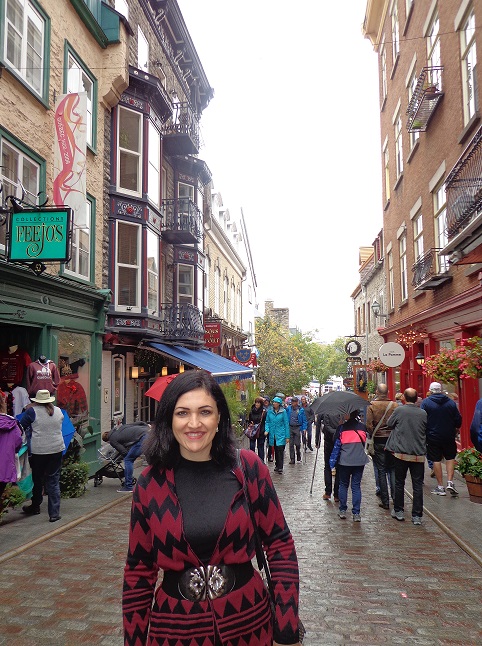
Exploring Basse Ville 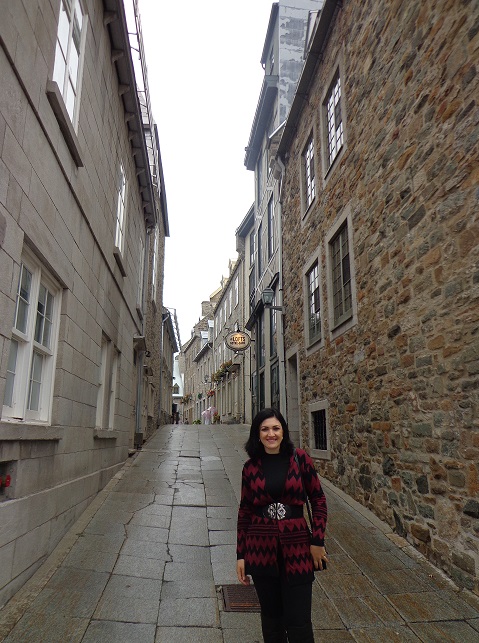
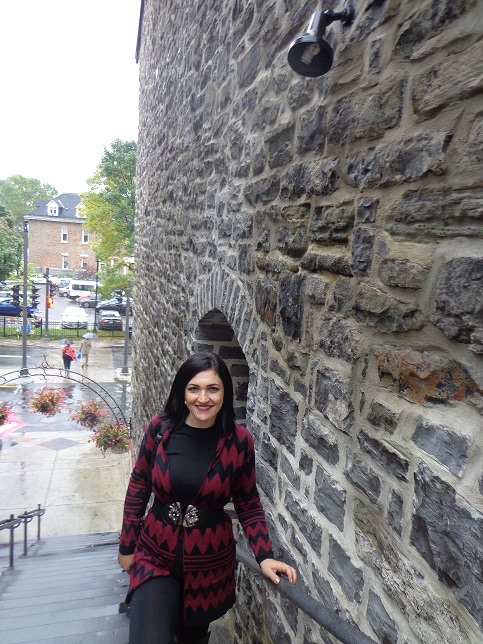
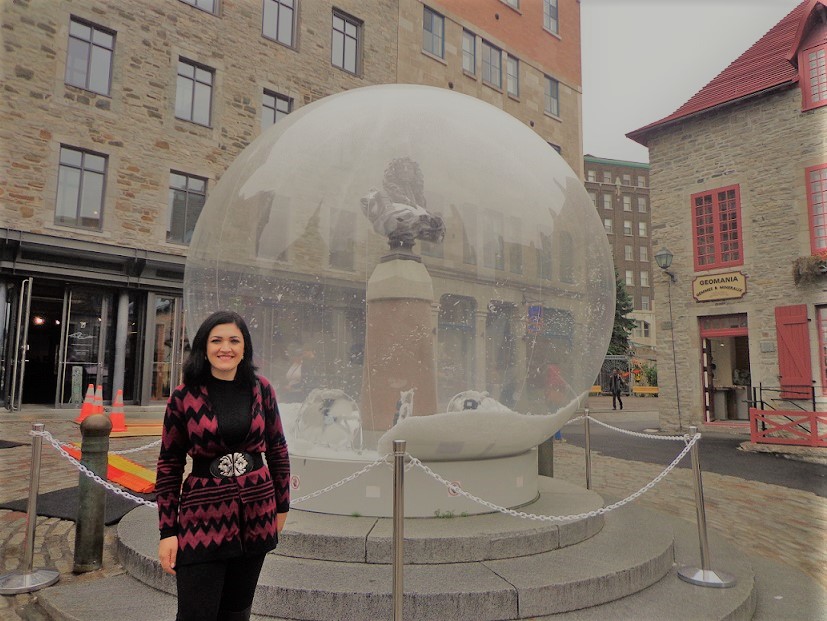
In the same square where this work of art was, Place Royale (or Royal Square), one of the main and most famous squares in the city, is the Church of Notre–Dame des Victoires (or Our Lady of Victories), a beautiful church of stone facade, which was built between 1687 and 1723, was bombed in 1759, but was fully restored in 1816.
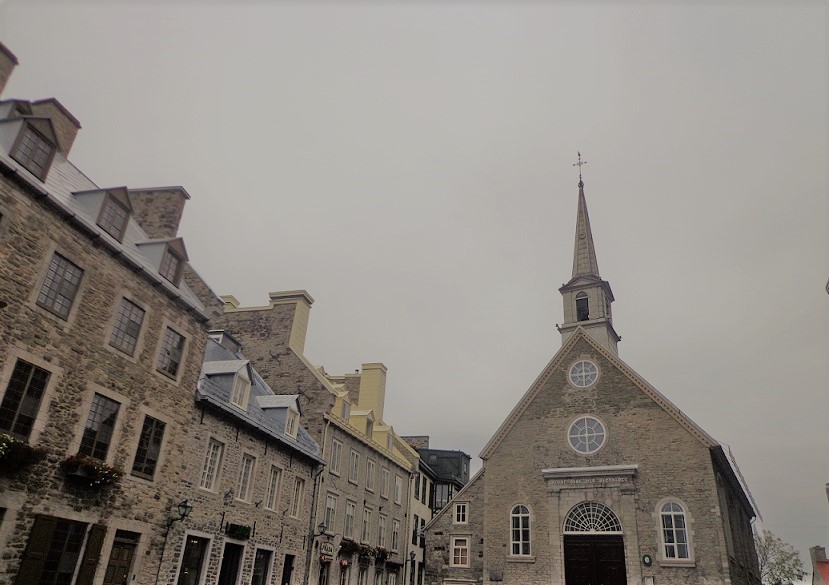
The name of the Church (Notre-Dame des Victoires) is a tribute to the French victories over the English in 1690 and 1711. So much so that it hung from the roof of the The Church has a model of the ship “Brézé”, which in 1664 brought a French troop to help expel British invaders. To find out more details and Mass times just take a look at the website: https://www.notre-dame-de-quebec.org/notre-dame-des-victoires . Another curiosity is that both the Church and the Square were locations of the film “Catch Me If You Can” (from 2002) with Leonardo di Caprio and Tom Hanks.


Church Organ 
andl Altar
Continuing our walk through the Basse Ville, on Rue Notre-Dame, we come across a beautiful Mural “La Fresque des Québécois” (The Fresco of Quebecers), which in its 420 m² tells the History of Quebec, through its illustrious characters, architecture , fortifications, staircases, among other elements, even have the challenge of finding Two Cats in painting. I’m not going to tell you where they are in order not to spoil the surprise, but then tell me in the comments if you found them. The mural was inaugurated on October 17, 1999, with the design and production of “Cité Création (https://citecreation.fr/ ), with the participation of Hélène Fleury, Marie-Chantal Lachance and Pierre Laforest. To find out more information about this mural just access: https://www.capitale.gouv.qc.ca/nos-projets/fresques/fresque-des-quebecois.


Speaking of murals, there are several spread across Quebec. We visited two more, the “Fresque du Petit-Champlain” (102, Rue du Petit-Champlain, was designed by Murale Création, portraying important stages in the history of the Cap-Blanc port workers’ district and its workers, the bombings and landslides suffered in the area, opening on October 14, 2001 and restored in 2016) and the “Fresque BMO de La Capitale Nationale du Québec” (or Fresco BMO of the National Capital of Quebec) (which is in the Haute Ville, in 1037, Rue de La Chevrotière, on a wall of the Marie-Guyart Building, opened on October 30, 2008 and portrays the facade of the Parliament Building with several important characters in honor of the city’s 400 years of political history). To find out more about these and the other murals spread across Quebec, just look at the website: https://www.capitale.gouv.qc.ca/nos-projets/grille/fresques



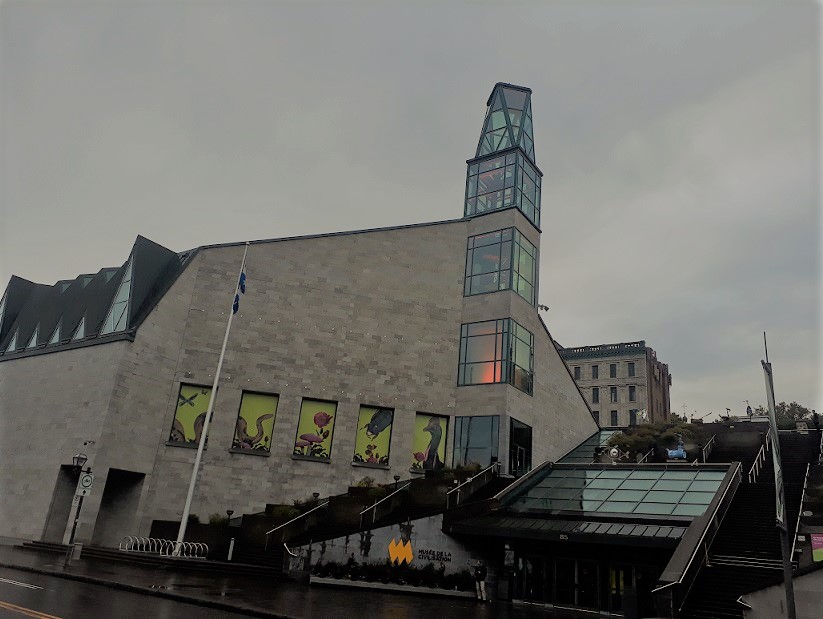
Another place you will love to visit in the Lower City is the Musée de la Civilization (or Museum of Civilization), which through its permanent and temporary exhibitions portrays in a very interactive way the history of various civilizations.
Museum of Civilization was founded in 1984 and has a very complete collection, from Egyptian Cat Mummies, to Lion Statues (Terracotta Lion), Indigenous Objects and clothing, Old Phones, climate change to an exhibition dedicated to the Stories about Poison, among several other subjects. The museum is at 85, Rue Dalhousie and more information is on the website: www.mcq.org

Terracotta Lion 
Egyptian Cat Mummy
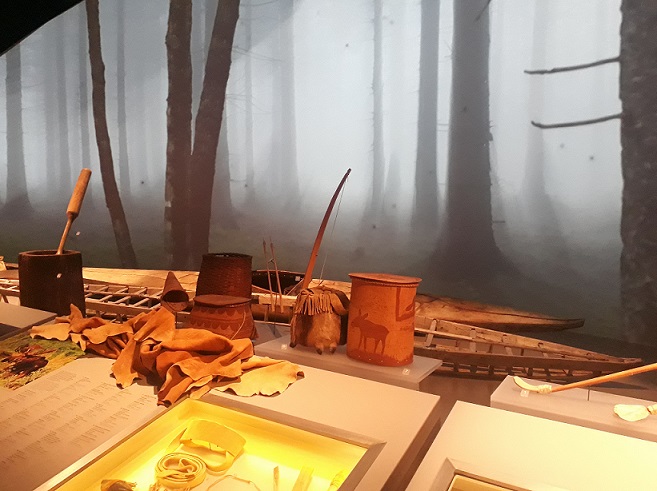
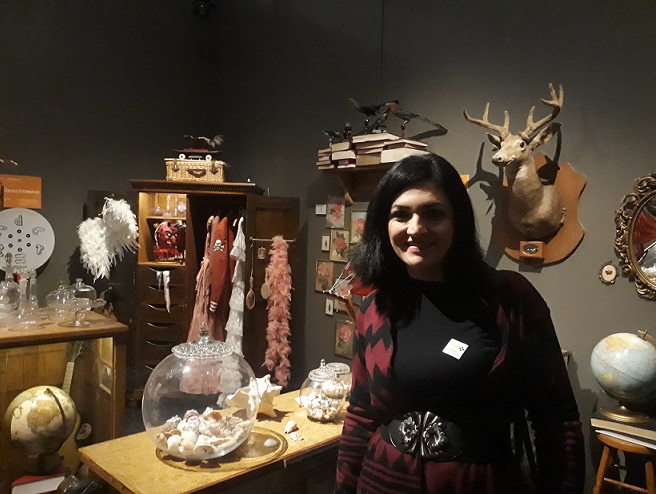
Old Objects 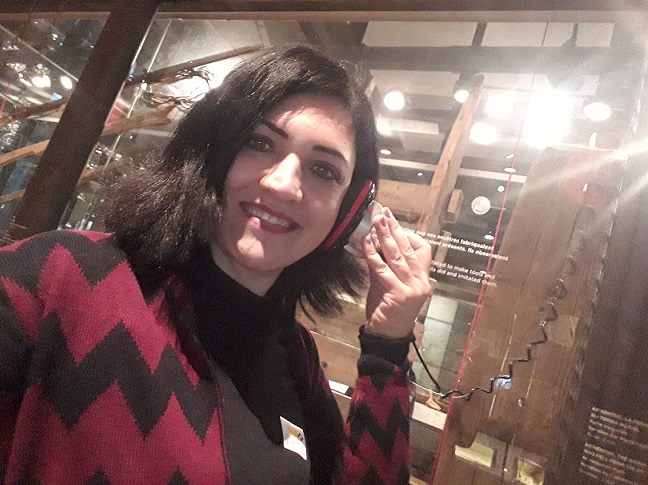
And Old Phone
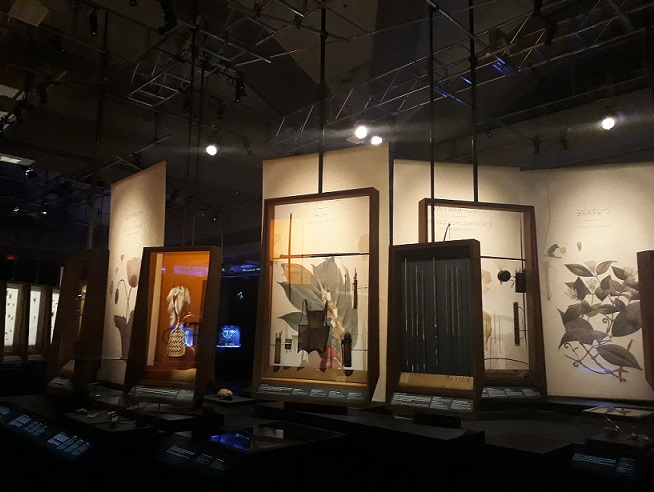
Taking advantage of the fact that we were close, when we left the Museum of Civilization, we crossed the street and went to see the Vieux Port (or Old Port), which during the 17th century received vessels with supplies and European crews and is now also a stopping point for ships of cruise! The Old Port extends along the Saint-Laurent River (or Saint Lawrenfce River) and has a marina, a ship terminal, large Bunge grain silos…


Old Port seen from the Museum of Civilization 
The Ship and Maple Leaf

In addition, the Old Port is surrounded by beautiful streets, historic buildings (such as the Customs), art galleries and restaurants. Even though it was raining we were able to enjoy the ride and still guarantee a photo with this beautiful umbrella we bought there (J’aime Quebec)!

Old Port Streets 

As I mentioned earlier, the Old Porto region has several restaurants, but there is one that is very special and was recommended by our friend Tim, Café du Monde (or World Coffee), a Parisian style bistro that is successful for over 30 years in the city and gives us a privileged view of the Saint–Laurent River and Porto.




Café du Monde, in addition to a very pleasant atmosphere, offers us excellent service and wonderful cuisine (with a vegetarian option like the one I chose), including desserts like this Red Fruit Pie and Crème Brûllée that were delicious. To know the full menu and more information about the restaurant, just access the website: https://www.lecafedumonde.com/#/



Crème Brûllée 
And Red Fruit Pie (matching my style…)
Still strolling through the Basse Ville, we went for a walk through the Quartier Petit Champlain, which is considered one of the oldest commercial districts in North America, full of shops with charming old architecture, cobbled streets and very narrow, where only pedestrians can walk enjoying the landscape and among these little streets is Rue du Petit-Champlain, which is one of the main streets in the neighborhood, it was built in 1635 and at the end of it has a beautiful Picture Frame so that visitors can take souvenir photos of this charming walk. It is worth remembering that the region went through a phase of abandonment in the late 19th century, only to be restored in the 1970s and that it has been kept in order thanks to the efforts of local traders and artisans. More information is on the website: https://www.quartierpetitchamplain.com/en/

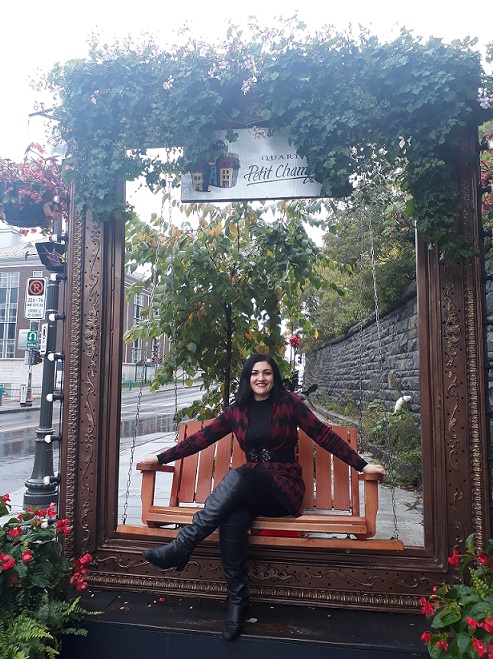

Another street that is super charming and very popular with tourists in this region is Rue Cul-de-Sac, which has beautiful umbrellas hanging and guaranteeing beautiful photos, in addition to several restaurants and shops as well. The expression “cul-de-sac” means dead end and the street received its name for having a direct connection with Porto and serving as a passage of goods between this and the city. But in 1854 this part of the port was grounded and the street was no longer dead end, however the name was kept due to its historical importance.


Another place that is also very visited by tourists and is nearby (16, Rue De Buade) is the Cathedral-Basilica of Notre Dame de Quebec, which was built in 1647, suffered two fires (1759 and 1922) but was rebuilt and declared by Unesco as Canada’s National Historic Site in 1989. When we visited the exterior it was under renovation, so I didn’t take a picture, but inside it is very beautiful, from the details in the columns, through the painting on the ceiling, the images of the saints, the stained glass windows, until reaching the Altar, which has a kind of Dome of Golden Arches with Angels and the Risen Jesus. A true work of art!!! Besides transmitting a lot of peace!



Cathedral-Basilica of Notre Dame de Quebec was built where previously it was a Chapel dedicated to Notre Dame de la Recouvrance, founded in 1633 by Samuel de Champlain (the same as the Monument I mentioned above, do you remember?). With the transformation into a cathedral, it was renamed Notre-Dame de La Paix (or Our Lady of Peace), but it still has this image of Notre–Dame de Recouvrance. May she bless us all !!! And to find out more details about the basilica just visit the website: https://www.notre-dame-de-quebec.org/basilique-cathedrale
There have been so many wonderful walks during the day that you must be wondering what Quebec night has in store for us? I can already tell you that there is a lot of excitement! In the walled part you have several options of bars and restaurants, but the outside of the wall also guarantees a lot of fun, such as Rue Grande Allée that concentrates several tourist points of the city (which I will show you later) and several bars, restaurants, clubs and pubs , like Taverne, which is located at 585 Grande Allée Est and is a lively Pub where you can taste the Poutine of Quebec (which they say is the best in Canada and was delicious) to the sound of a lot of good music !!! To know more details about Taverne just take a look at the site: http://www.tavernegrandeallee.com/


Tasting the Poutine 
Cheers!!!

Opposite the Taverne, at 600 Grande Allée Est is the Nightclub Dagobert, which is one of the most exciting pointa in the city for those who like to danc !!! The house gets crowded, so if you can arrive as soon as it opens it is worth it to make the most of it!!! For more information and opening hours just access the website: https://dagobert.ca/


Shaking at the… 
Dagobert Nightclub
After enjoying the night in Quebec, let’s go back to day trips because we still have a lot to explore in the city, starting with Citadelle or La Citadelle which is a star shaped fortress that was built between 1820 and 1850 to protect the city from an American invasion and also to serve as a refuge for the British. The Citadelle is in Old Quebec, next to Port Saint-Louis.
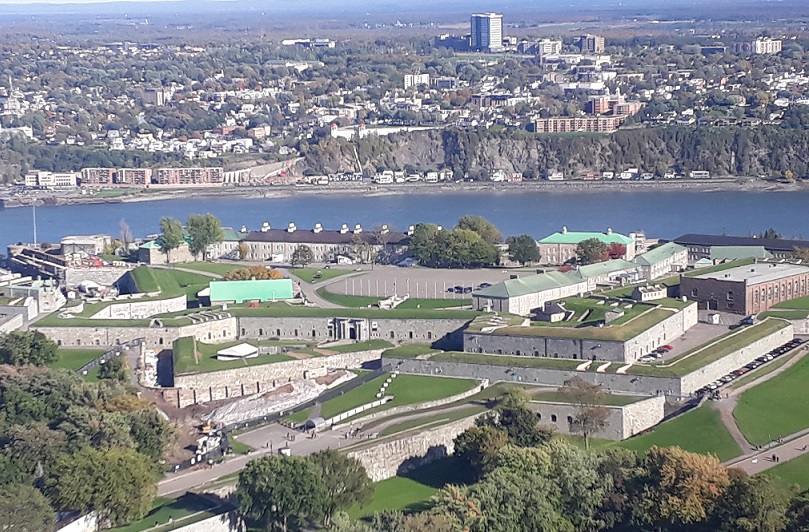
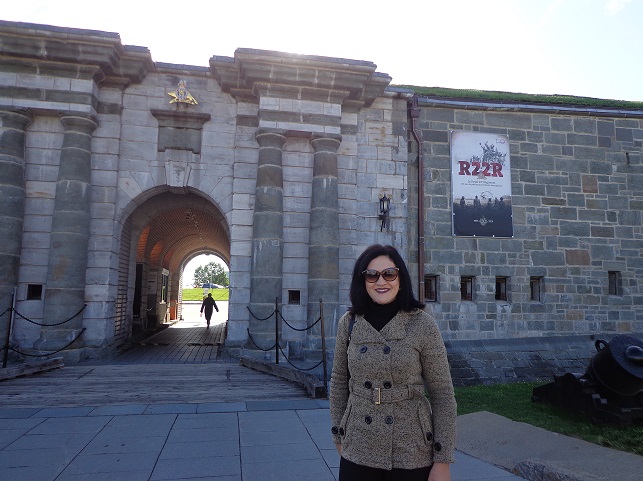
Citadelle is considered the most important British fortress in North America and is part of Quebec’s fortifications. It was declared a National Historic Site of Canada in 1980 and a UNESCO World Heritage Site in 1985. We took the guided tour and it was very interesting to learn a little about 300 years of Canadian military history. Adult tickets for this tour cost CAD$ 18, but have a discount for family, seniors and children combo. The visit lasts about an hour and the guide led us by the Mathieu Guide, which explained, among other things, the meaning of the sign “Je me Souviens” (or “I remember”) as a tribute to the members of the Regiment who were injured or killed in battles!!!


While we waited to start the guided tour, we took the opportunity to visit the Musée Royal 22E Régiment (or Museum of the 22nd Royal Regiment) that has military artifacts, such as weapons, uniforms, medals and other objects, it is not allowed to photograph in the museum, but it is worth worth going through. During the Citadelle Guided Tour, we had the opportunity to visit several Buildings, among them the Old Hospital, we discovered that Citadelle currently works as a military facility and Secondary Official Residence of the Canadian monarchy and of the Governor General of Canada, we even went through this residences.


Official Residences 

On the Citadelle guided tour we also passed by an old Military Prison, and by another Museum, which has the photo of the Goat Batisse, which was a gift from Queen Elizabeth II and is the mascot of the Regiment.

Old Military Prison 
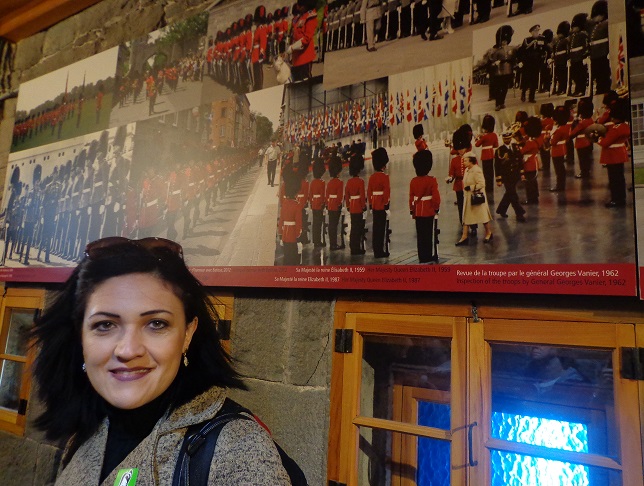

We also went to one of the ends of the star that compose the Citadelle, call of the King’s Bastion, and had a wonderful view of the Château Frontenac and the Saint Laurent River. I even posted a video on our YouTube Channel, take a look there to get a feel for this view: https://youtu.be/ejwm9wE6aoA


The visit to Citadelle is really a tour that is worth including in your itinerary. In addition to all the knowledge acquired, it is possible to see cannons and war tanks up close! And contemplate the details of the stones used for the construction of the fortress! More information is on the website: www.lacitadelle.qc.ca/en/

War Tanks 
Cannons

Next to the Citadelle is one of the accesses to the Plaines d’Abraham (or Plains of Abraham) also called Battlesfield Park because it was the site of the confrontation between the French and the English, culminating in the British victory in 1759, causing Canada to become an English colony. More details of this conflict and other stories are at the Plains of Abraham Museum (which is located at 835 Avenue Wilfrid-Laurier, but also has access inside the park).

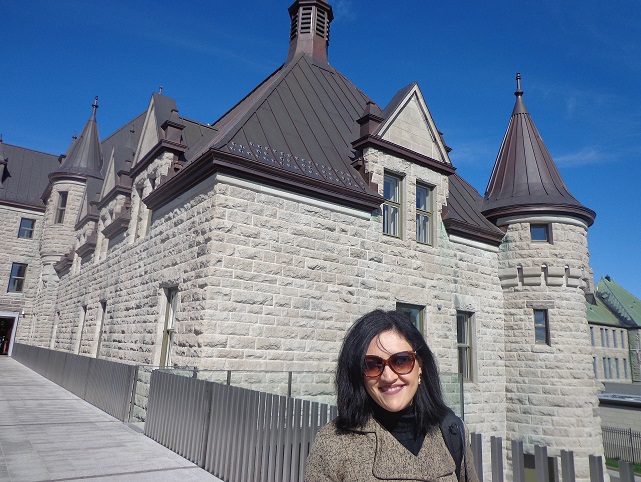
Plains of Abraham Museum 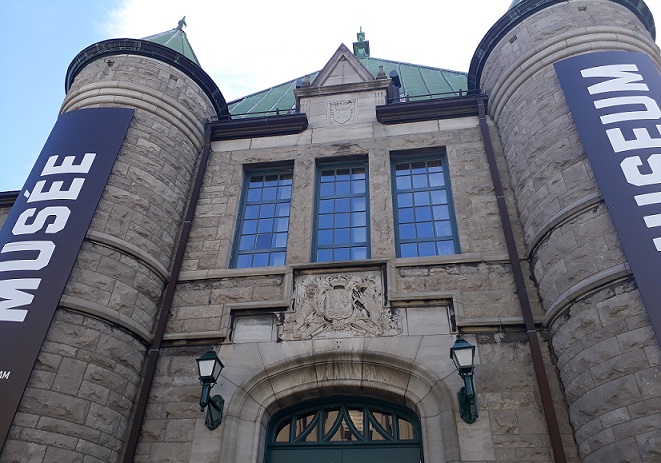

In addition to their historical importance, the Plaines d’Abraham are a huge urban park with approximately 103 hectares of plains, woods and valleys. It is a true green haven in the city, widely used for leisure, exercise, also to relax and enjoy nature. It is known as Quebec’s Central Park. More information about the beautiful park is on the website: http://www.lesplainesdabraham.ca


Another museum that is located in the Plaines d’Abraham is the Musée National des Beaux-Arts du Québec (or National Museum of Fine Arts of Quebec), which also has access to 179, Grande Allée Ouest (that night street that I mentioned that has various sights, remember?). In addition to the works inside the Museum, there is also an Exhibition in its beautiful Garden.


Exhibition in… 
Its beautiful Garden

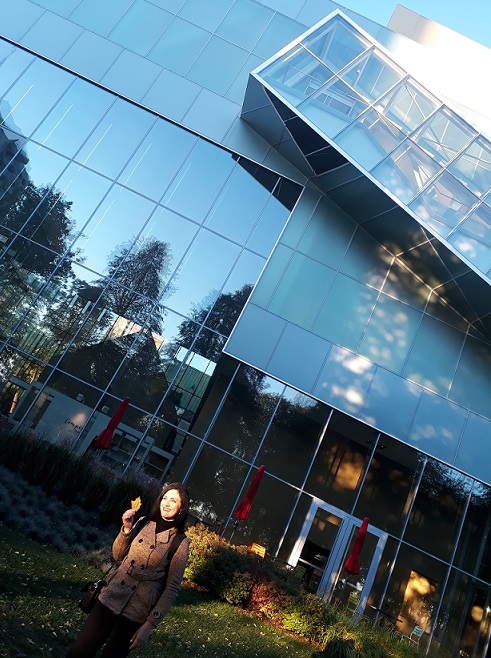
National Museum of Fine Arts of Quebec is one of the main museums in the city, with a collection of more than 40 thousand works, which keeps Quebec’s artistic memory alive, with works from the 14th century to the present, always valuing local artists . The Museum was opened in 1933, under the name of Musée de La Province de Québec, then had its name changed in 1963 to Musée du Québec, having the current nomenclature in 2002 and is a complex formed by four buildings: the Central Pavilion, which is the visitor center; the Charles Baillairgé Pavilion, which was an old prison before becoming a museum and now houses the collection of modern art; the Gérard Morisset Pavilion, which was the first building of the museum and houses exhibitions of historical art and the Pierre Lassonde Pavilion, which is the most recent building, inaugurated in 2016 and which houses contemporary art. If you have time, it is worth including in your script. To find out more details of the operation and exhibitions on display, just access: www.mnbaq.org
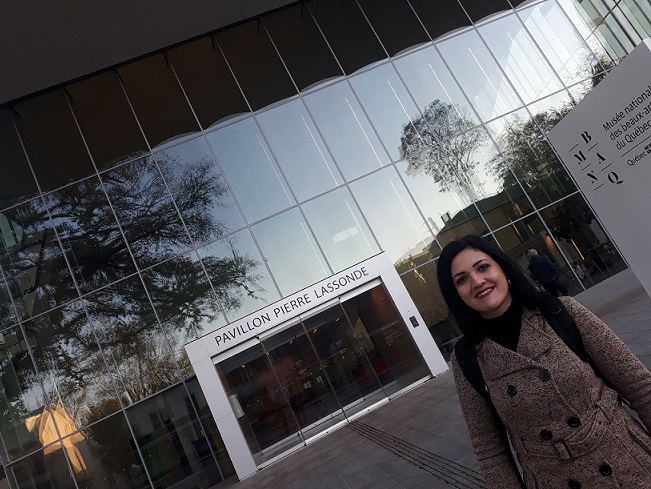



Another tourist spot in the city that draws attention is the Hôtel du Parlement (or Parliament Building), which houses the Assemblée Nationale du Québec (or National Assembly of Quebec) and was built between 1877 to 1886, with a project by the architect Eugène-Étienne Taché, in the architectural style called Second Empire or Napoleon III (which mixes several styles, from the Renaissance, through the shack, to the inclusion of modern elements). In addition to the building, its garden is also a charm.

Parliament Building is made up of eight floors, reaching a height of 171 ft in its front tower, in addition to receiving the addition of four more buildings around it, forming a huge complex. It is worth remembering that it was declared a National Historic Site in 1985 and has about 22 Statues of Historical Characters scattered both on the building’s facade and in the garden, such as the sculptures that are right at the entrance to the building: “The stop in the Forest” and “The Fisherman Nigogo”, both works by the artist Louis-Philippe Hébert.
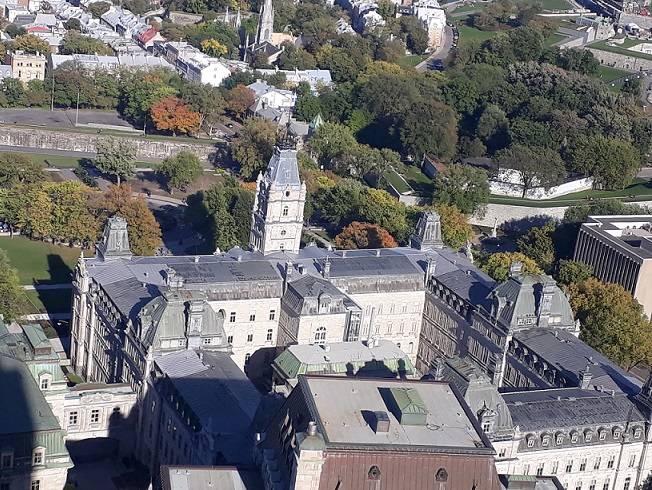



We did the Guided Tour to the Parliament Building and it was very interesting to know more details of its history, in addition to all the details of its internal architecture. The tour is free, lasts about 75 minutes and needs to be booked through the website: www.assnat.qc.ca/fr/visiteurs/visites-guidees.html . The visit starts in the basement with this beautiful view of the tower.
Continuing our Guided Tour by the National Assembly of Quebec, we passed the Entrance Hall, which has this beautiful Transparent Model that allows us to have an idea of the size of the Parliament complex. The details on the walls also caught our attention and on this floor are the conference and press rooms, in addition to the Staircase that gives access to the Blue and Red Rooms that we visited next.

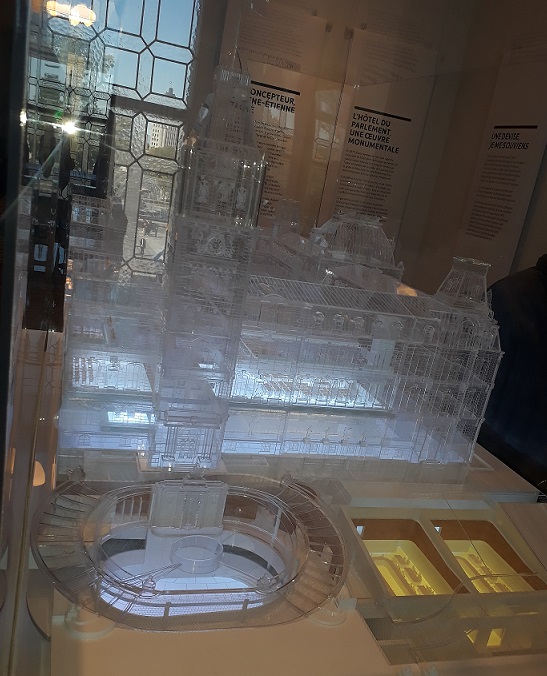
Transparent Model 
Architecture Details

Red Room is the room of the Legislative Council Chamber or the Legislative Assembly, and from 1886 to 1968 it hosted the work of the Legislative Assembly (which is now in the Blue Room) and currently serves for parliamentary committee meetings and oath ceremonies, among others parliamentary events. Its decoration is beautiful, it really fills your eyes!!!
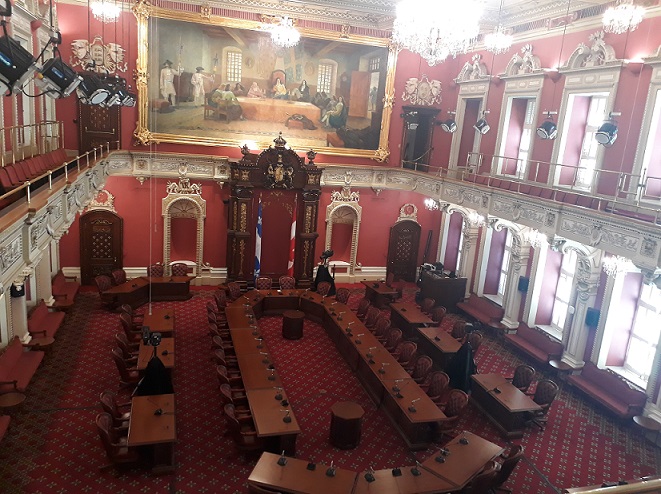
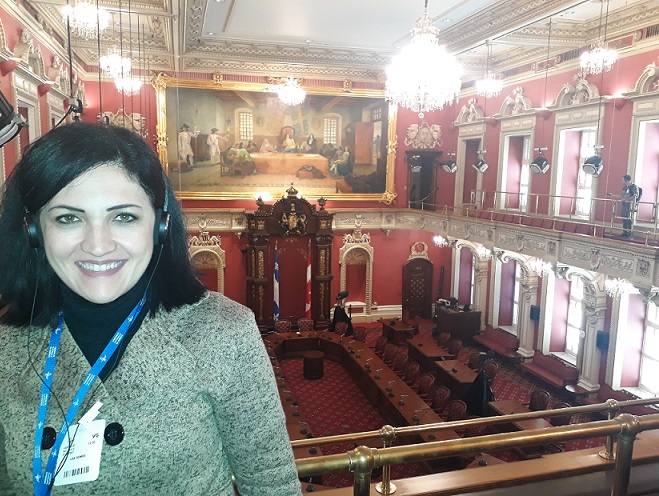

The Blue Room is the National Assembly Room, the meeting place for deputies to vote and discuss their legislative projects. Initially it was white, then it became green and since 1978 it is blue to facilitate television broadcasting. It also has a very beautiful decor.
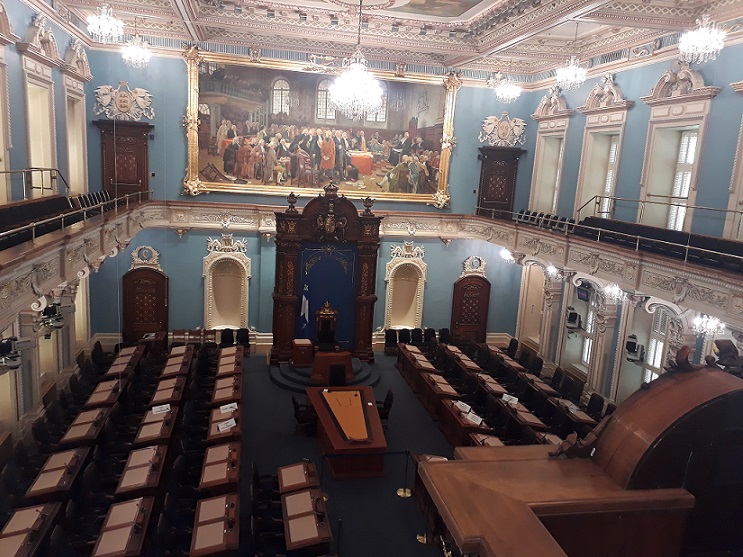


lindos.
We also visited the Library, which has an excellent structure and is open to the public from Monday to Friday from 8:30 am to 4:30 pm. Its columns and stained glass are beautiful.

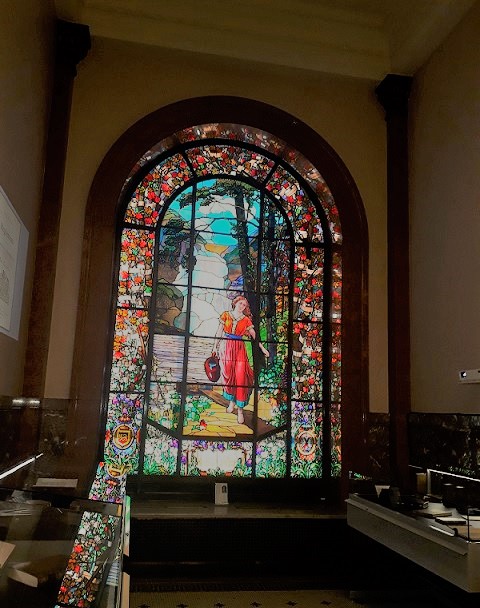
At the end of the guided tour, it is worth taking a break to contemplate the Gardens of the National Assembly, where it is possible to find several species of trees and plants that represent the diversity of Quebec’s flora, with annual and perennial plants. In addition, the Assembly has several agreements for the development of horticulture and also beekeeping on site. To know more details just check the website: www.assnat.qc.ca/fr/visiteurs/jardins.html

To further embellish the exterior of the Parliament Building, there is the Tourny Fountain, which opened in 2007 to commemorate the city’s 400th anniversary. It was a gift from the company La Maison Simons. The Fountain is about 22 ft high and 43 water jets. It was built in 1854 and in 1855 it was awarded at the Universal Exhibition in Paris. Its first installation was in Allées de Tourny (an avenue of Bourdeaux in France), hence the origin of the name, however, due to the high cost of maintenance, it was removed and sold, passing through several owners until it was found in an antique shop by Peter Simons (President of La Maison Simons), who had it restored to present Quebec City. The Tourny Fountain has several characters and symbols that refer to the marine world. If you have the opportunity, visit it also at night, because the night lighting makes it even more beautiful.
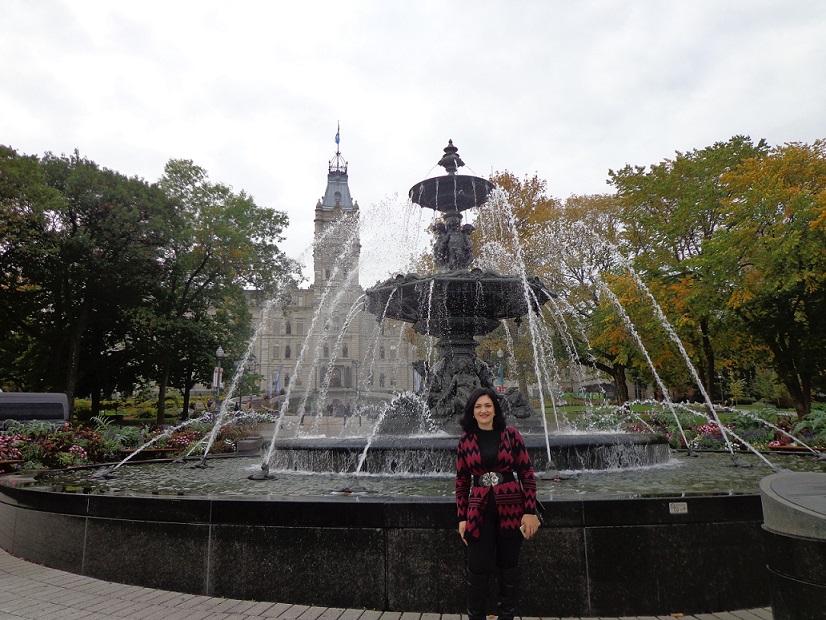


Speaking of night lighting that makes it even more beautiful, look at the charm of the Parliament Building at night.
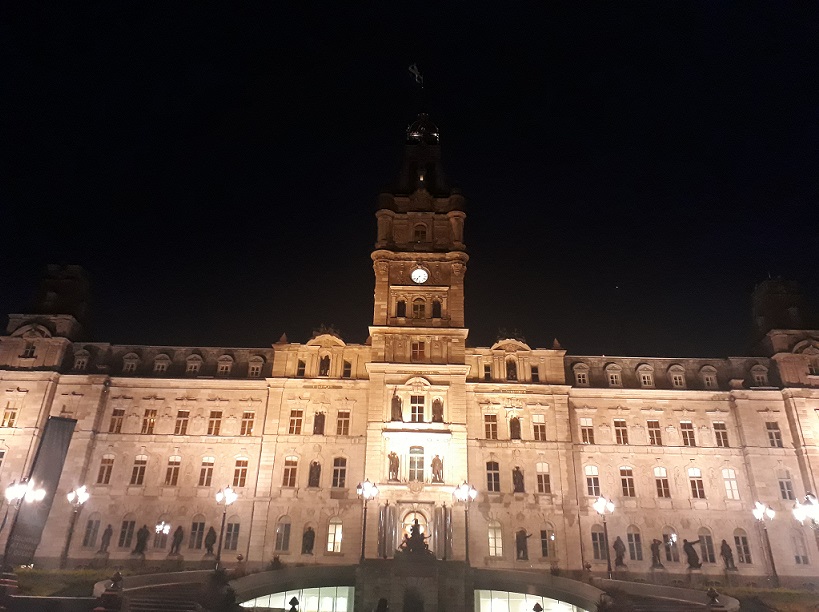
Another very interesting place in Quebec is Place D’Youville, a very beautiful Square on Rue Saint-Jean, which is famous for becoming a ski slope in winter, ensuring lots of fun for residents and tourists. And in this square is also the Palais Montcalm, which is a traditional venue for shows and concerts in the city. To know details of the schedule just access: www.palaismontcalm.ca
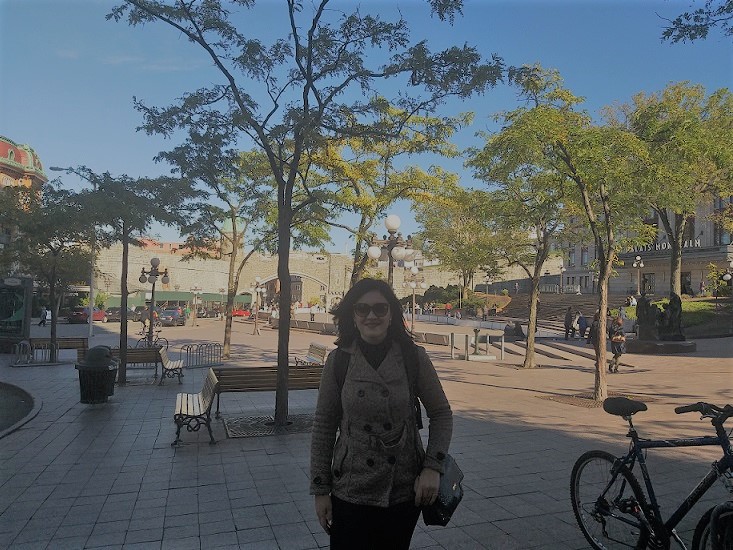
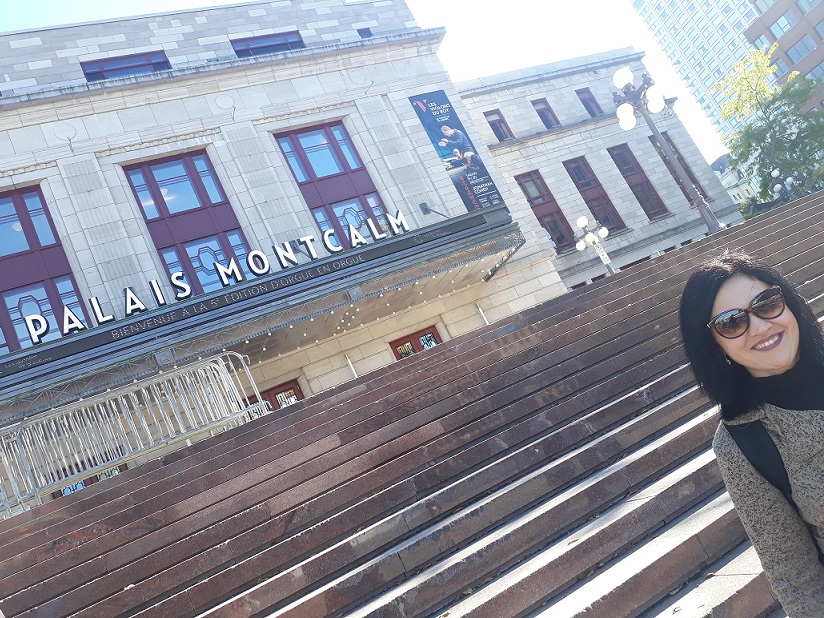
In addition to Place D’Youville, Rue Saint-Jean has many other attractions, it is one of the oldest and most lively streets in the city, it has a part that is inside the Walls, part of Old Quebec and another part that is outside. Rue Saint-Jean has many old and historic buildings, has varied shops, bars, restaurants and even the Saint–Jean Portal, which was built in 1693, has undergone several renovations, the current one being 1940. It is worth remembering that the Rue Saint-Jean located in Old Quebec becomes a pedestrian-only street in the summer from 6 pm on weekdays and all day on weekends.



Still on Rue Saint-Jean at number 634, we visited the Erico – Chocolaterie Créative – Musée du Chocolat (or Erico – Creative Chocolate Factory – Chocolate Museum), which is a small but very cozy space that tells the story of chocolate since its emergence with the Maya, passing through all its evolution and how it was conquering the palates until reaching the present time. In addition, you can enjoy the gourmet chocolates developed at the factory. To find out more information just access the website: https://www.ericochocolatier.com/


Continuing our walk along Rue Saint-Jean, at number 400, we come across the Église Saint-Jean-Baptiste de Québec (or Saint-Jean-Baptiste Church of Quebec) ¸ which was built between 1881 and 1884, designed by the architect Joseph Ferdinand Peachy in the style of the Second Empire, after a fire destroyed the previous church.

Saint-Jean-Baptiste Church was declared a Historic Monument in Quebec in 1990, and it is really beautiful, the decoration of the Altar is quite striking and the Church pays homage to Saint John the Baptist, who is the patron saint of French Canadians. More details and information are on the website: https://www.saintjeanbaptiste.org/


Details of Organ 
And Altar
In addition to Rue Saint-Jean, another one that is very famous in the city is Avenue Cartier, which is frequented by both tourists and locals, who come to it both in search of luxury boutiques, as well as fun and entertainment, since this avenue concentrates cinema, bars, restaurants and has a very lively nightlife !!! If you have a little time, it is worth taking a walk there!!!

Strolling along Avenue Cartier 

This tour now is for you who, like me, love height and like to have a privileged view from up there. We will visit the Observatoire de la Capitale (or Observatory of the Capital), which gives us a wonderful 360º view of Quebec City and is located on the 31st floor of the Marie–Guyart Building (1037, Rue de la Chevrotière).
The view from the Observatorie de la Capitale is really charming and has interactive explanatory panels, which in addition to showing us the highlights of that observation point, also tells us about its history. It was possible to see the Parliament Building, the Château Frontenac, the Citadelle, among many others. Just take a look at this video that I posted on our youtube channel to see what a beautiful sight: https://youtu.be/sFfjAknMno0
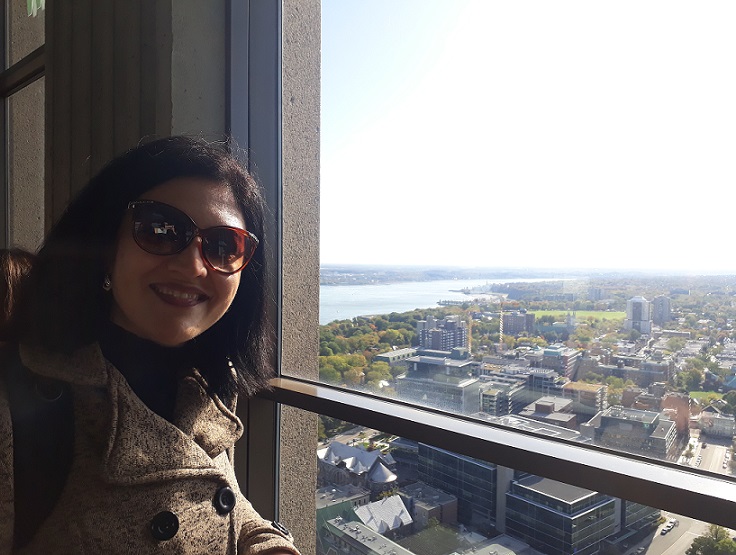

Citadelle 
Parliament Building

Tickets for the Observatoire de la Capitale cost CAD $ 14.75 for adults, but are discounted for students, seniors and cildren. For more information and opening hours just access the website: https://www.observatoire-capitale.com/
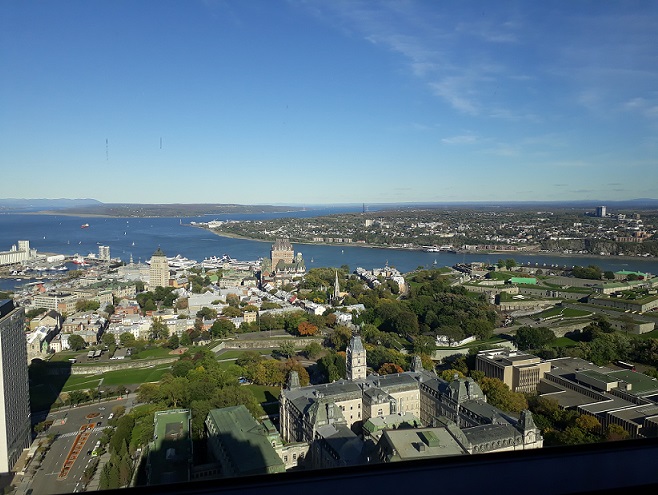
And to end our tour of Quebec, we chose a beautiful place: the Revolving Restaurant Ciel! Bistro Bar Tournant, located at the Hotel Le Concorde (1225, Place MontCalm, on the corner with the Grande Allée Est). Since we arrived in the city and we already saw the building of this hotel, my sister and I were delighted with its beauty and curious to know what it was, so we informed ourselves and found out that in this round part there was a revolving restaurant, so we already contacted to to know how it worked and we scheduled to go there before going to the airport to return to Toronto.

Ciel Restaurant! Bistro Bar is on the 28th floor of the Hotel Le Concorde and was opened for the Christmas celebrations of 2014. The atmosphere is very pleasant and the complete tour lasts about an hour and a half, enough time to have a drink, enjoying this incredible view. Worth the visit!!!
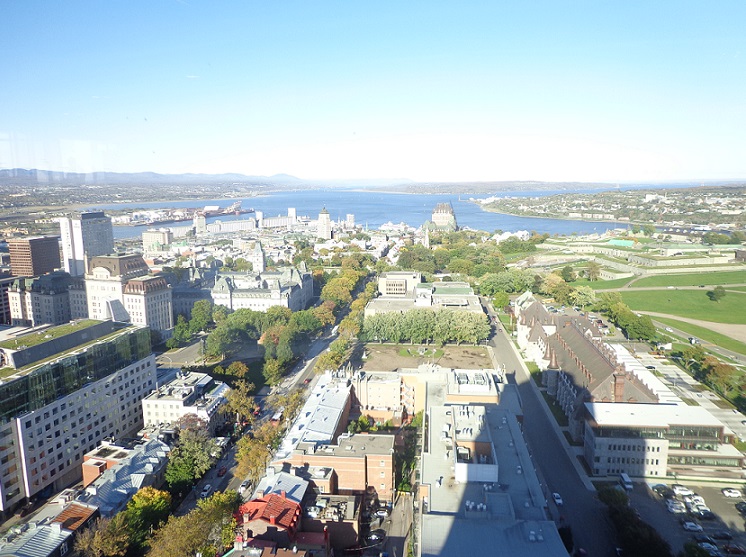
Incredible View… 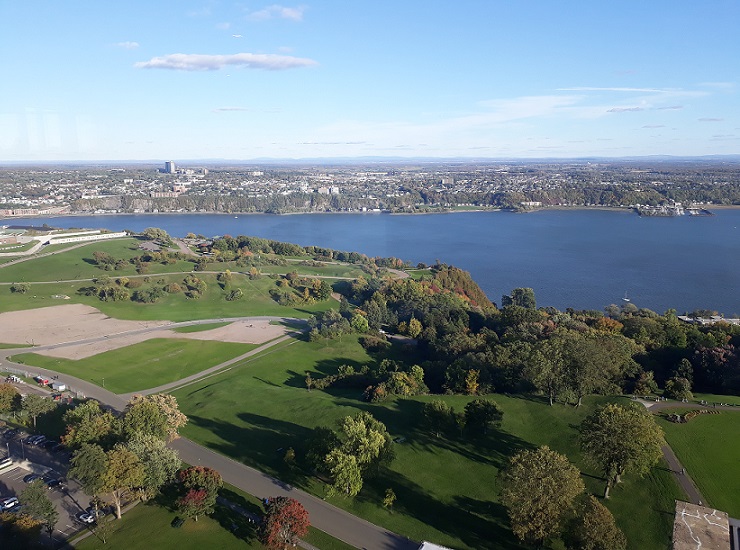
from Ciel!!!

To find out more about the menu and also Ciel! Bistro Bar‘s opening hours just take a look at the website: https://www.cielbistrobar.com/#/ . And with this toast in this enchanting view, we say goodbye to Quebec and also Canada with a See You Soon!!!

I will end this post here and our journey through Canada, thanking you wholeheartedly for your company!!! If you haven’t seen it yet or want to remember how that trip was from beginning to end, just click on the side, in the experience you want to know, from Toronto, through Niagara Falls, Ottawa and Montreal.
And remembering that if you liked this post, share it with your friends so they can have fun too, and follow our social medias to know firsthand the news: Instagram (@cadaviagemumabagagem) and Facebook (https://www.facebook.com/cadaviagemumabagagem/) and subscribe to our Youtube channel (“Cada Viagem um Bagagem”): https://www.youtube.com/channel/UC5Q29-MYuWjvPH__wWhF42A


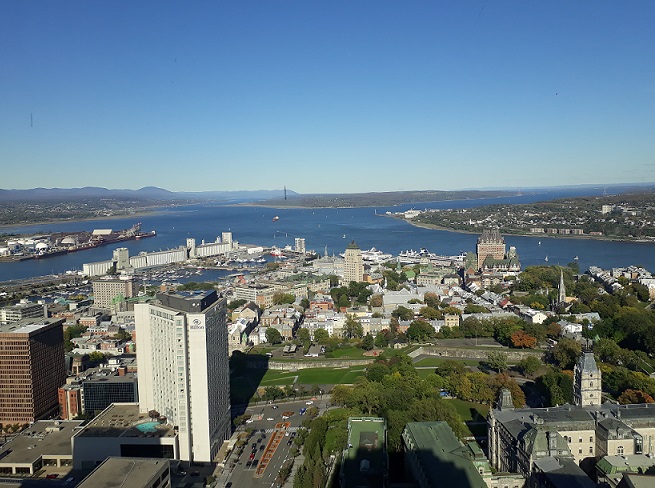
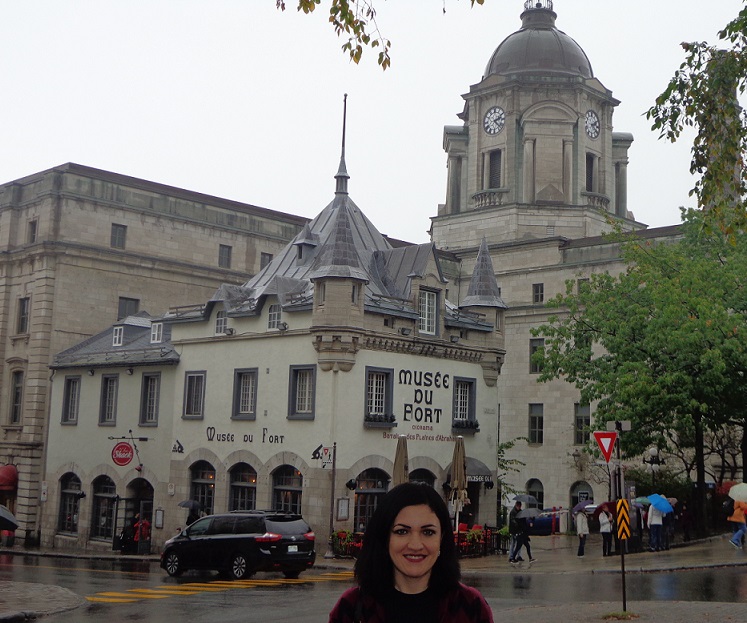
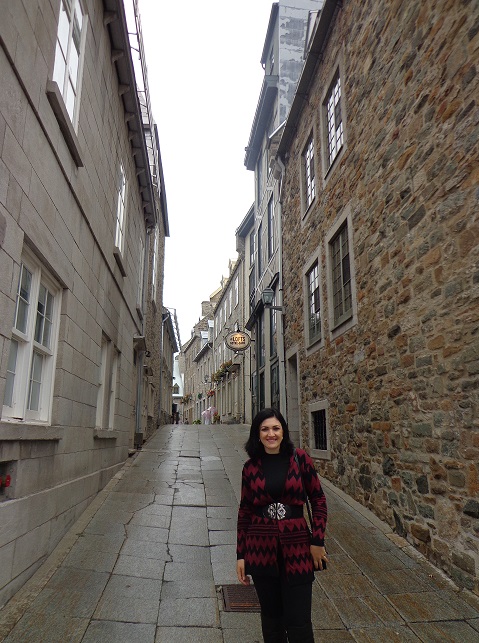

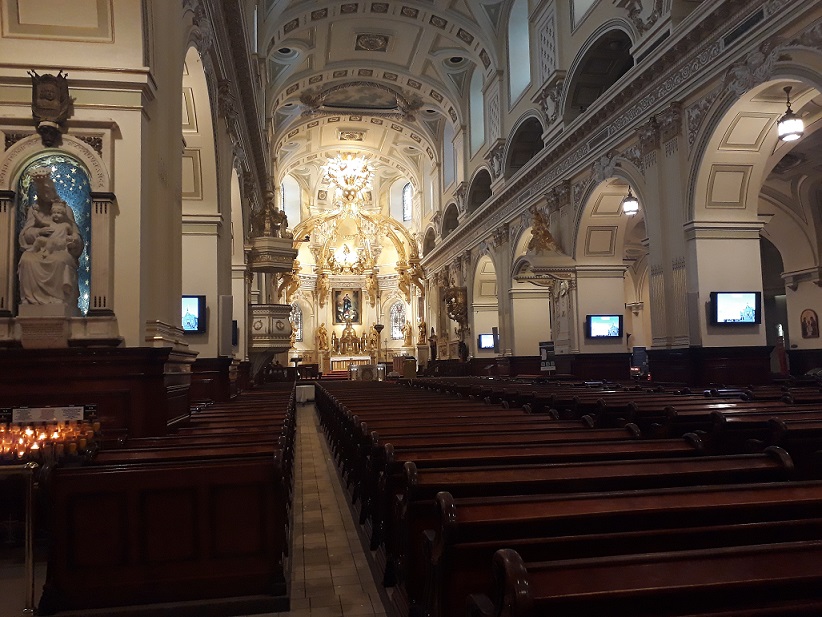
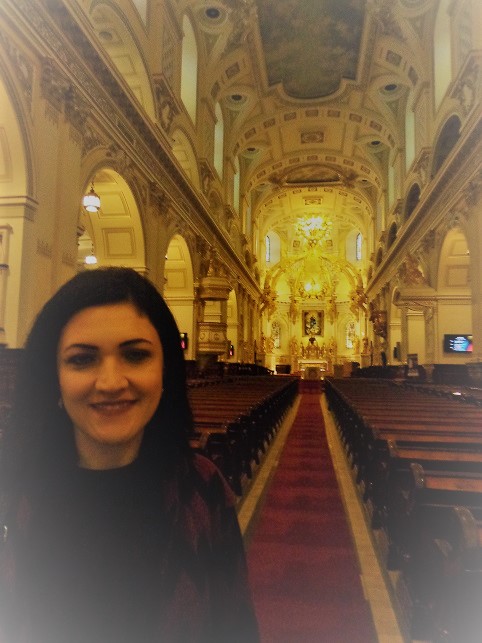
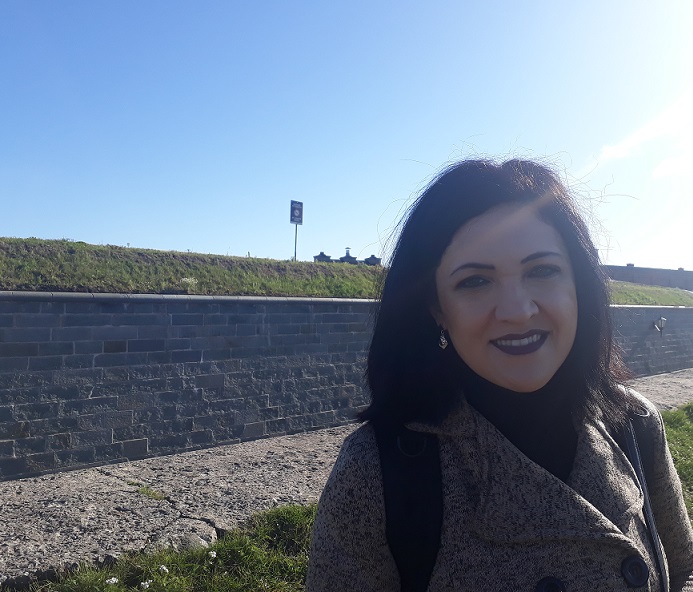
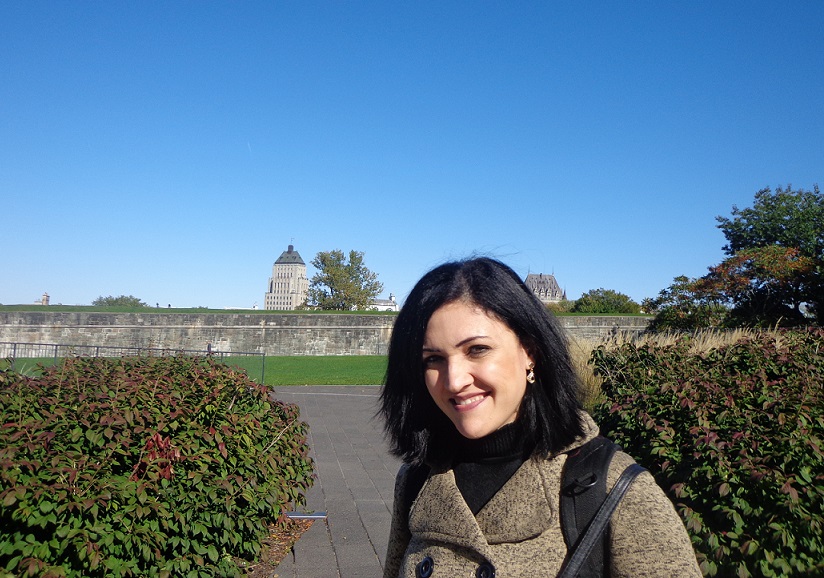

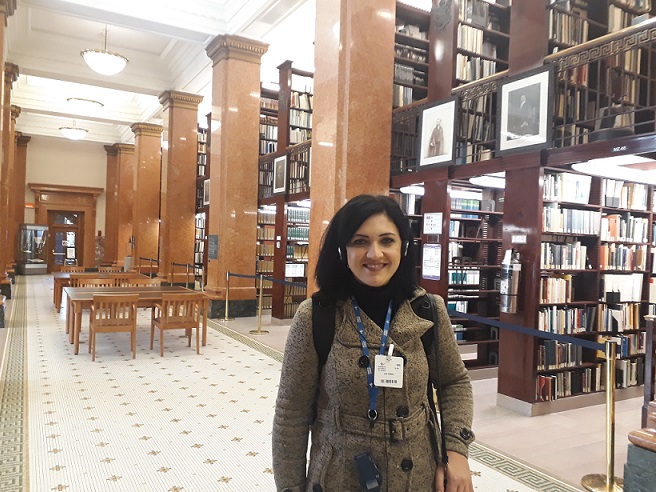
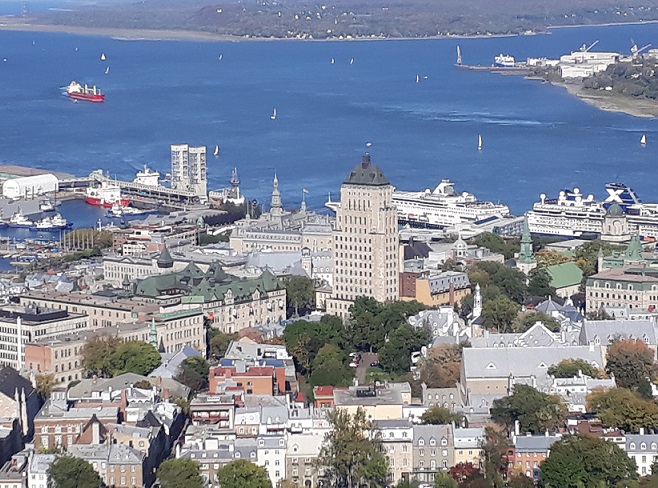

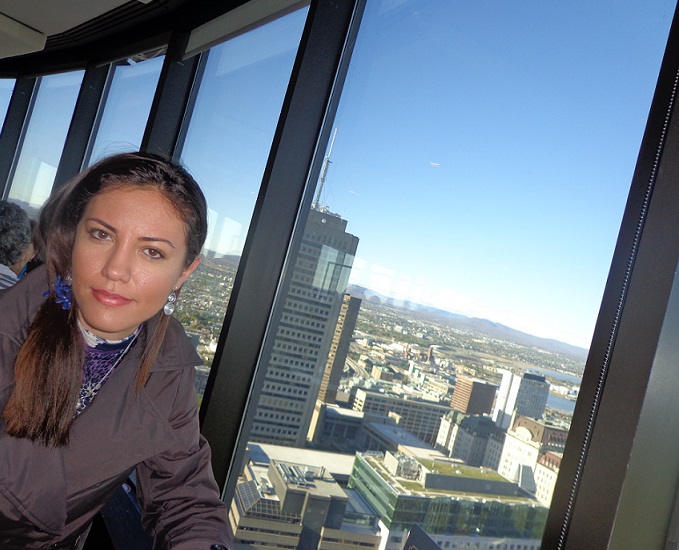
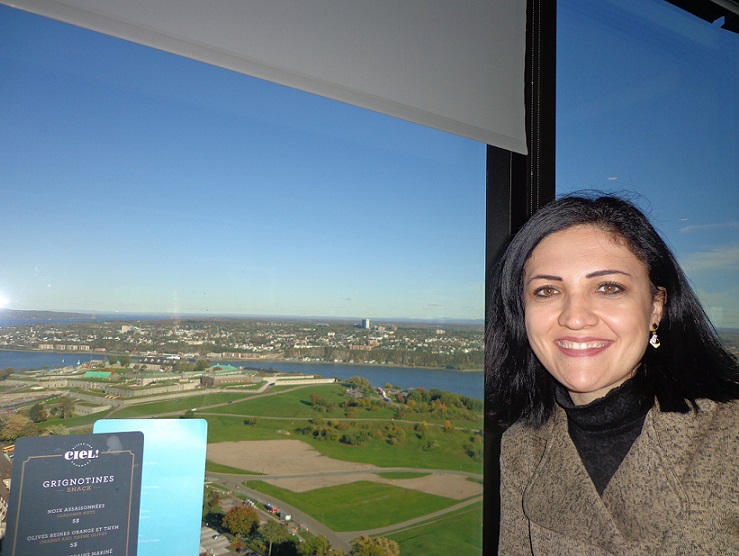



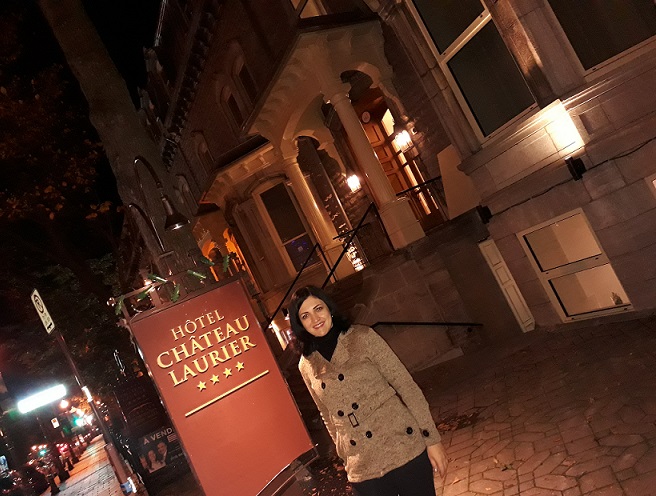
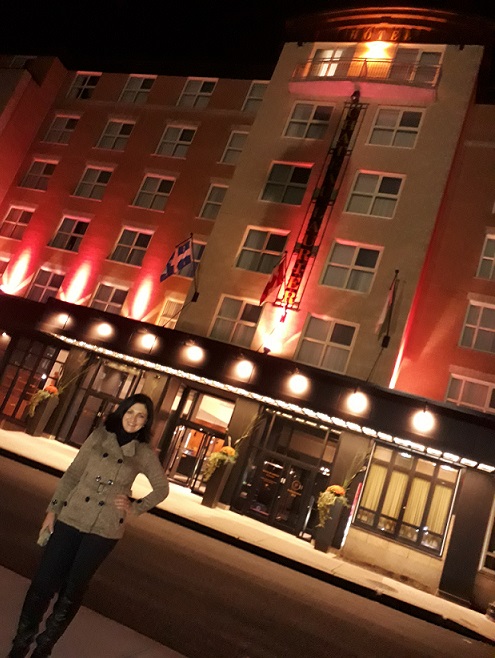

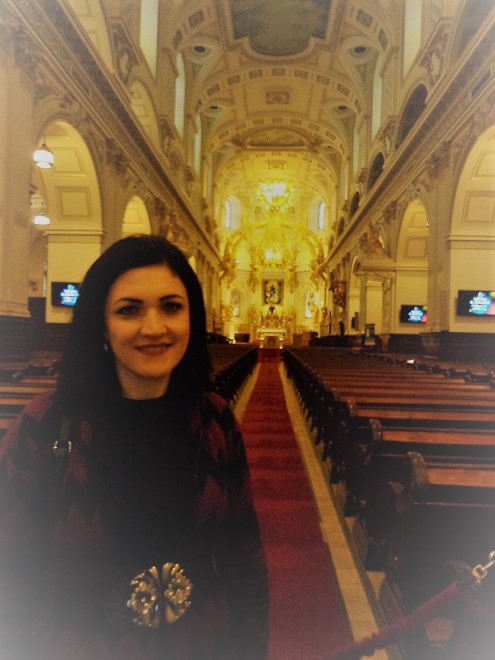
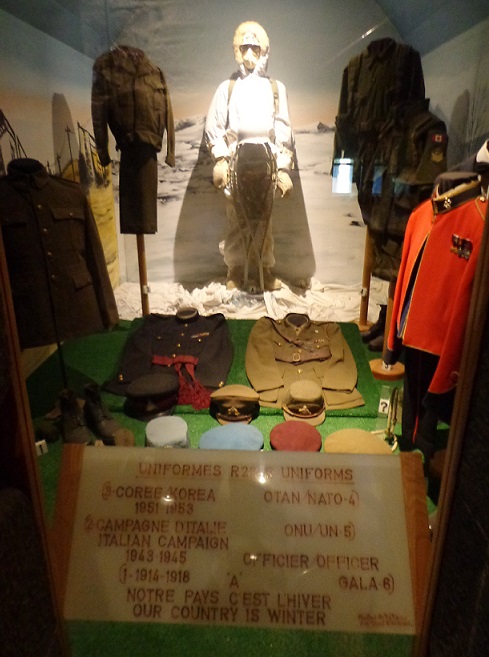
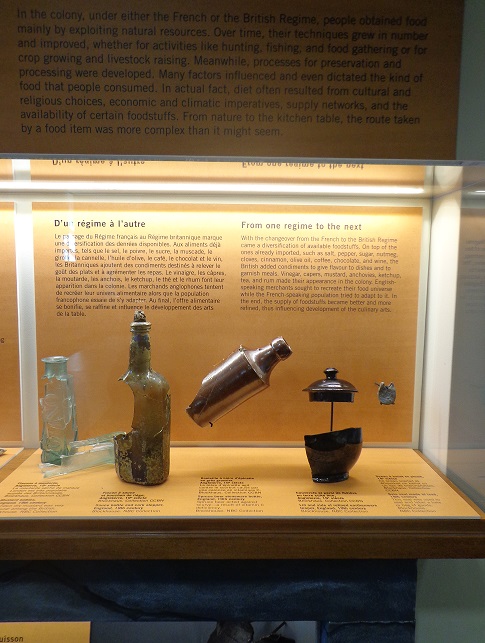
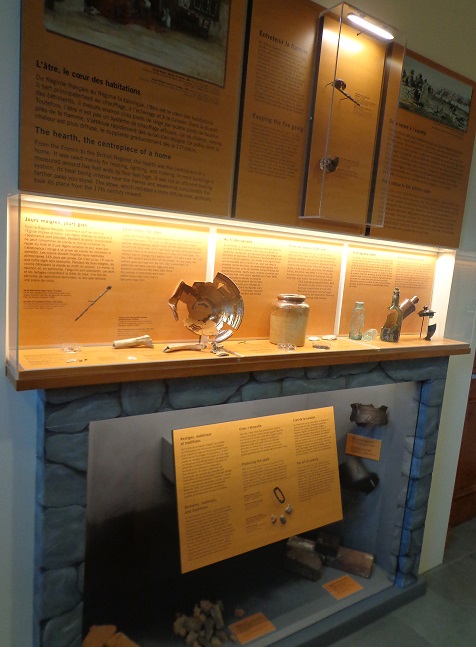
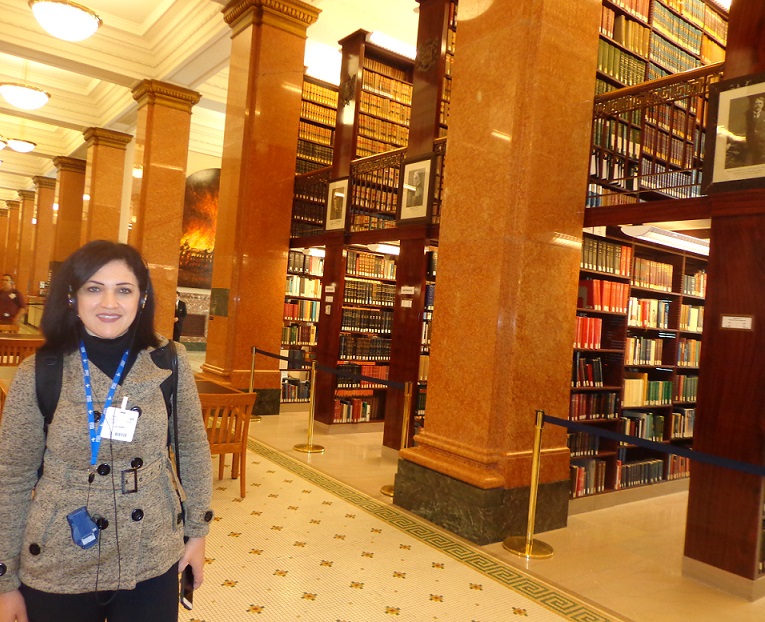
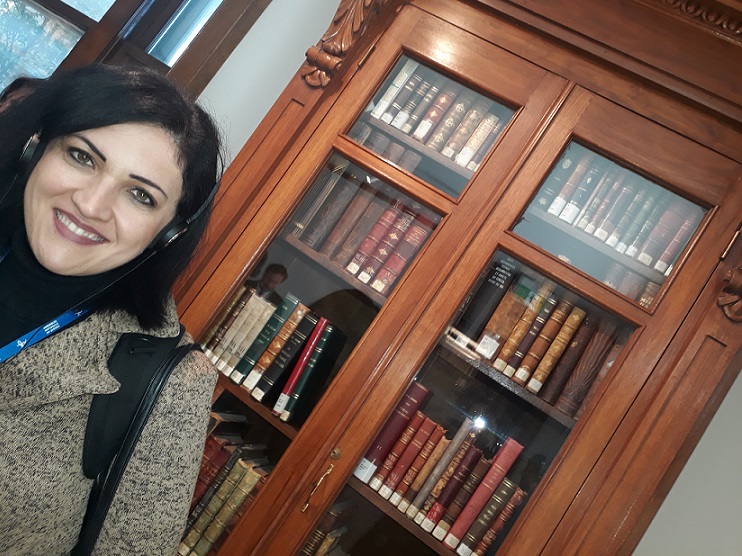
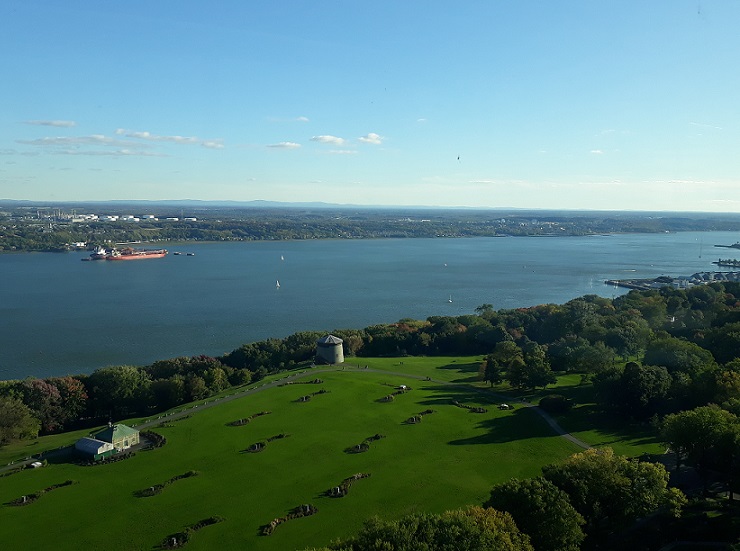
Adorei as fotos, as histórias é tudo mais! Realmente Quebec é mágico, é vivenciar tudo isso é maravilhoso.
Lu e Anne… obrigado por compartilhar estas emoções, muitas vezes falta palavras para descrever o lugar, mas vocês conseguiram achar estas palavras é encaixa -las perfeitamente
Bjaum!
Muuuito obrigada, Alan!!!! Ficamos muito felizes que tenha gostado da postagem e tenha revivido sua viagem!!!! Quebec é mágico mesmo, nos encantamos por lá!!!! Bjs